Visiting the Stunning Landscape of Cappadocia, Turkey

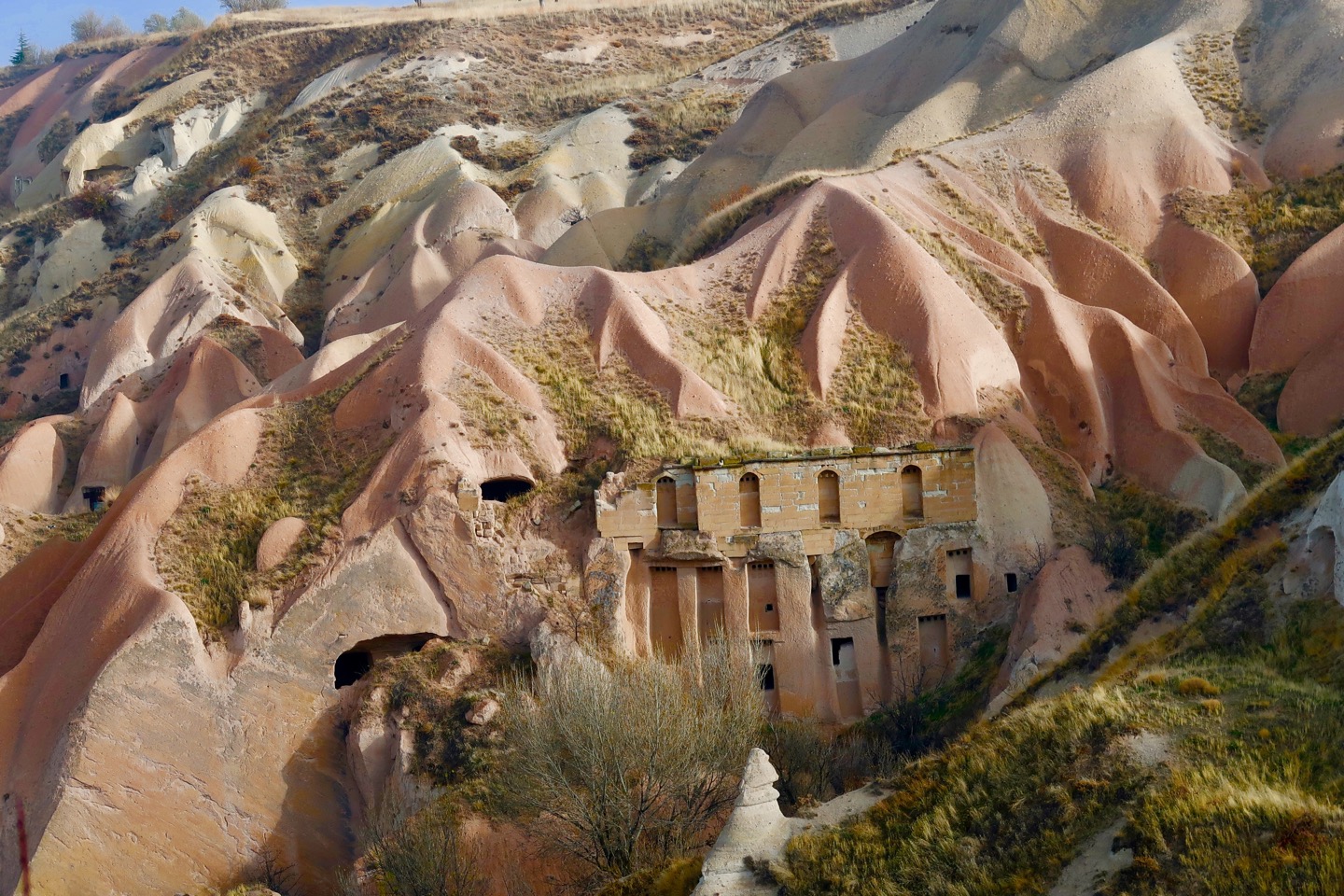
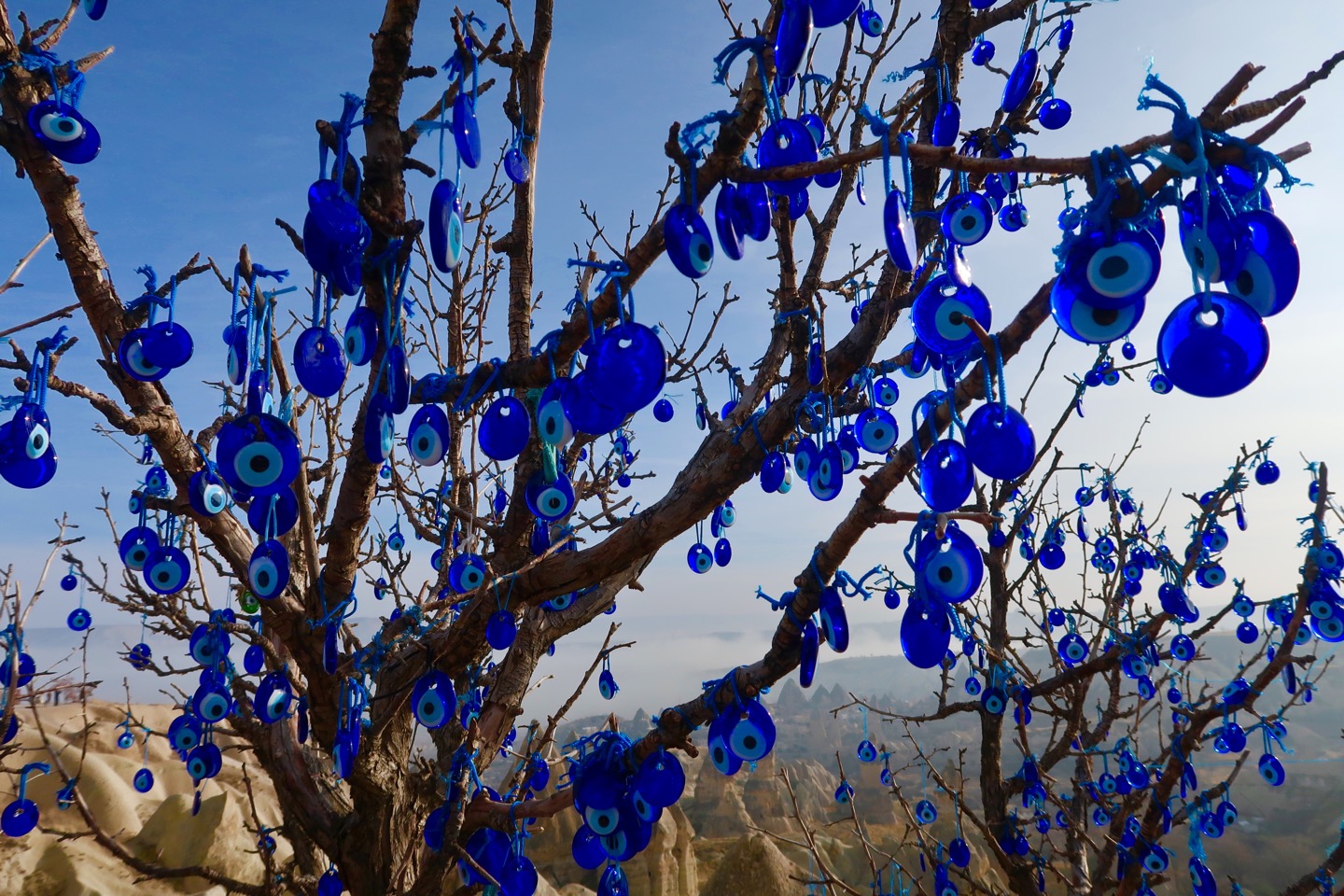
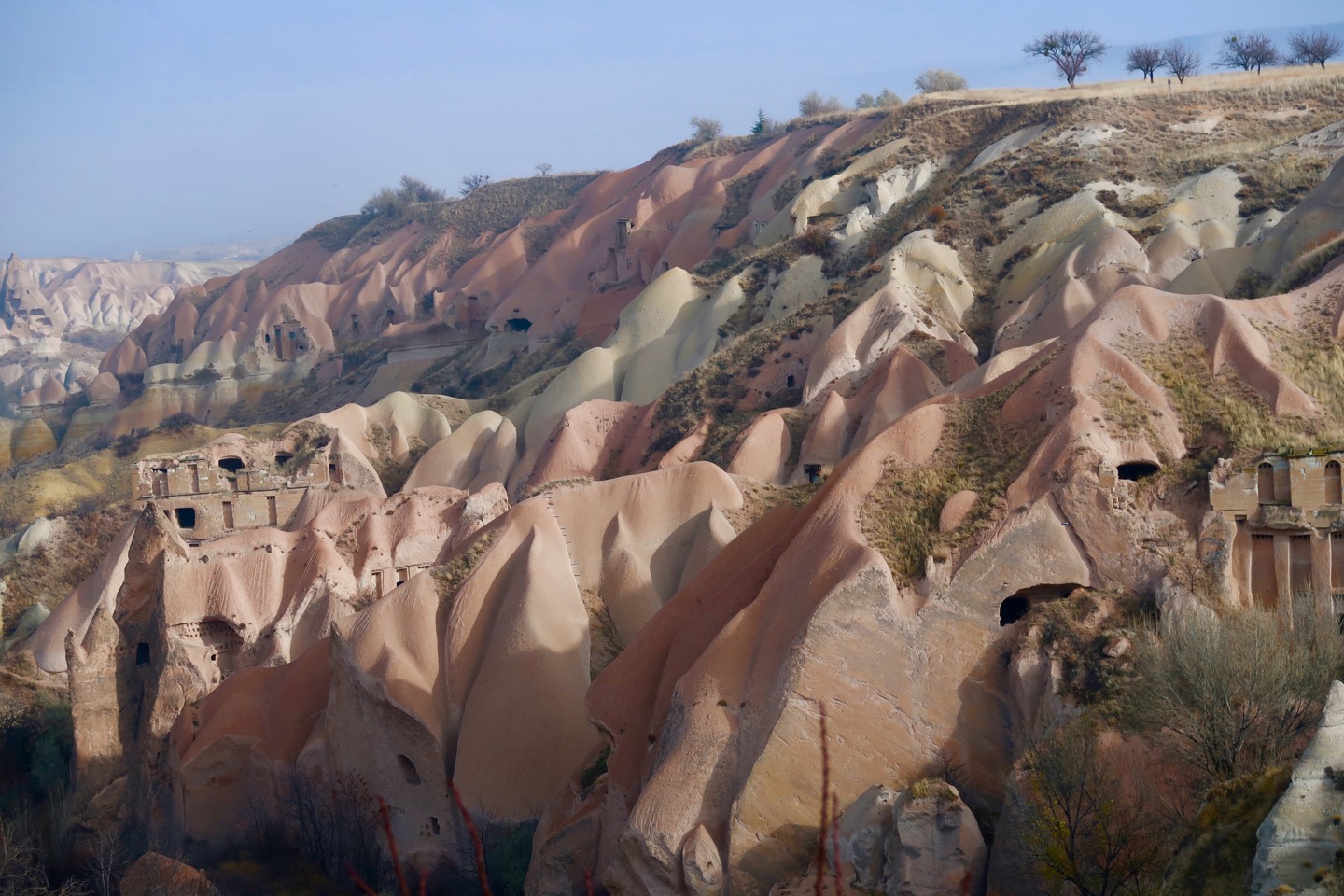
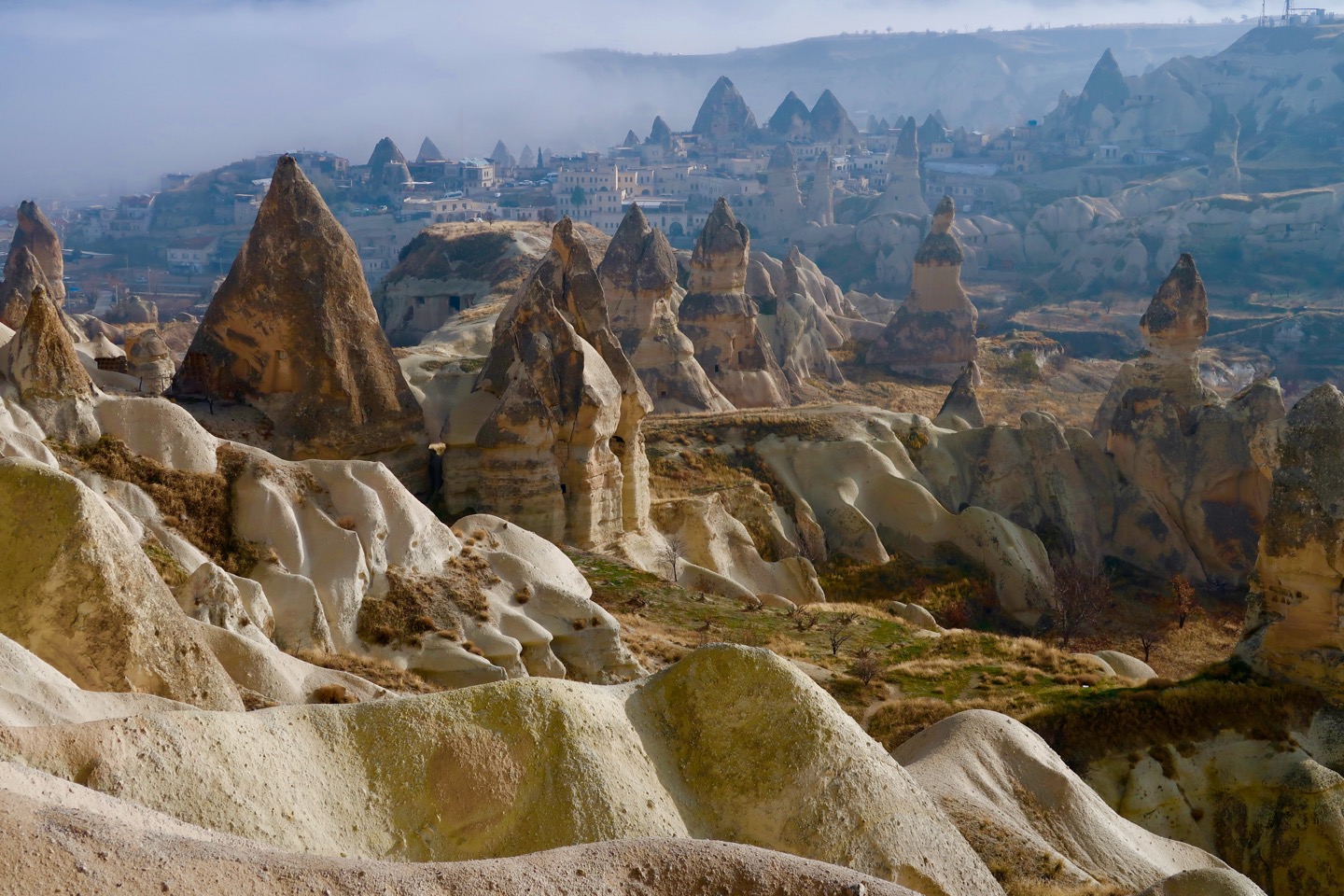
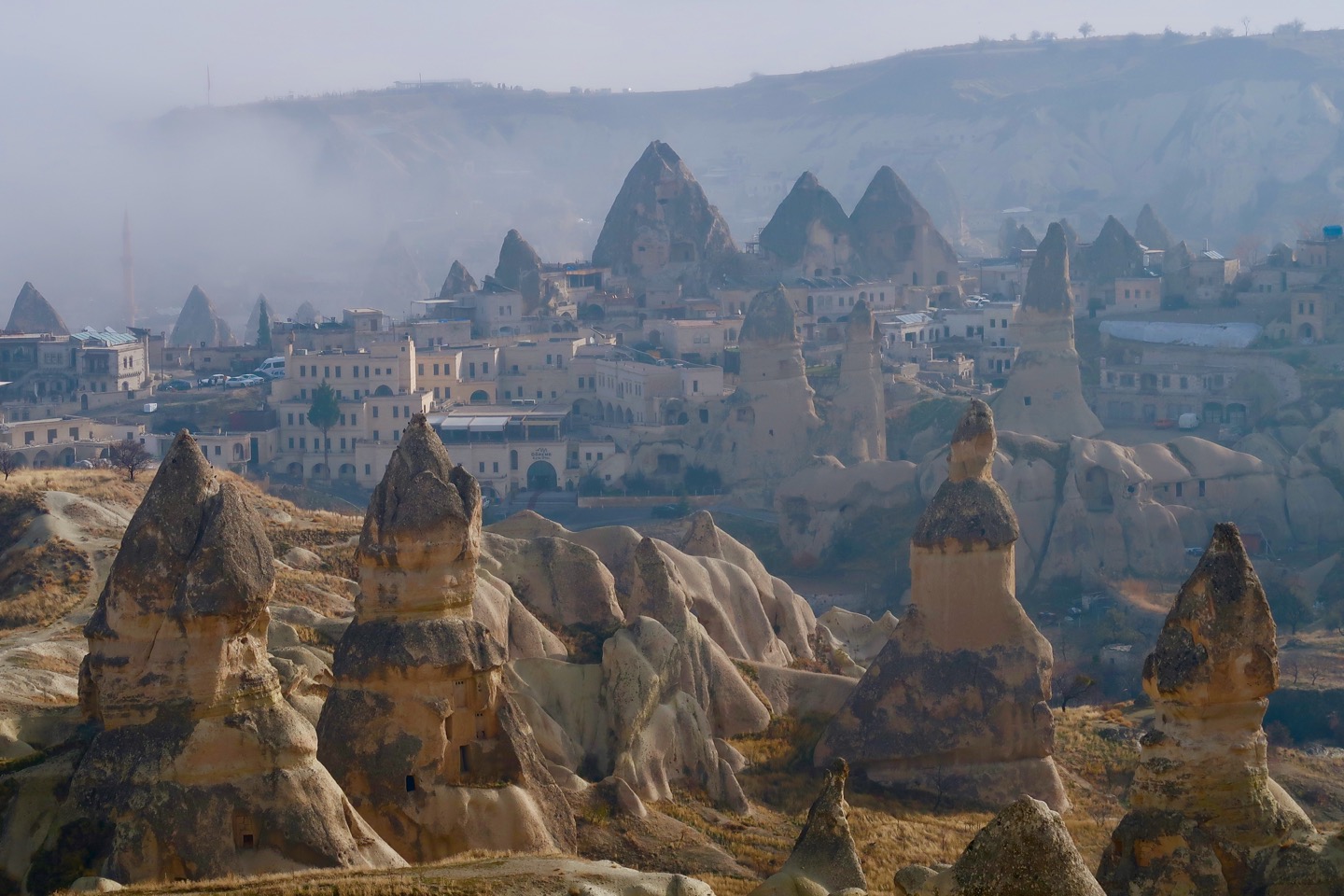
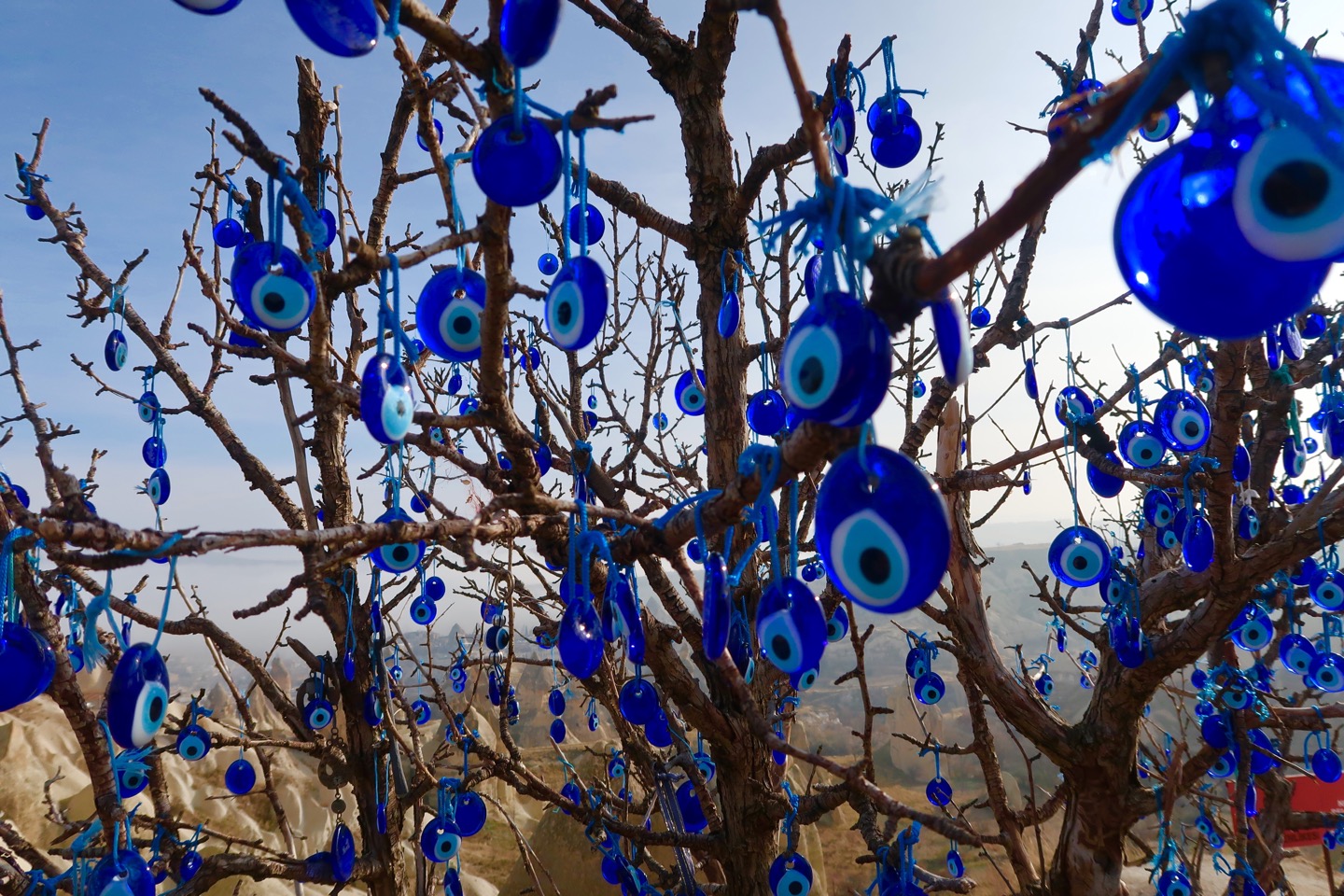
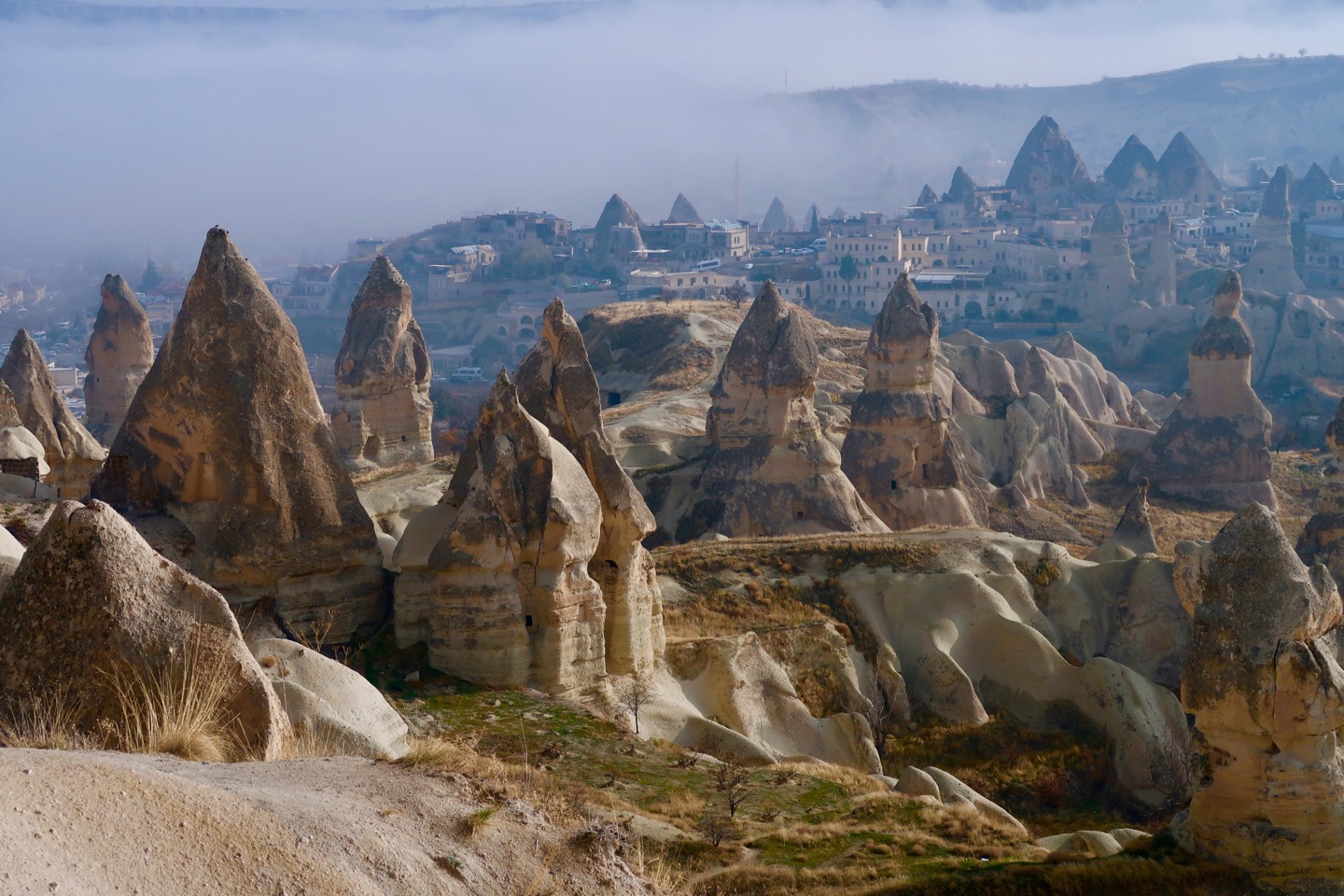

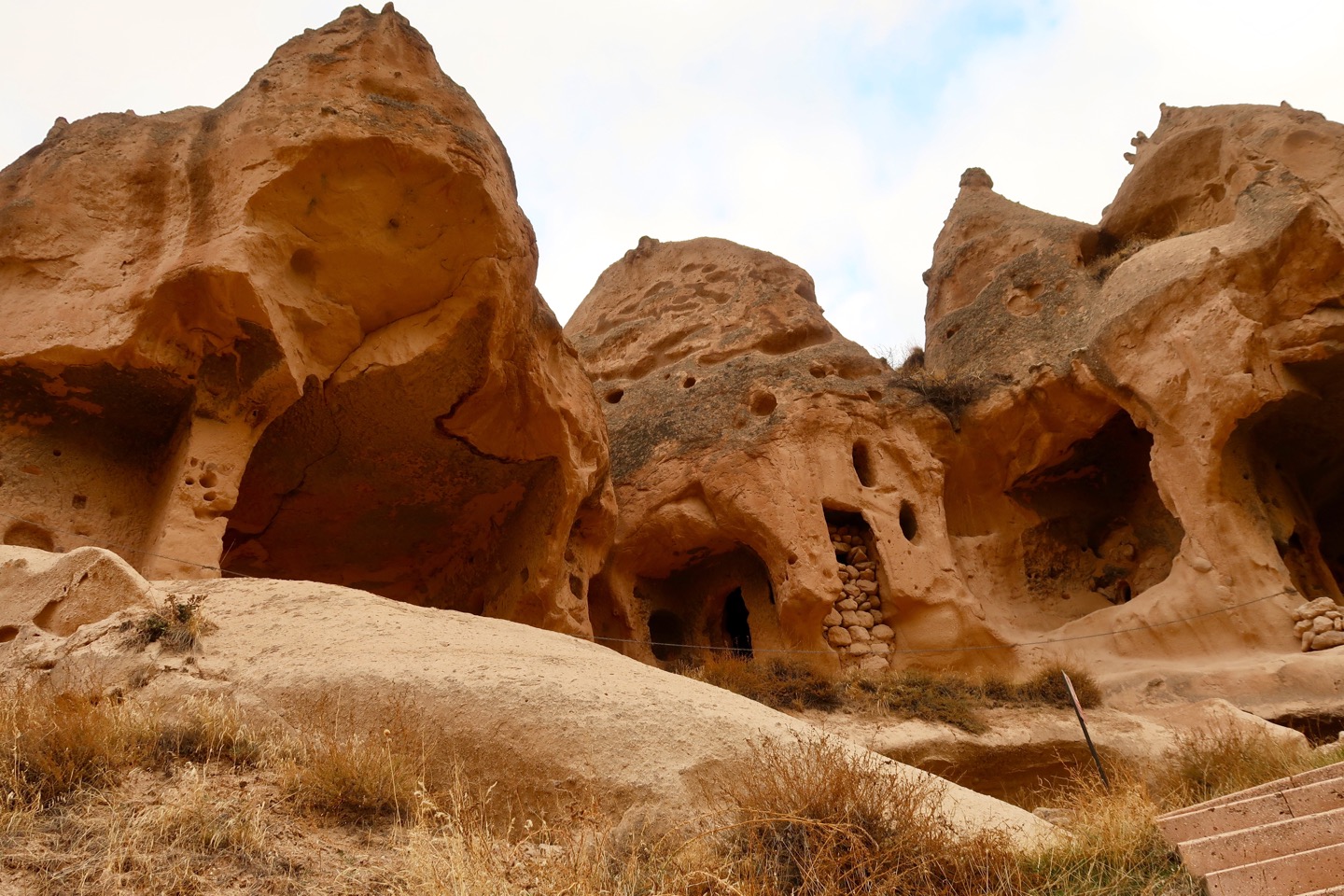
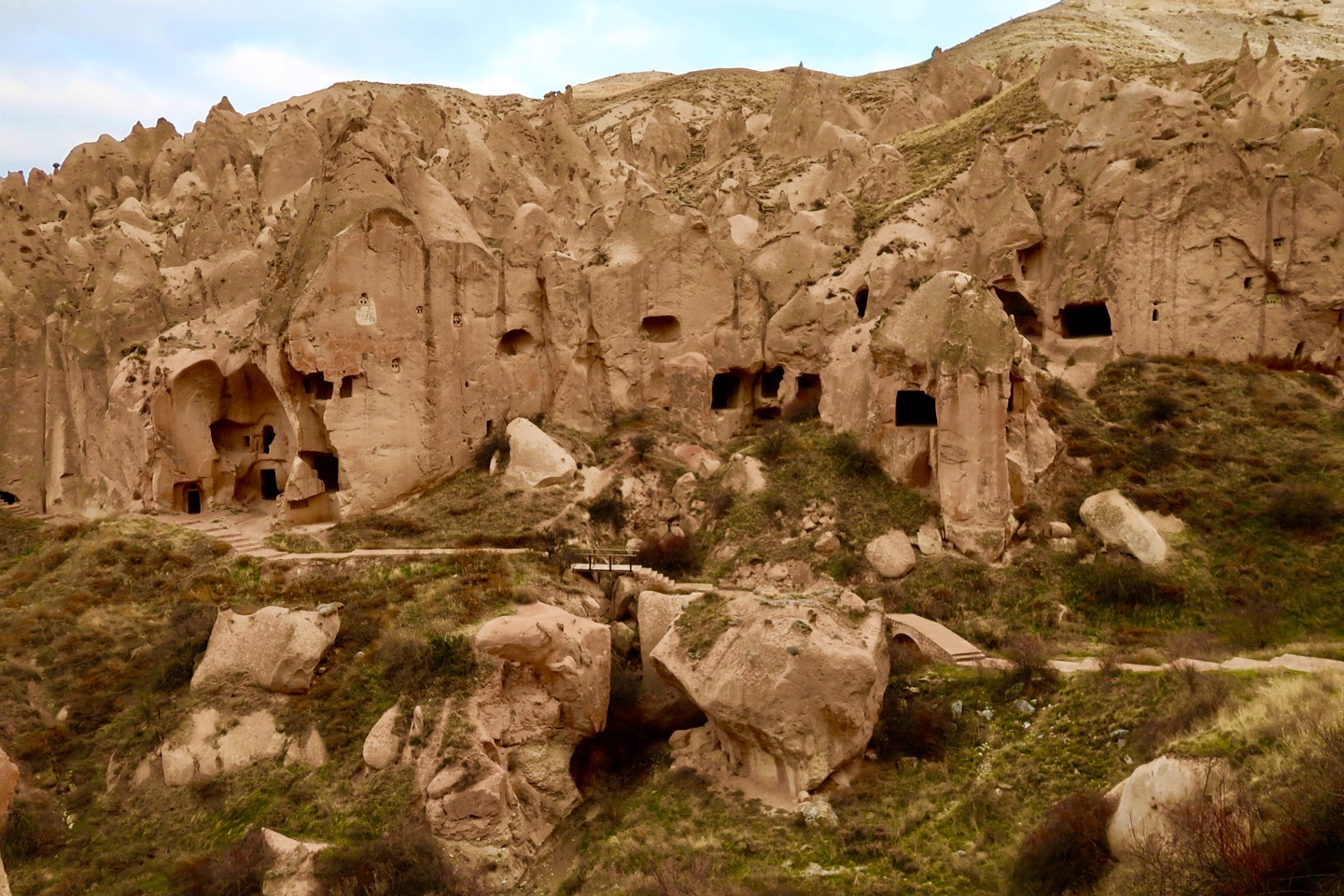
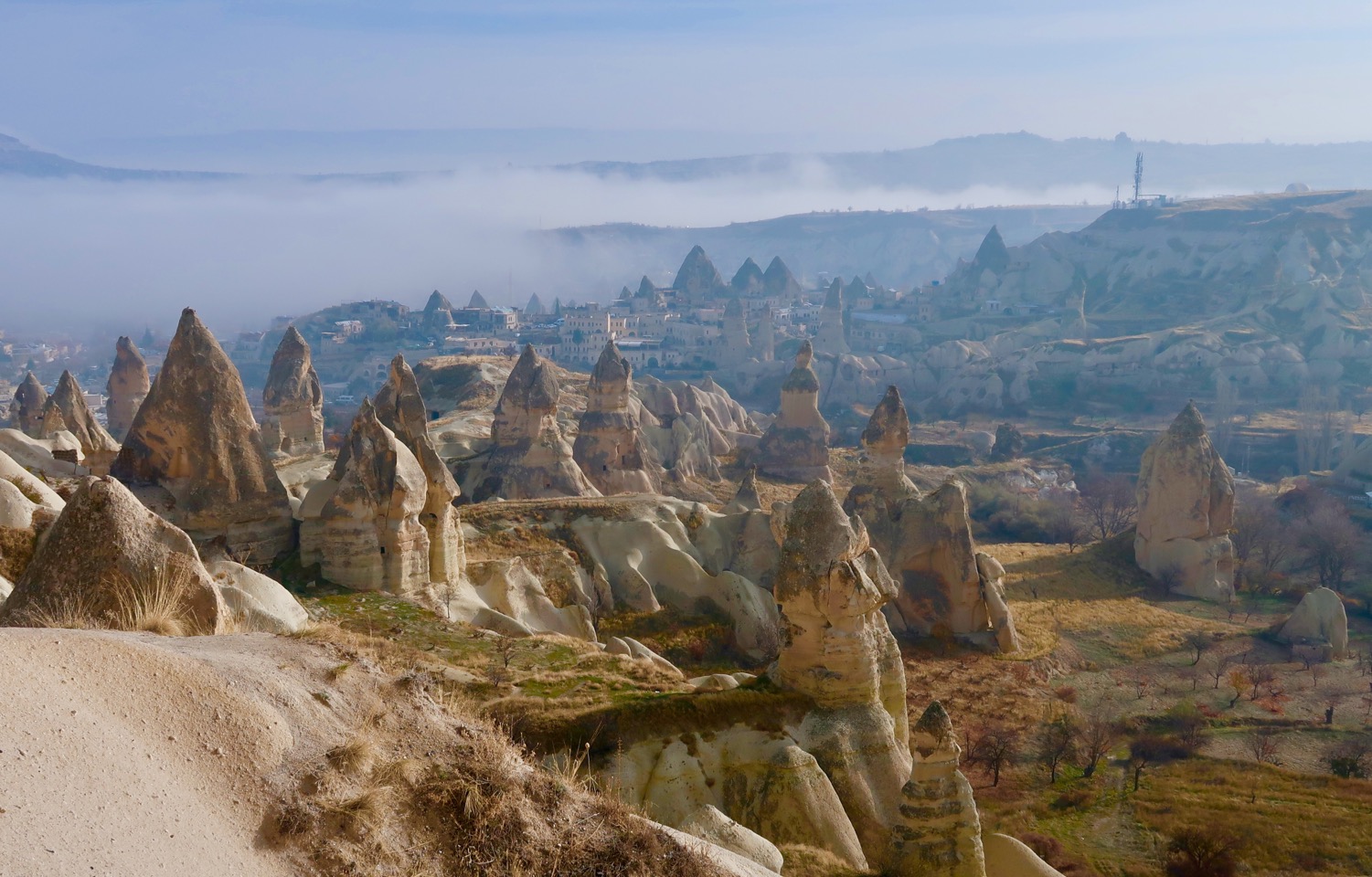
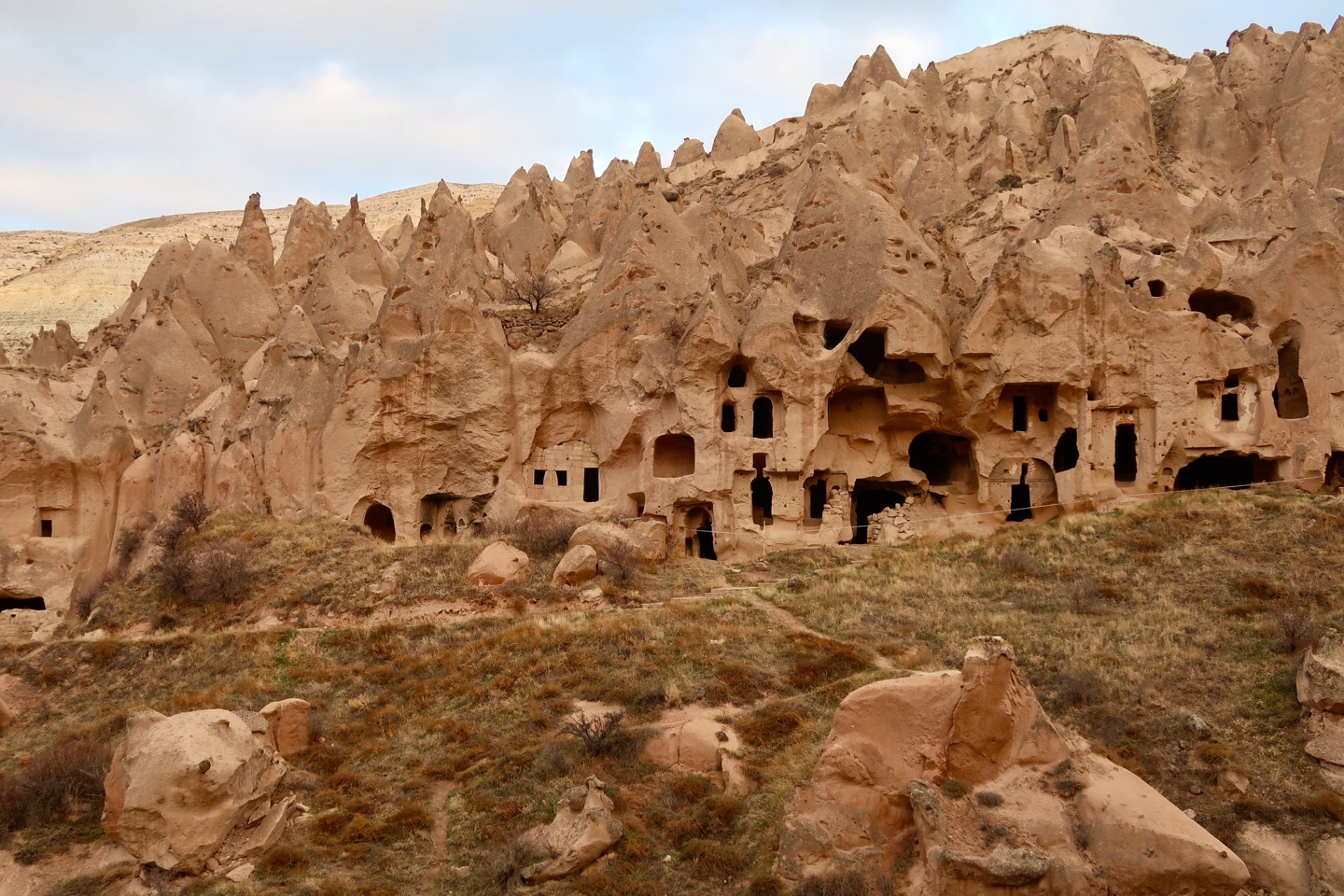
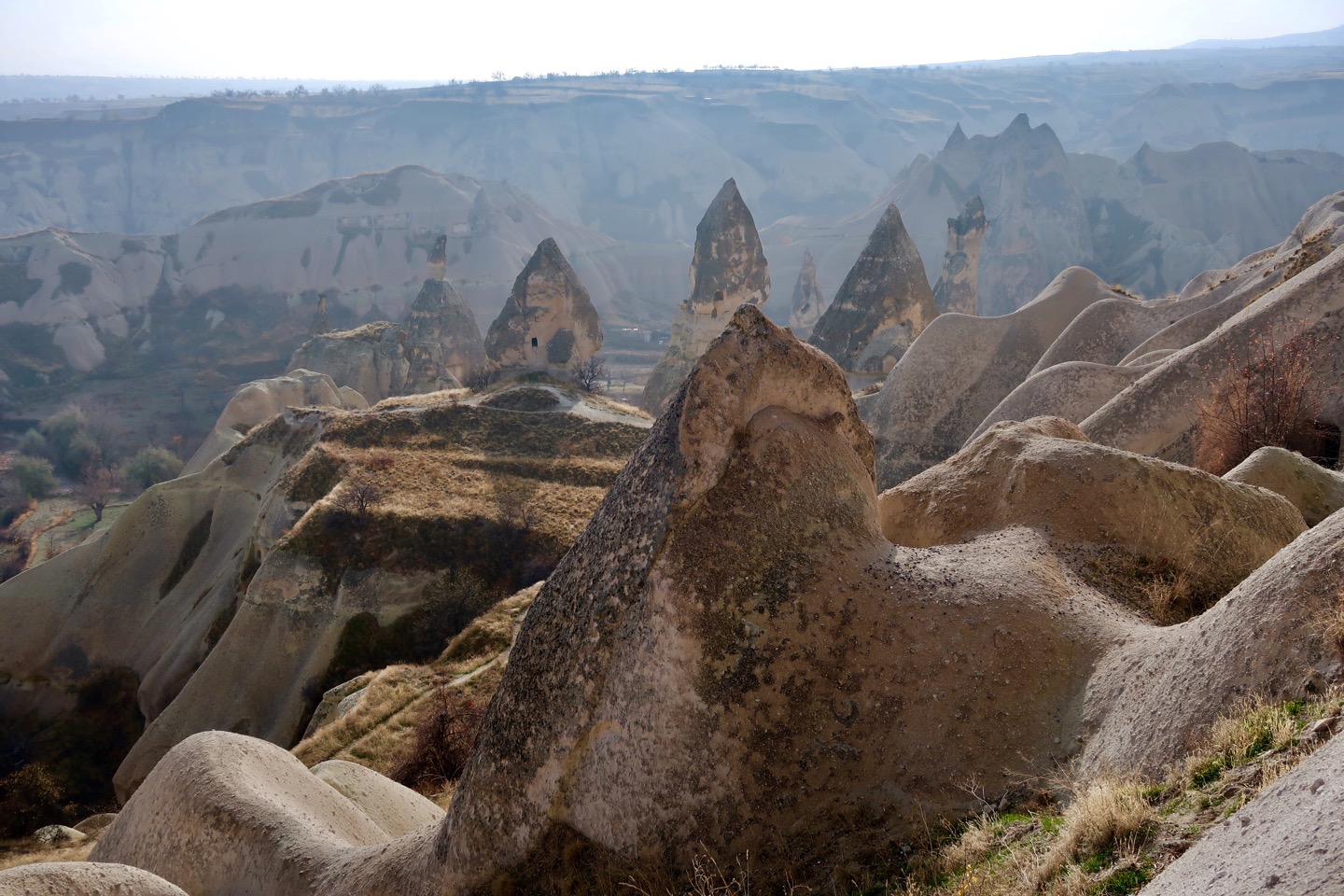
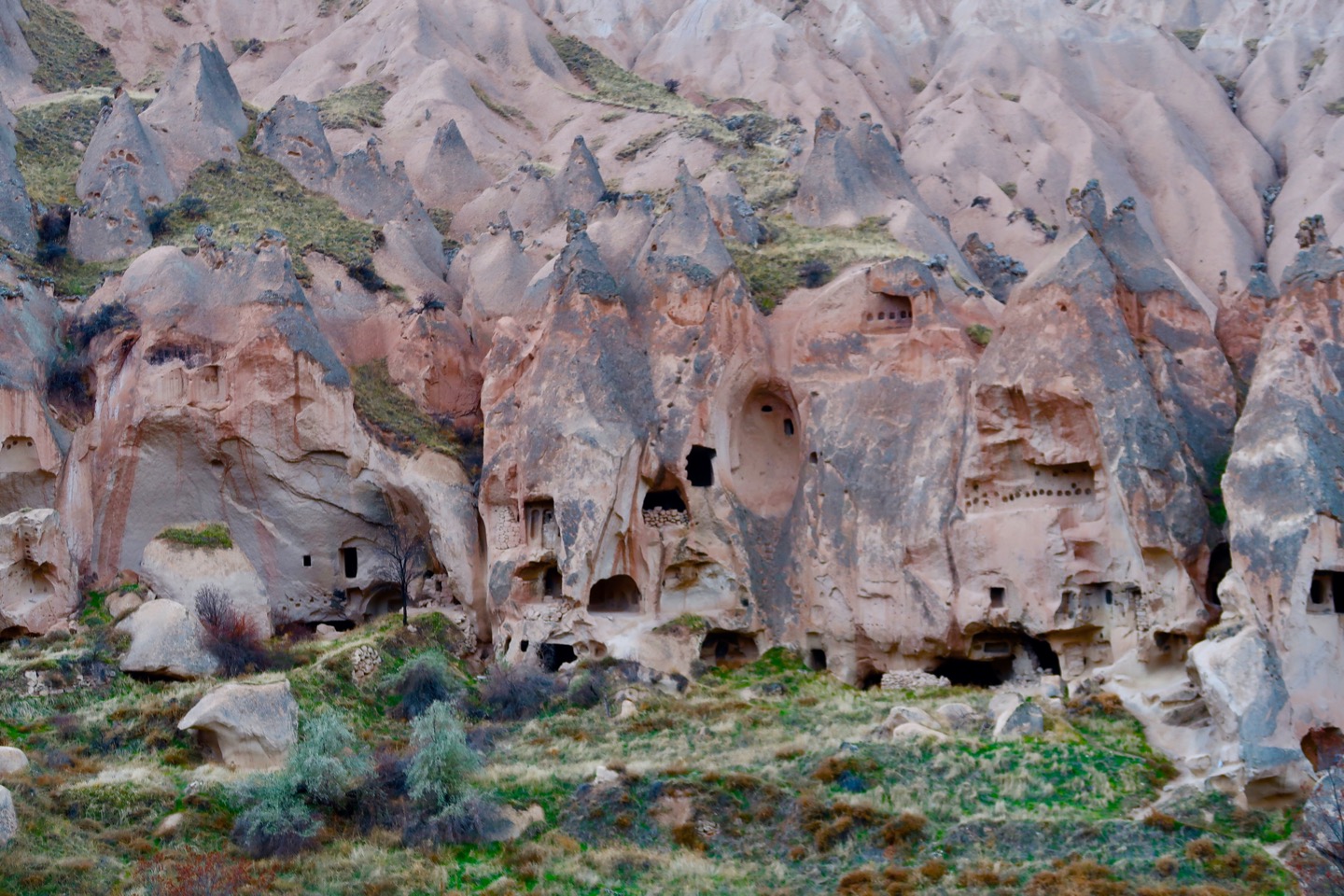
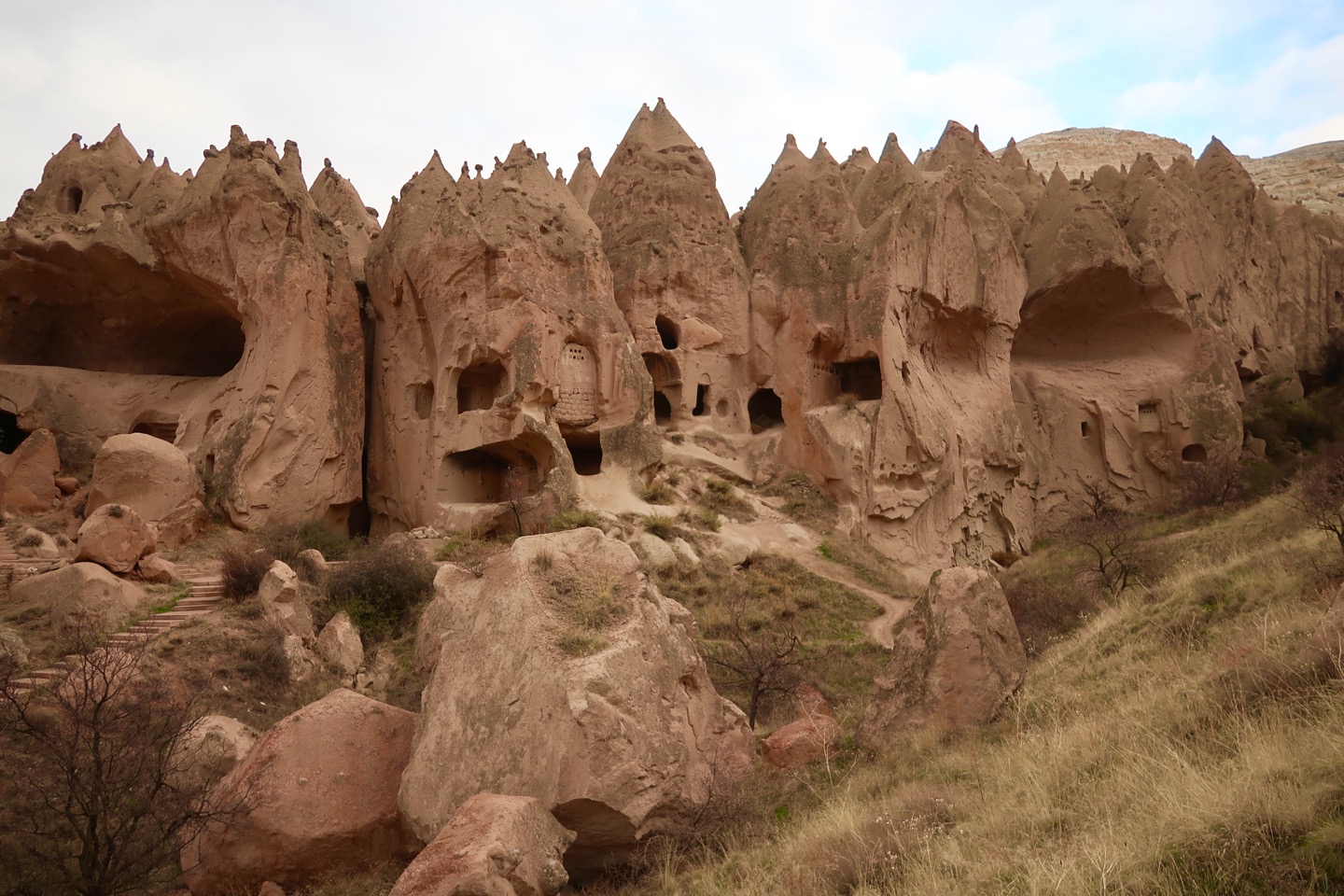
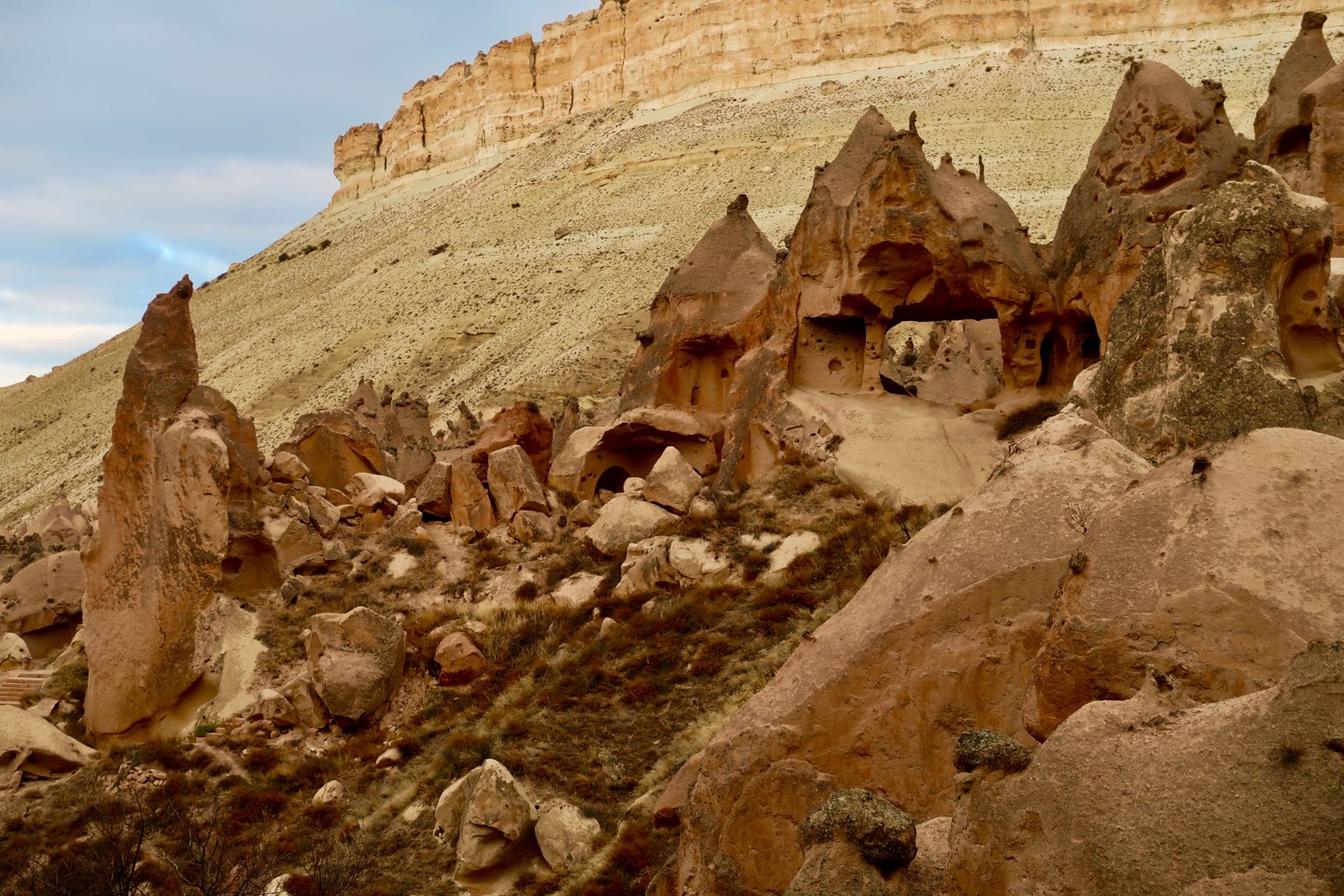
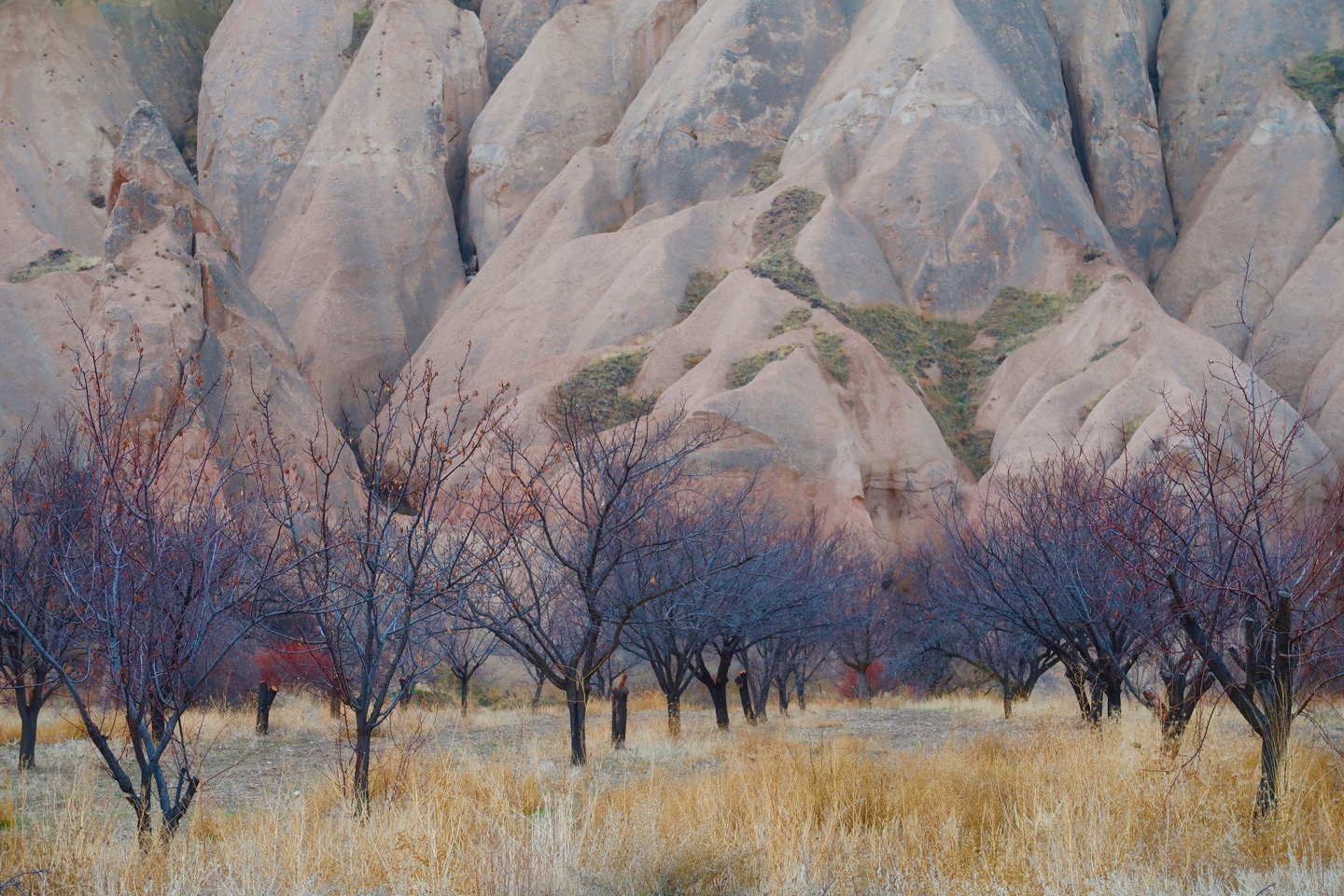
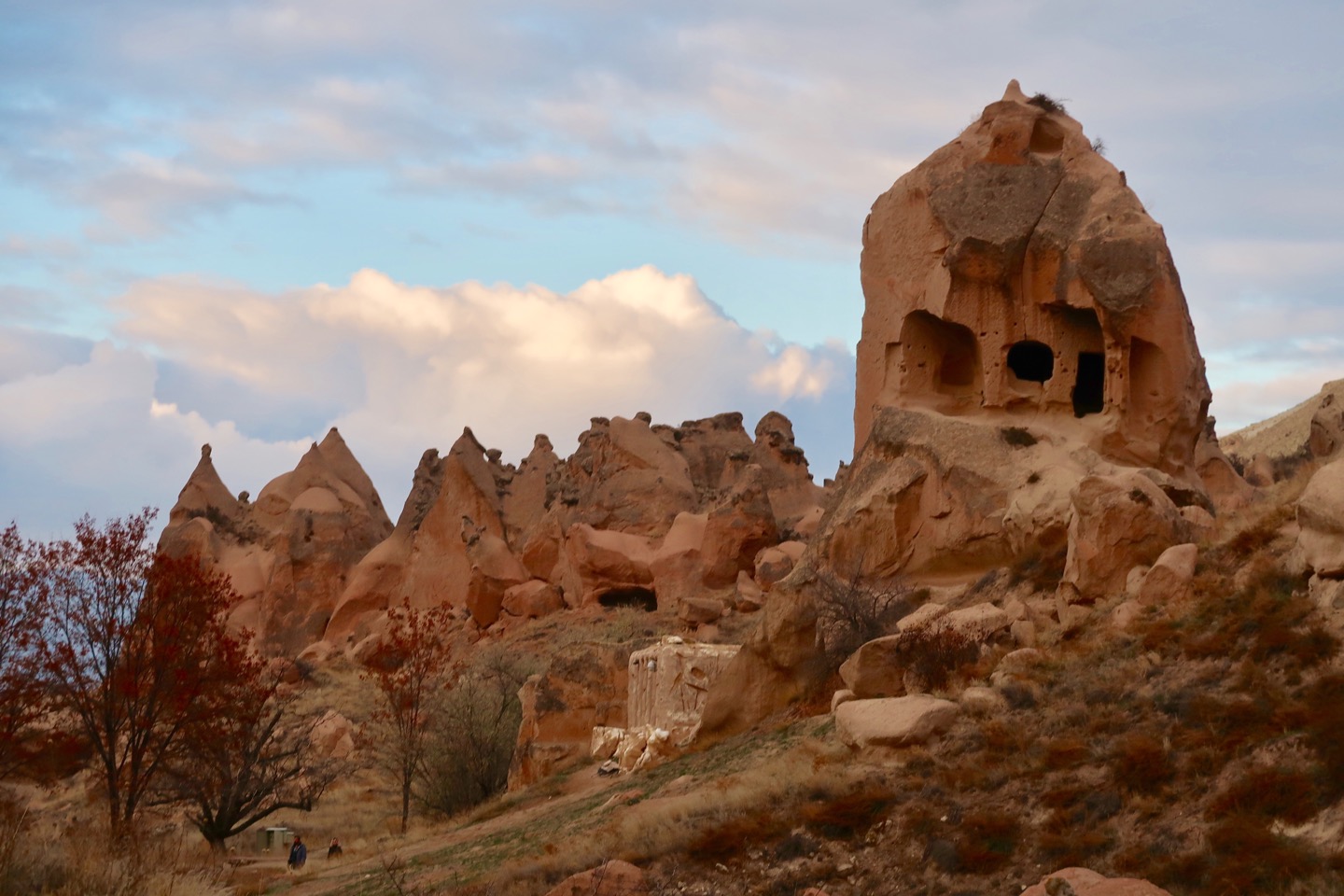
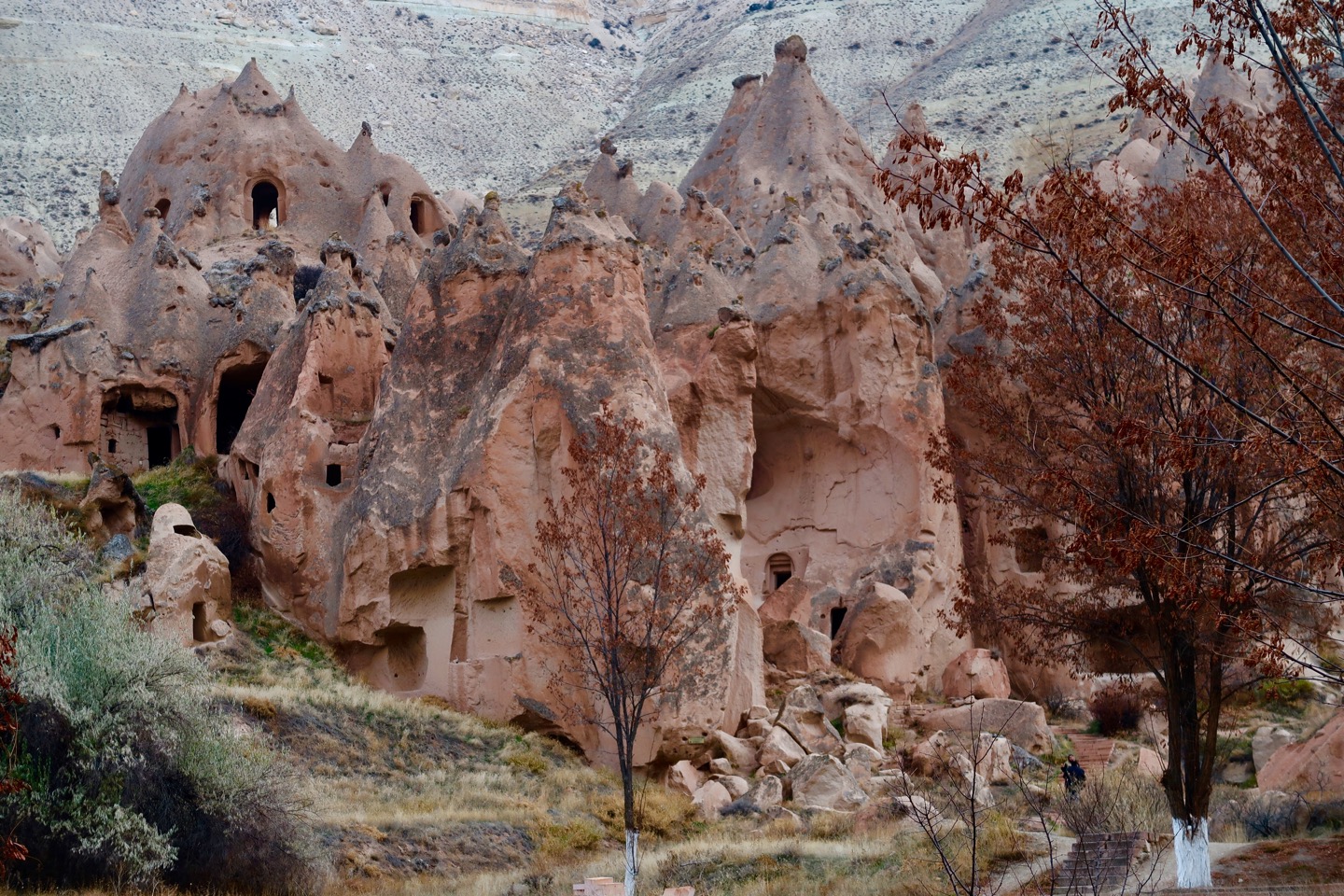
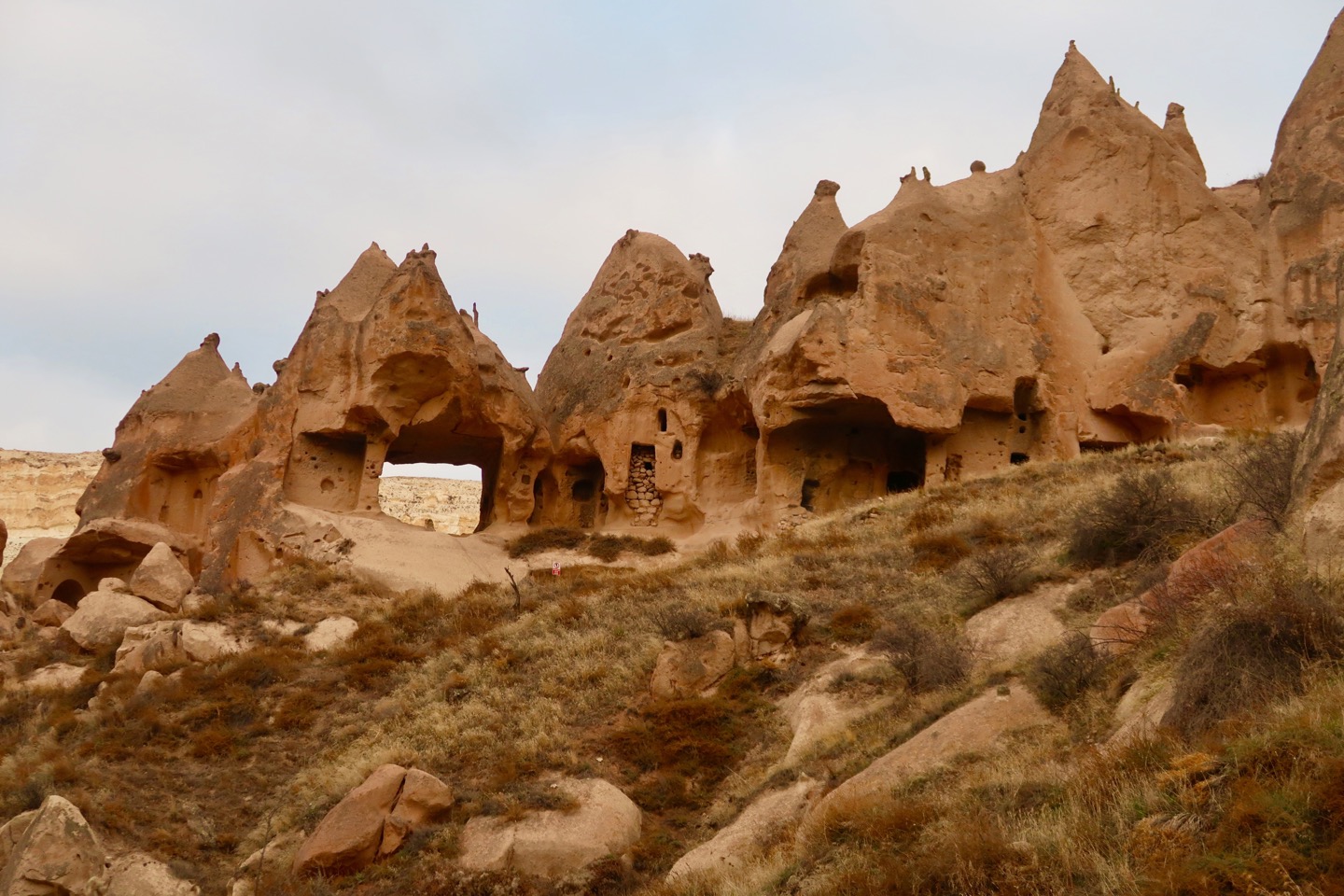
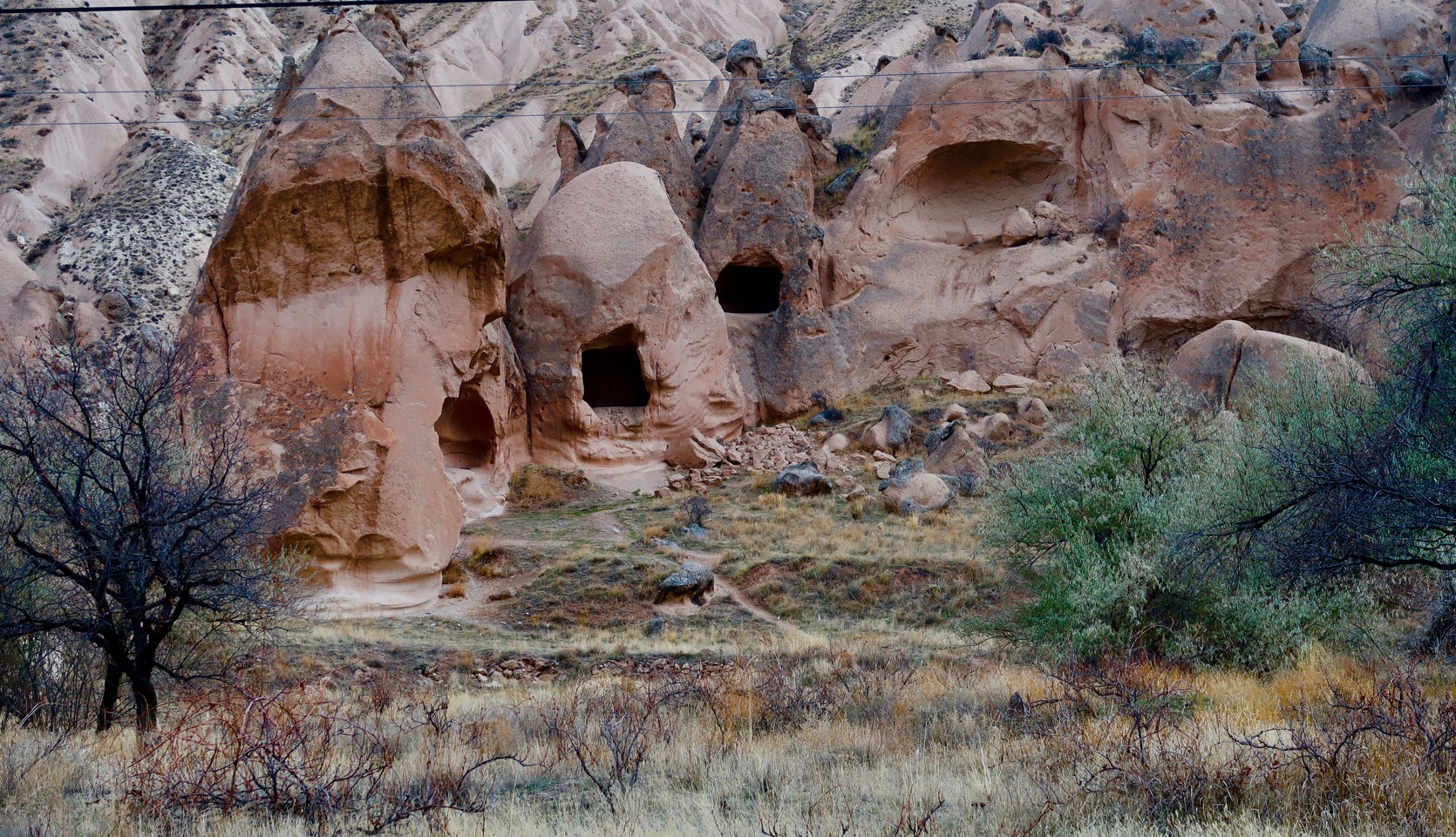
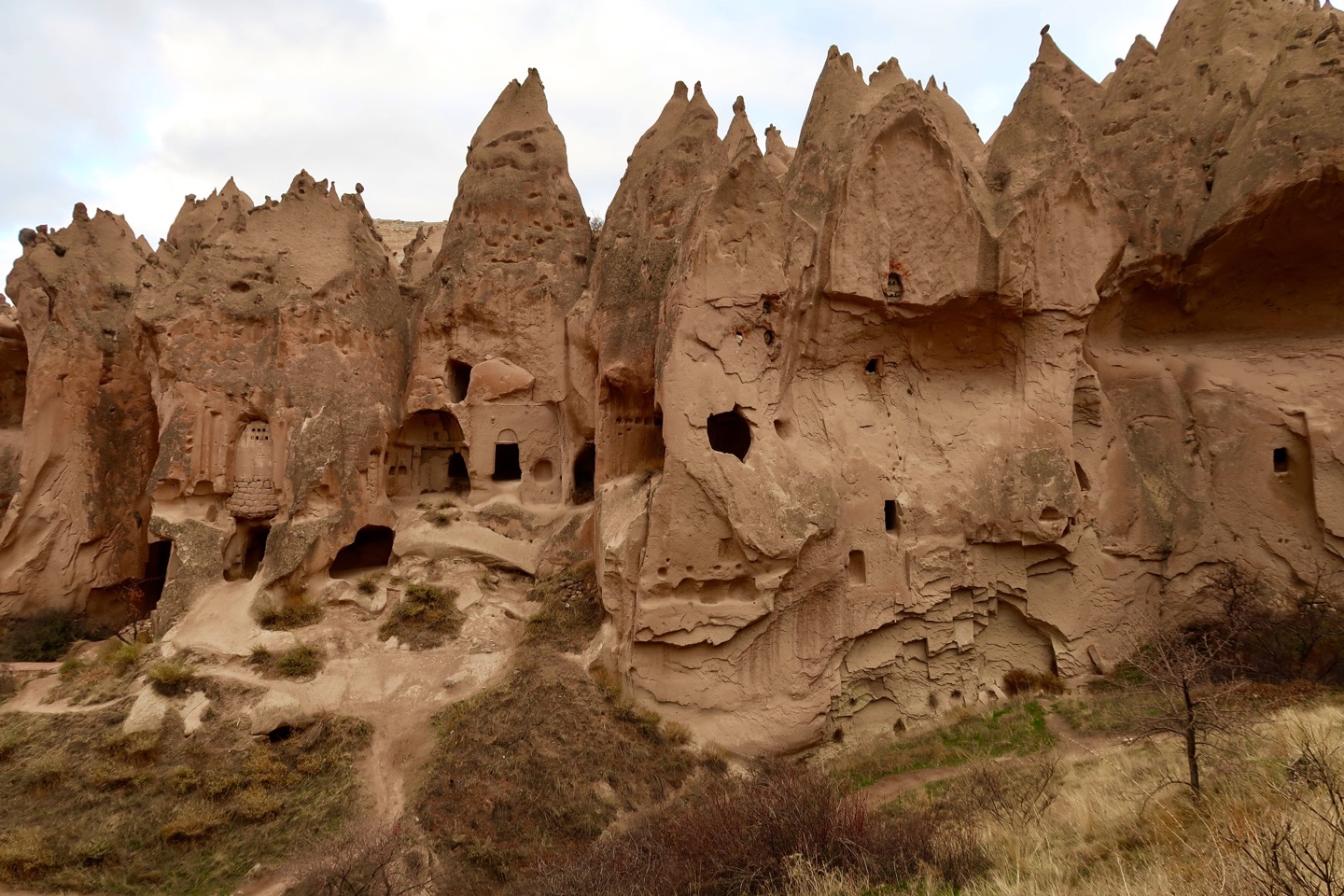
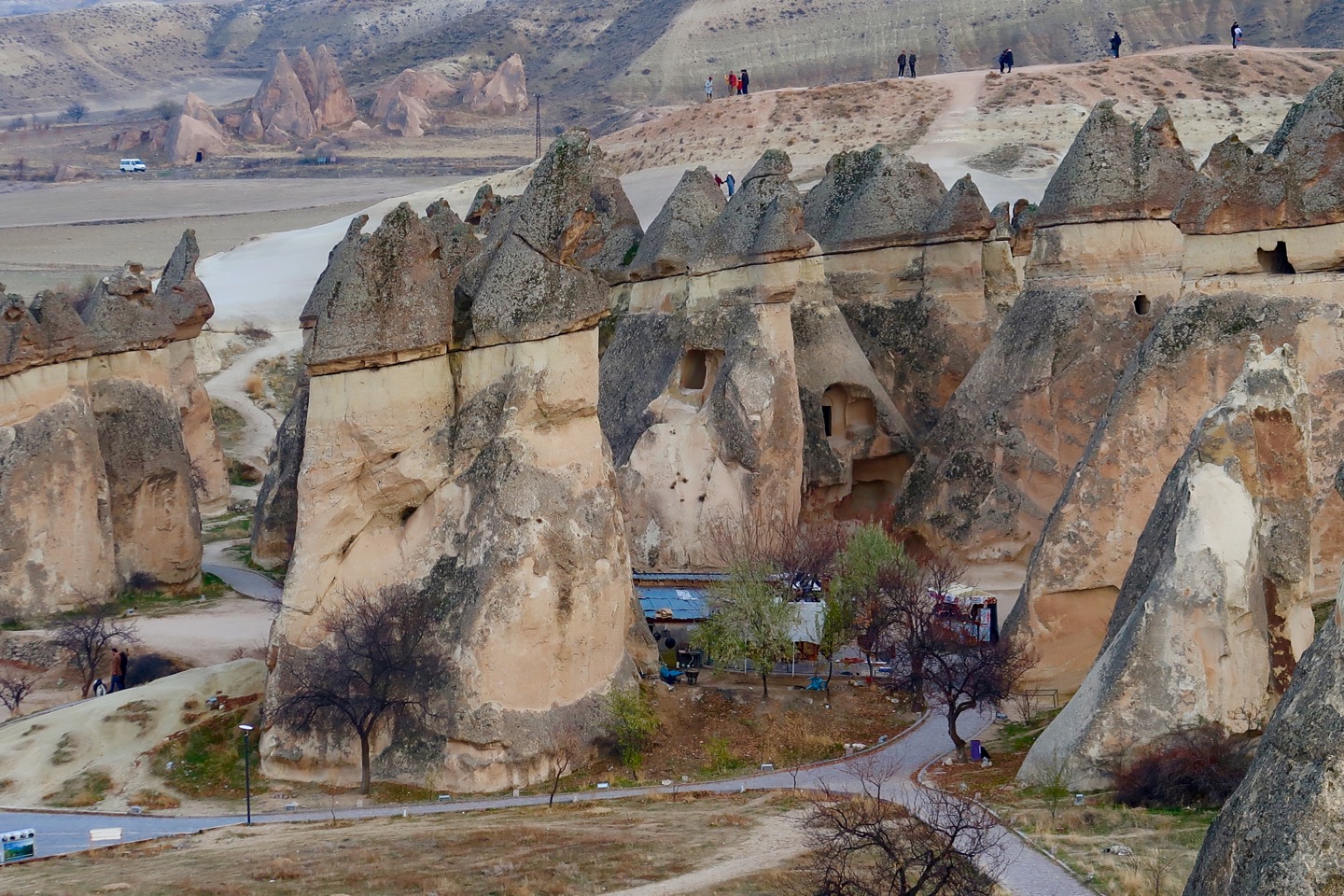
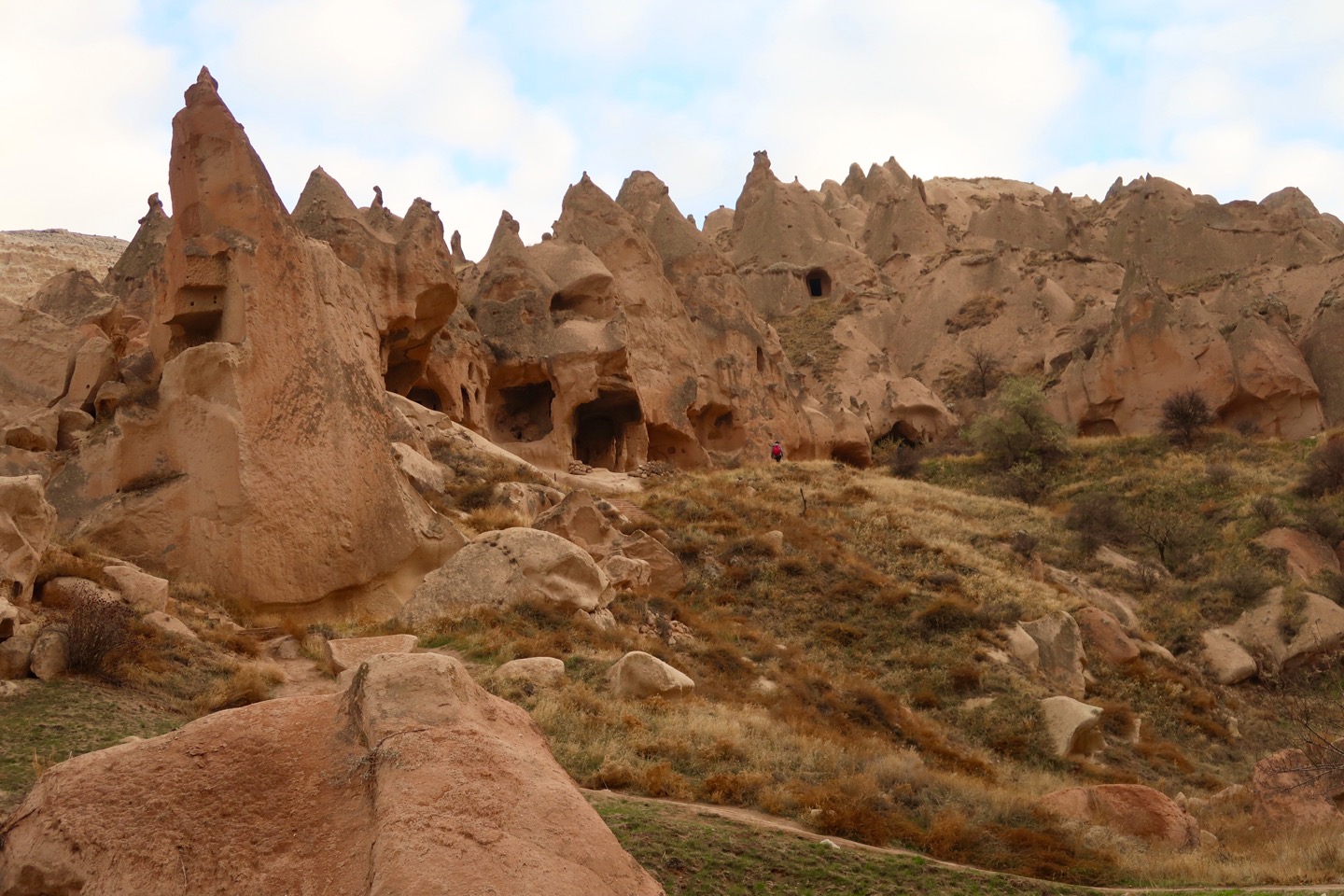
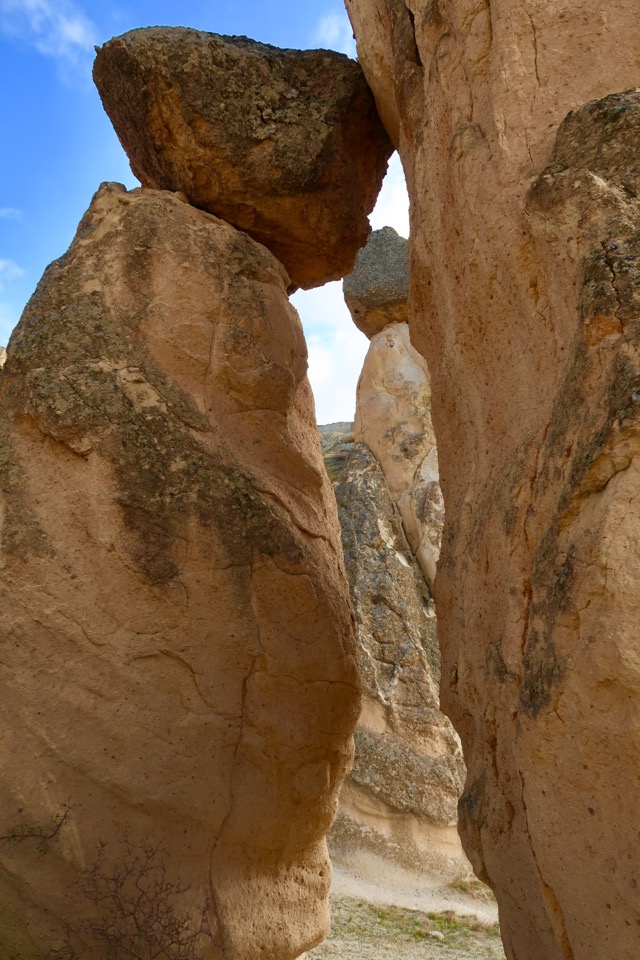
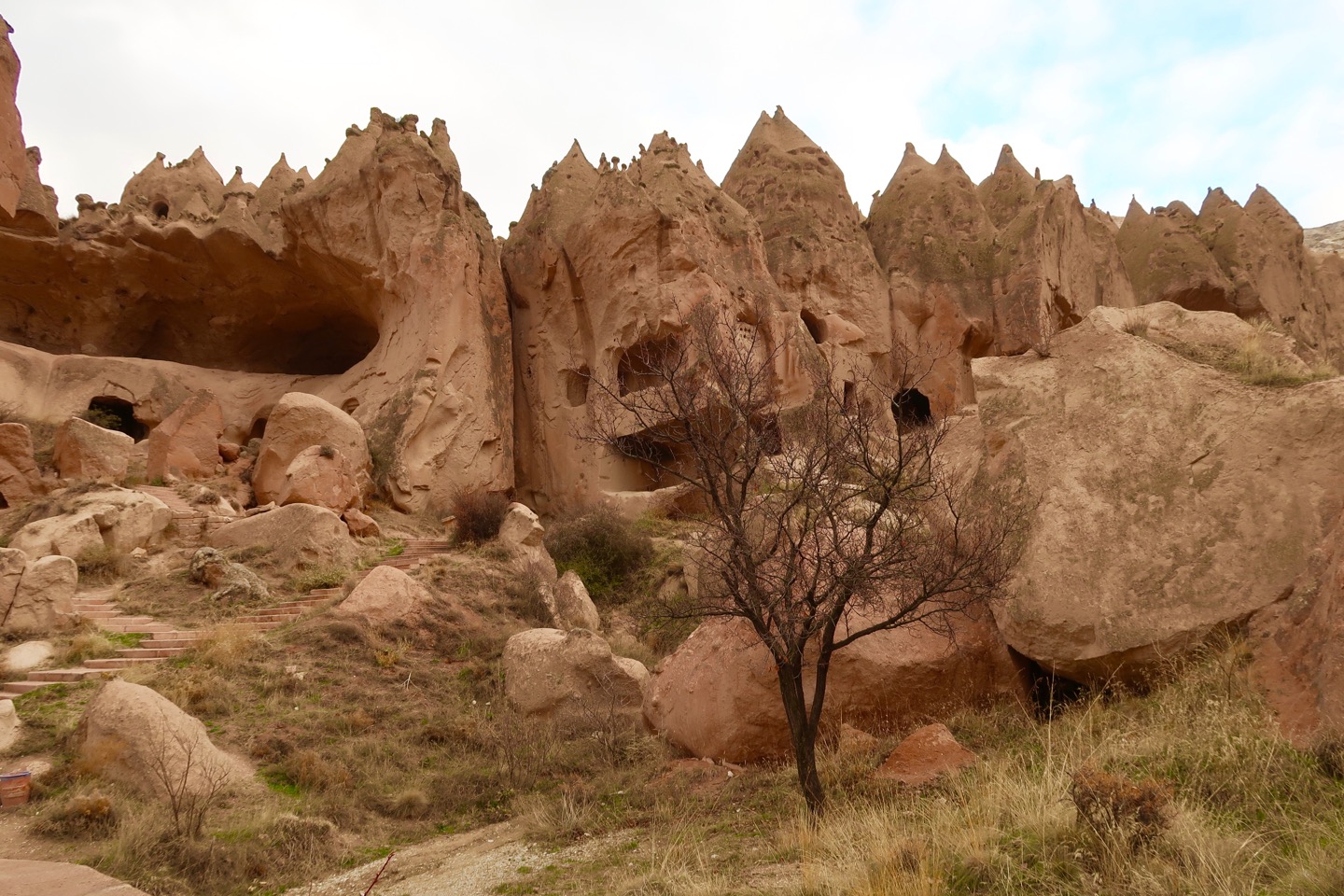
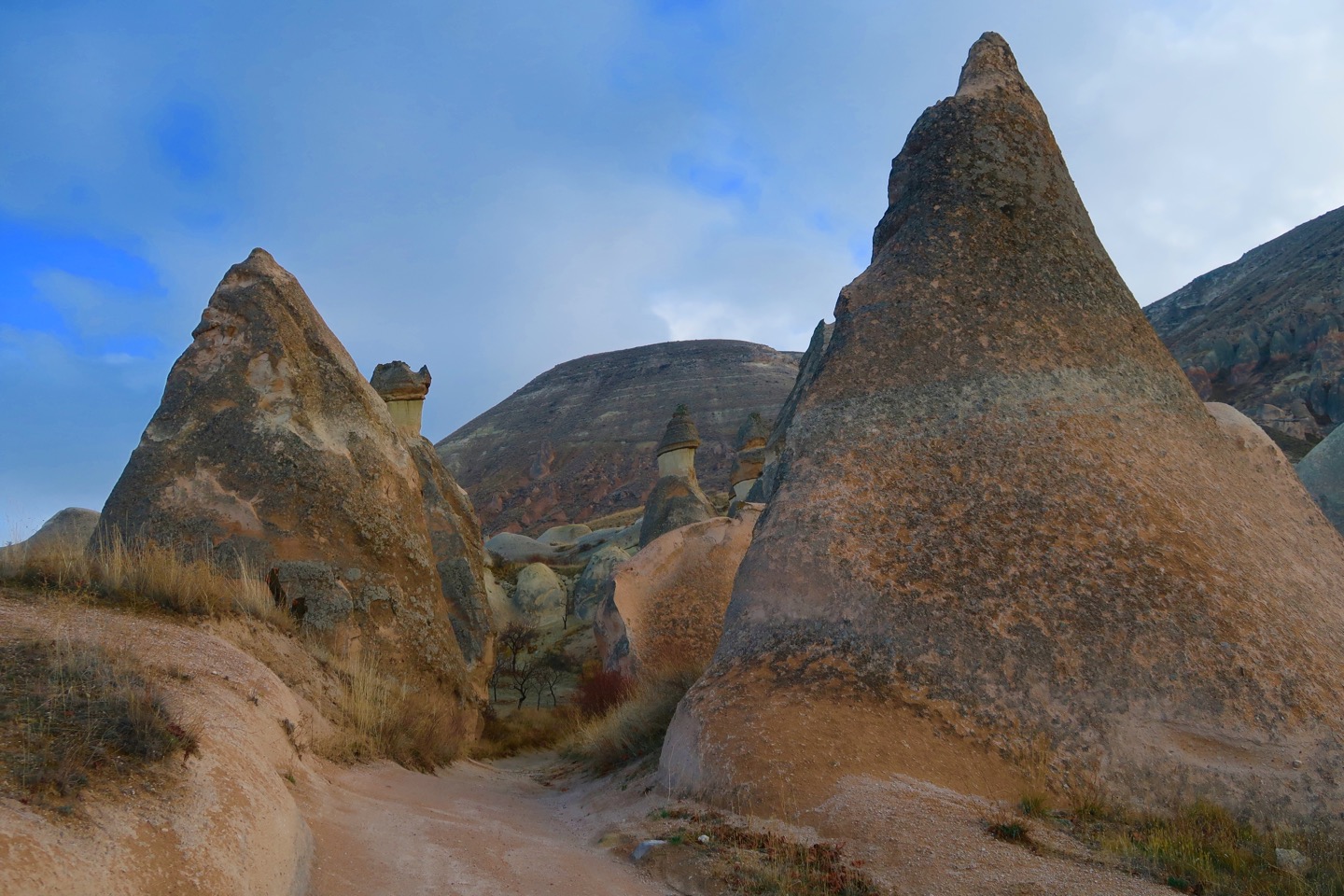
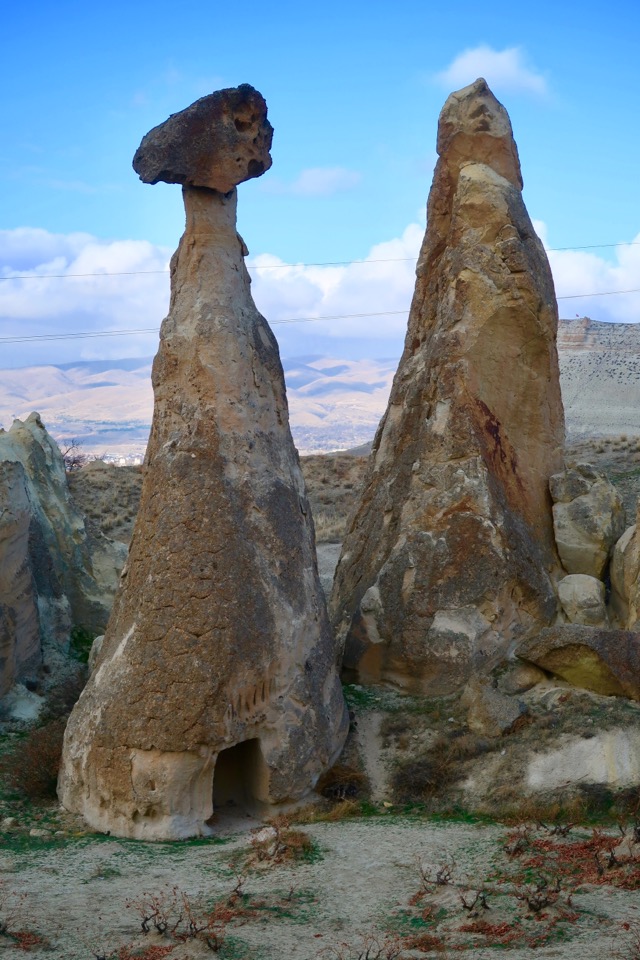
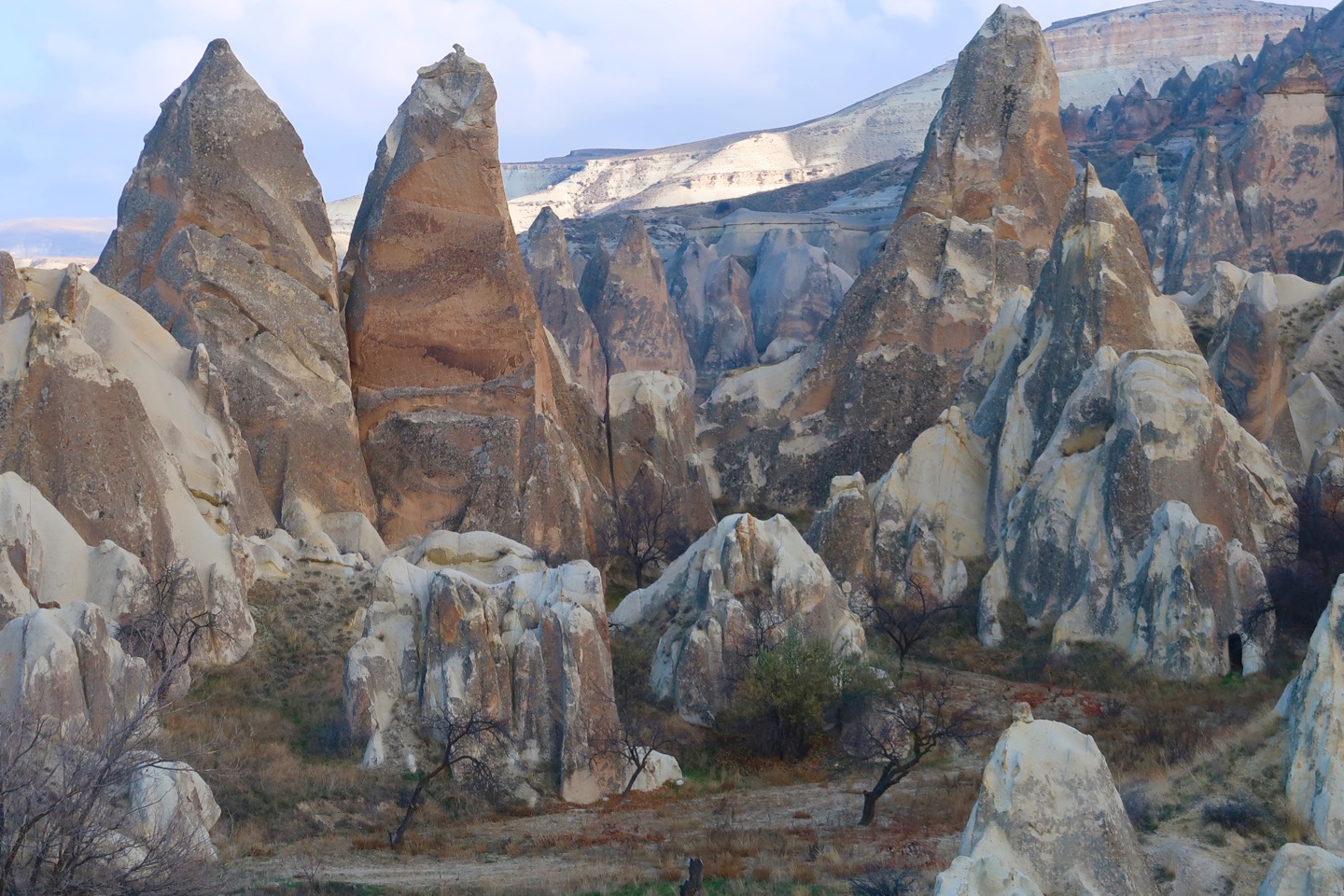
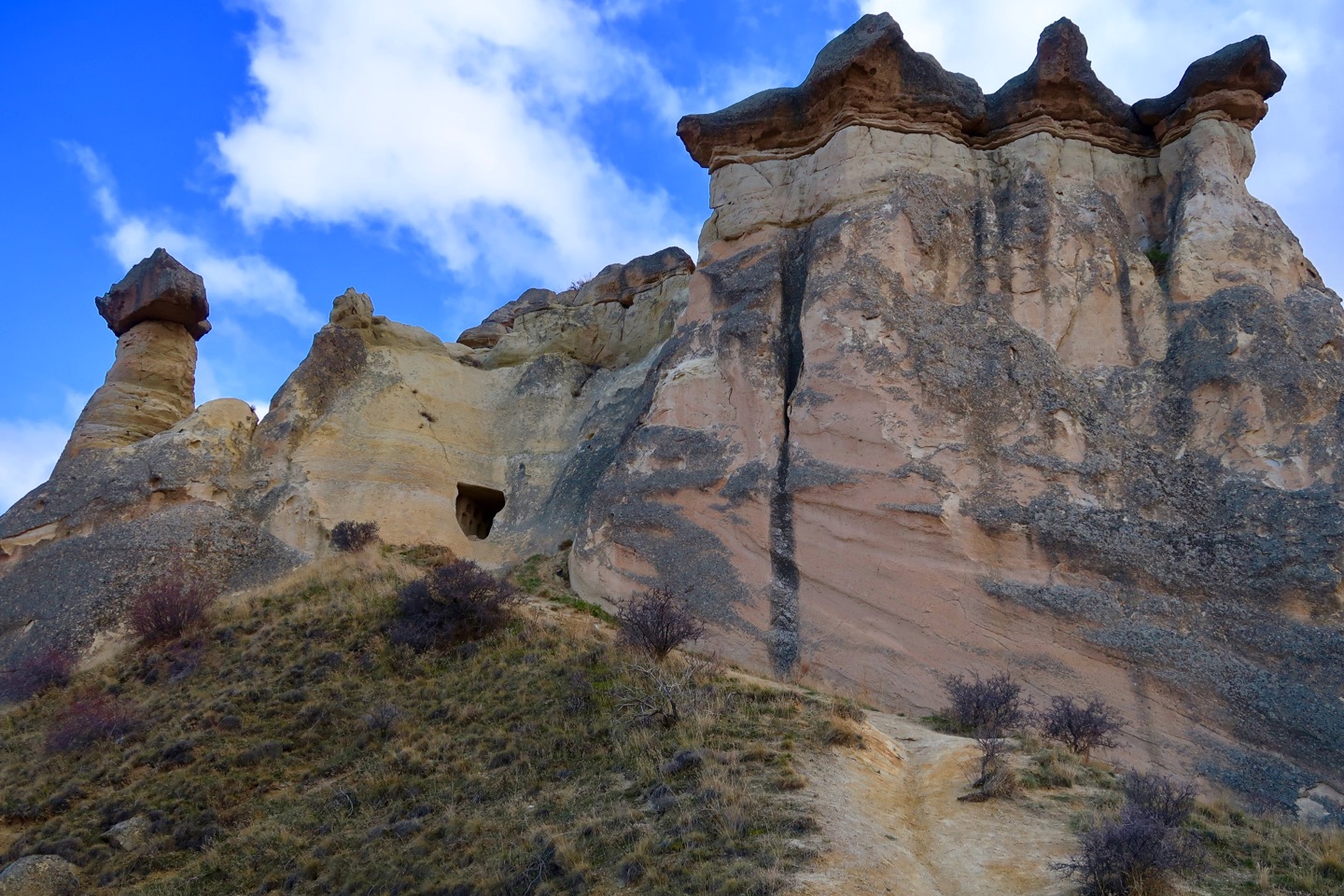
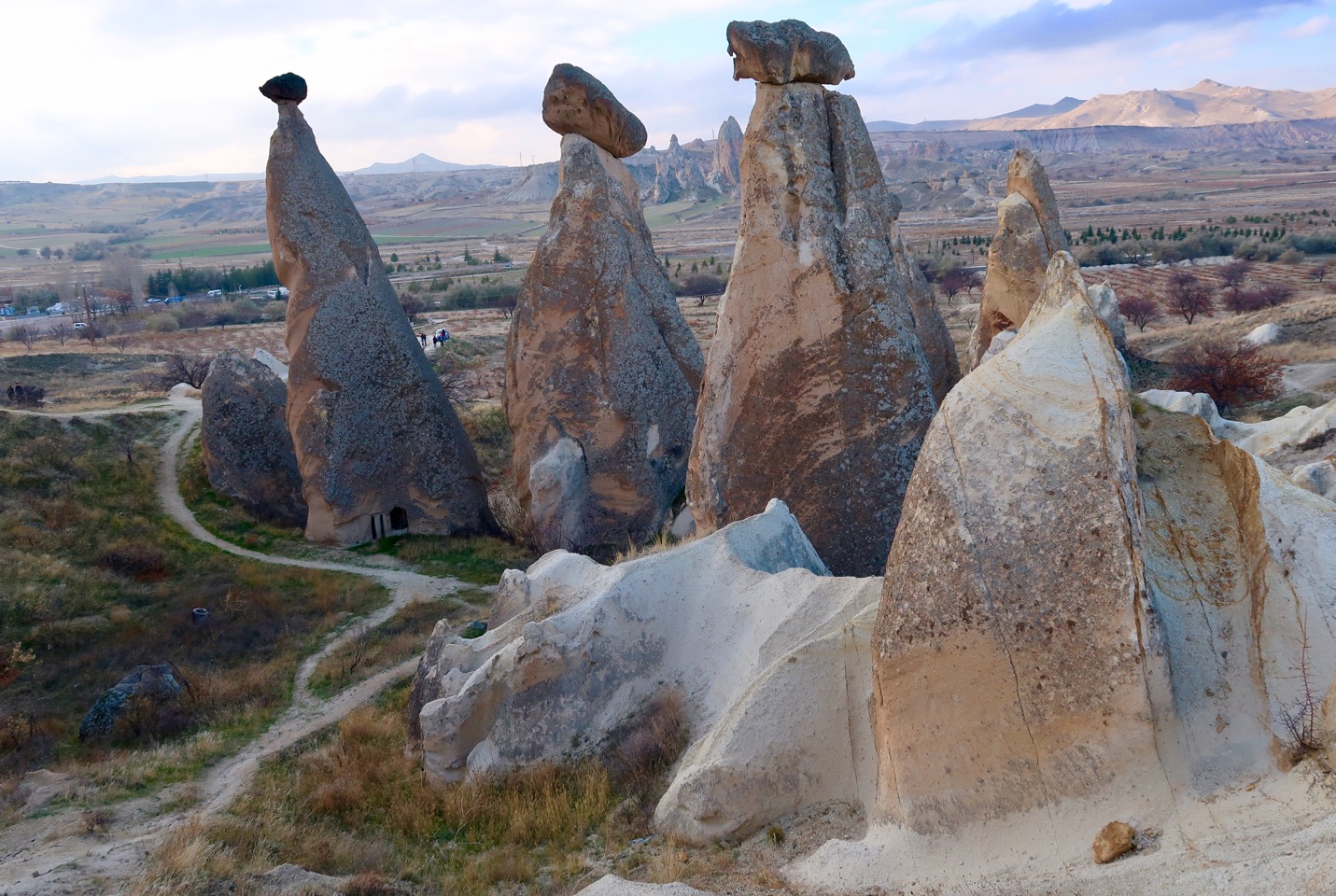
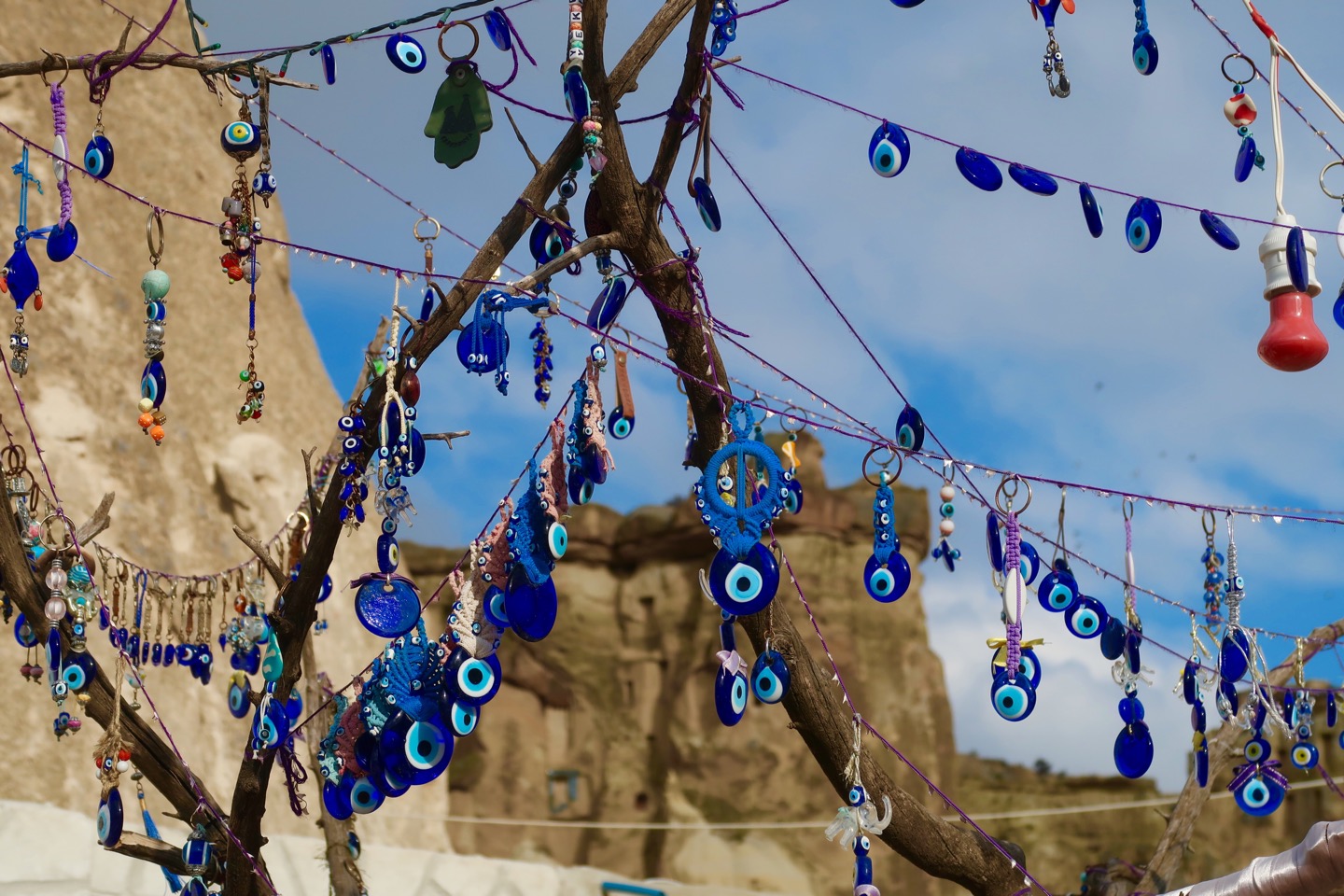
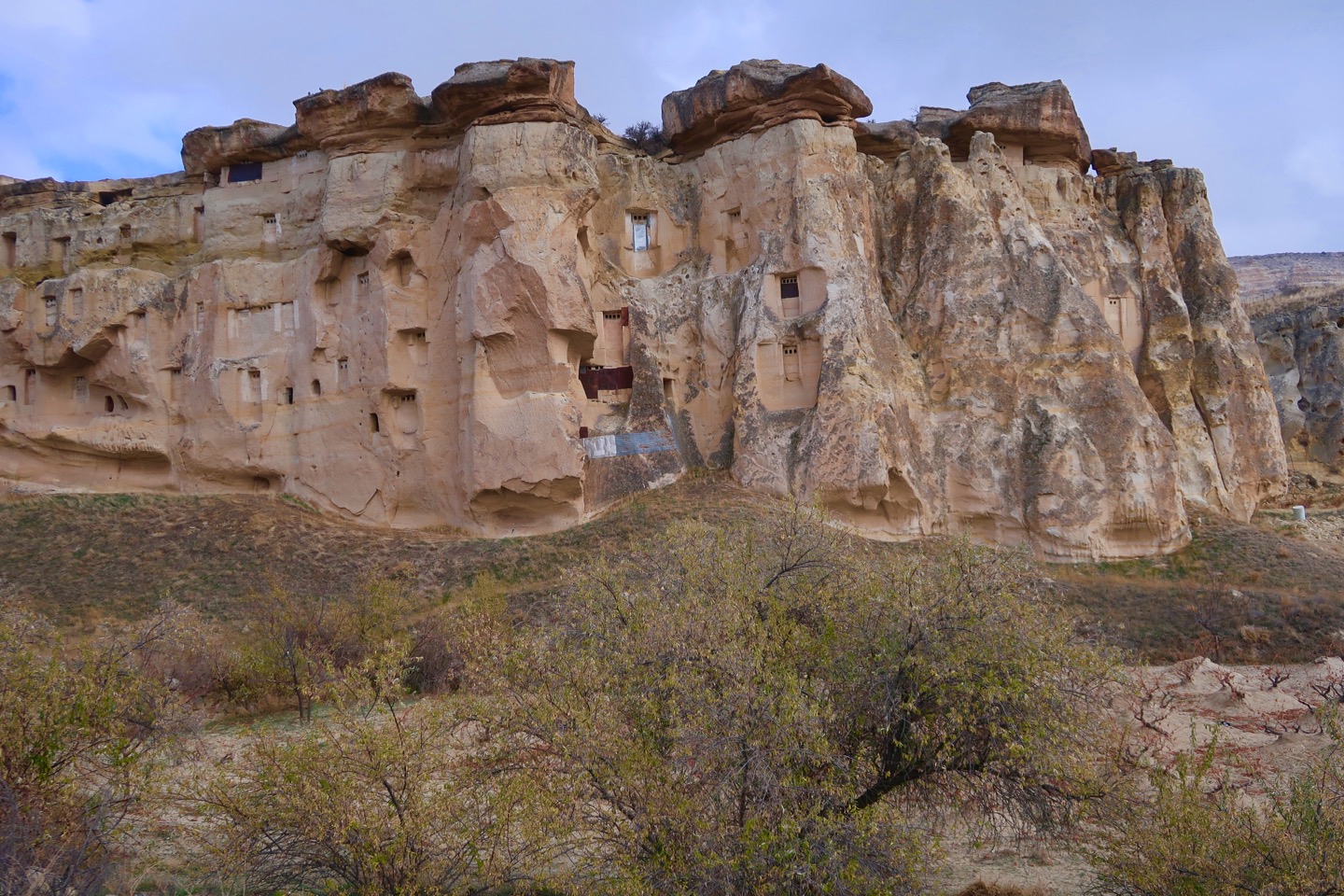
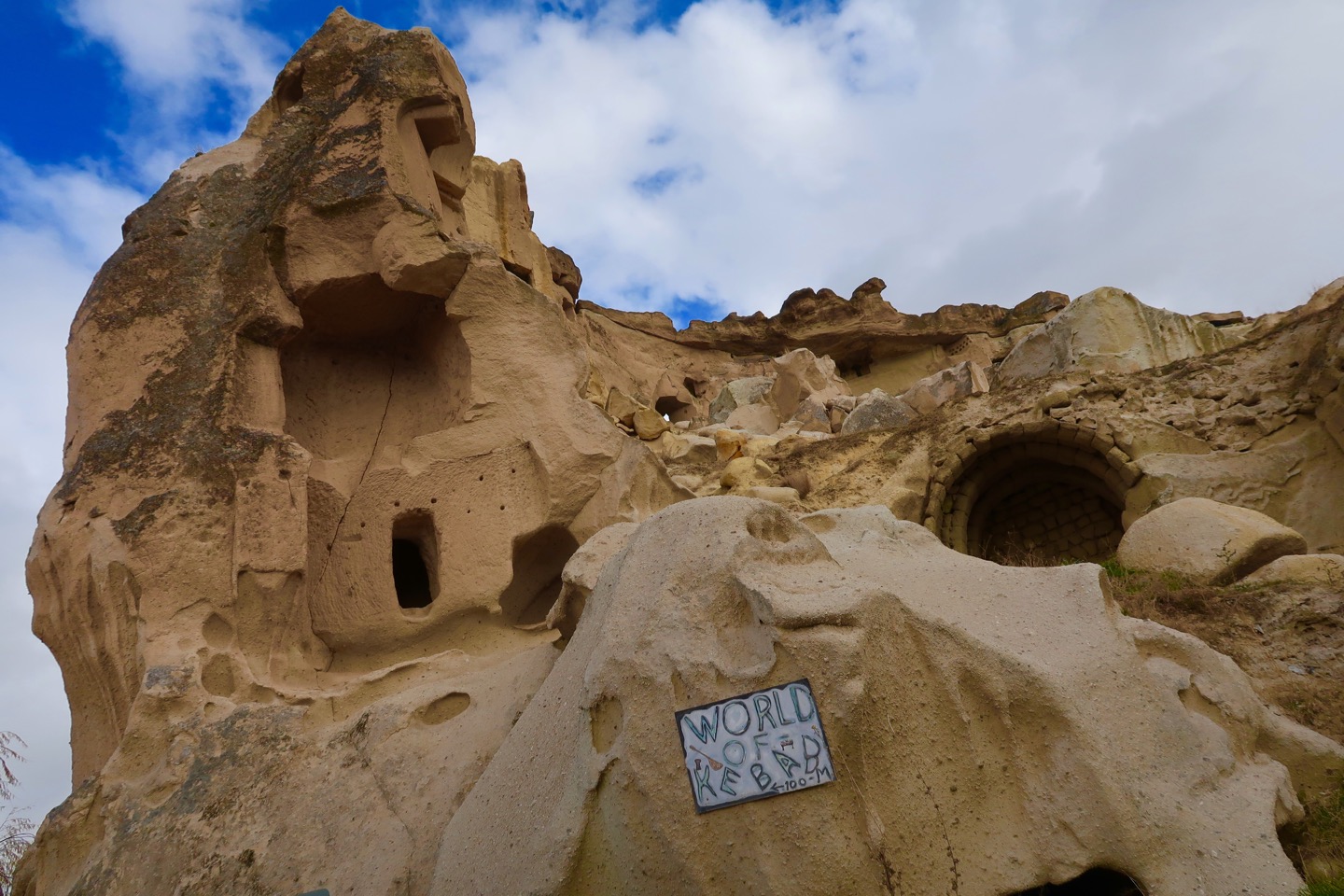

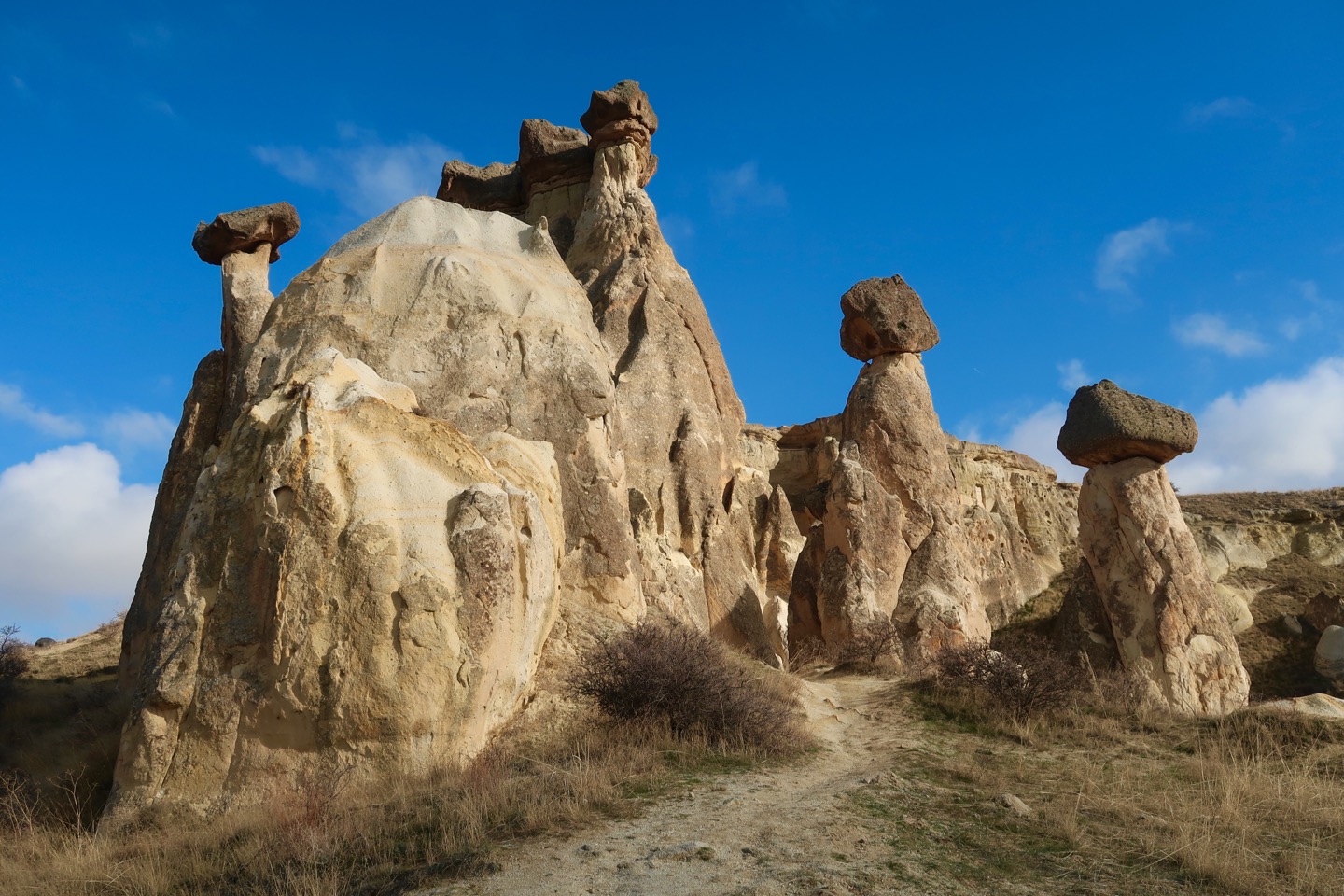
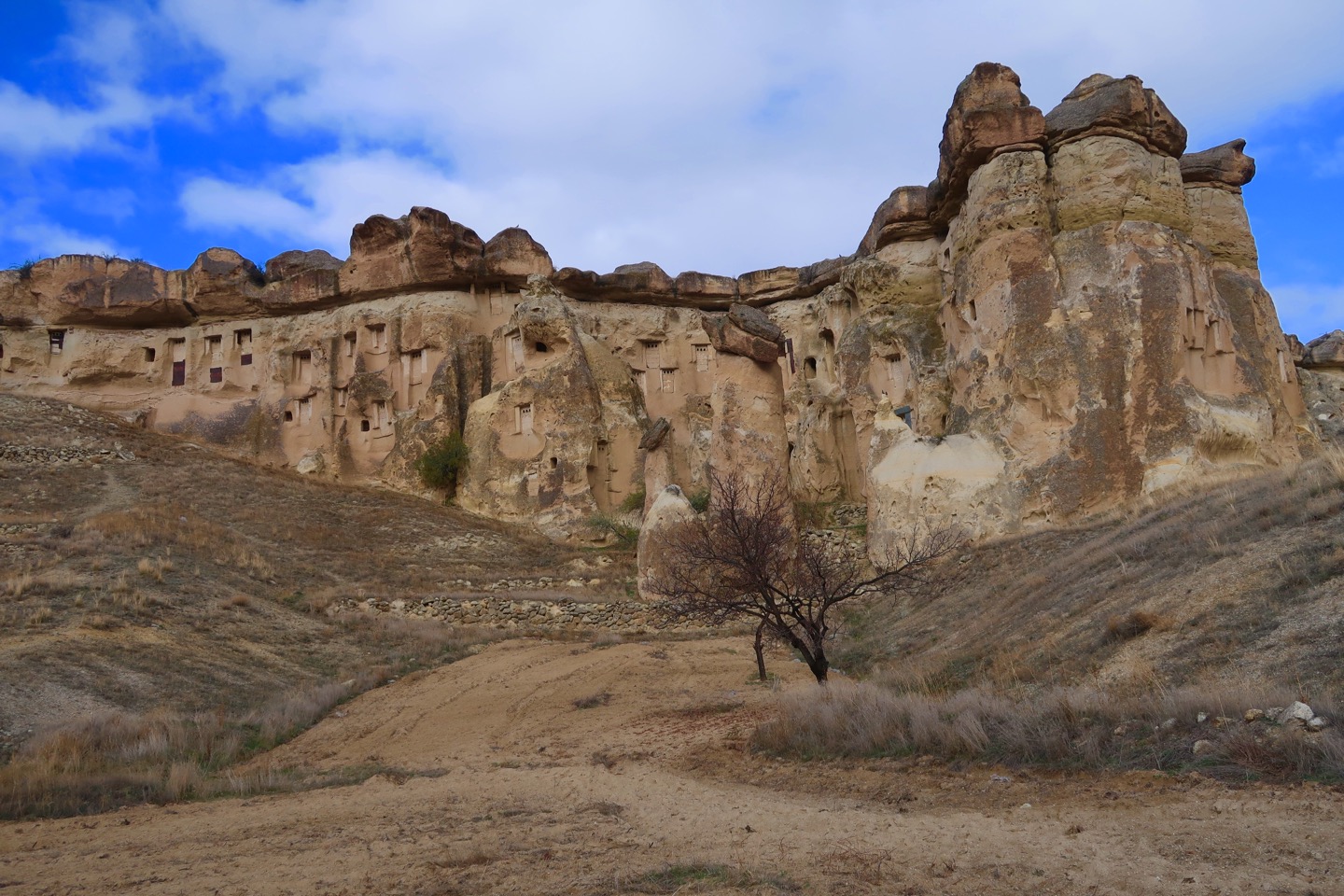

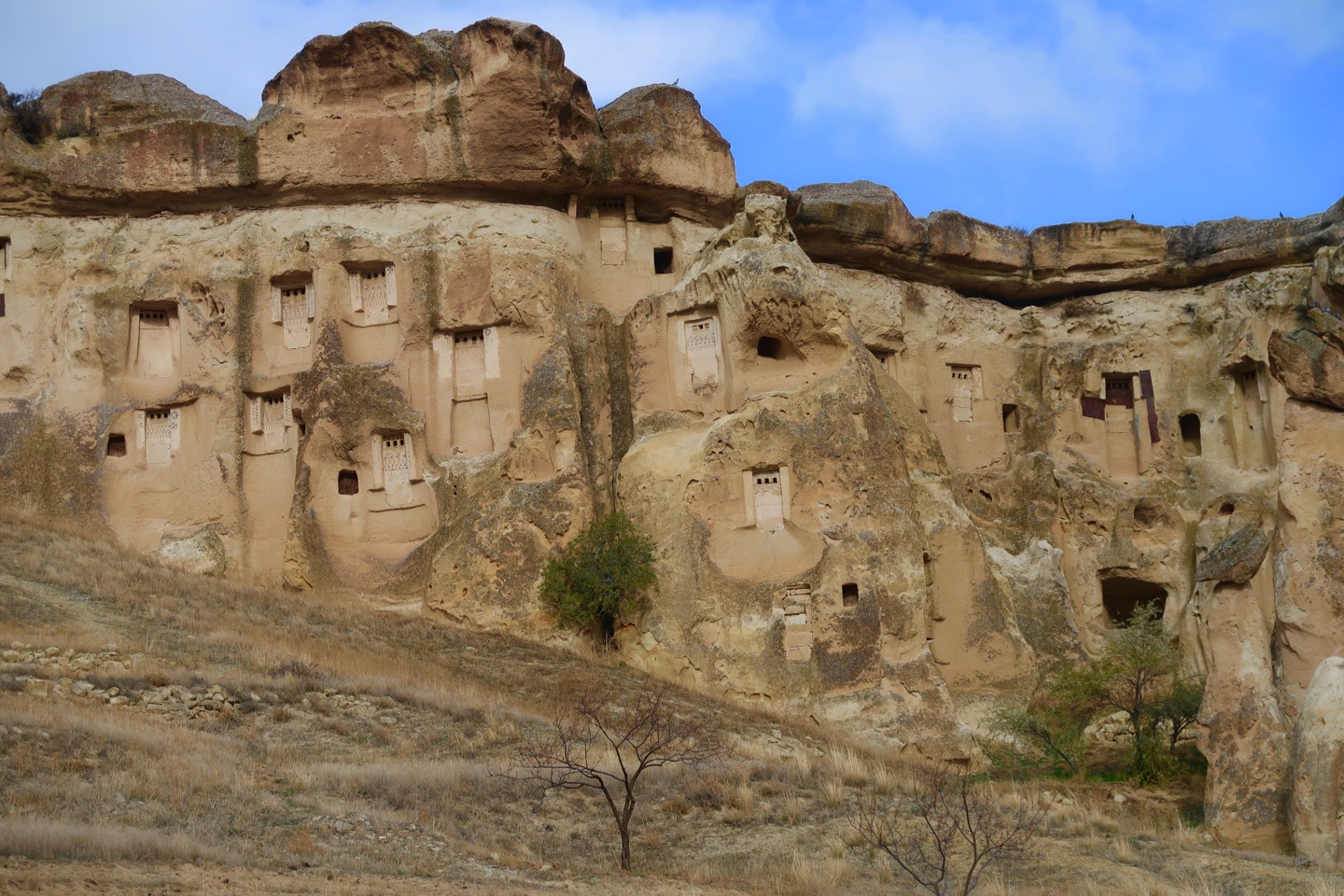
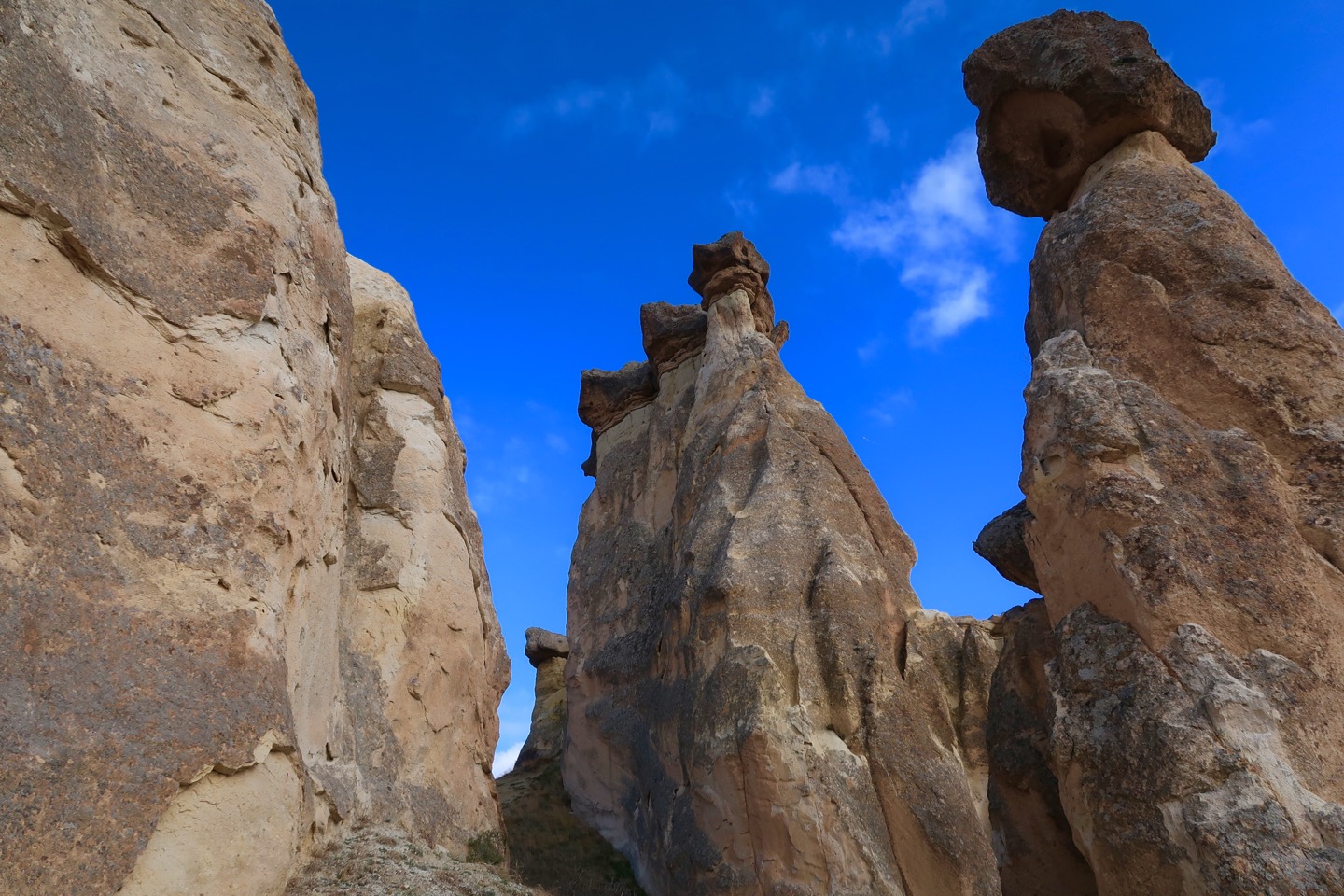
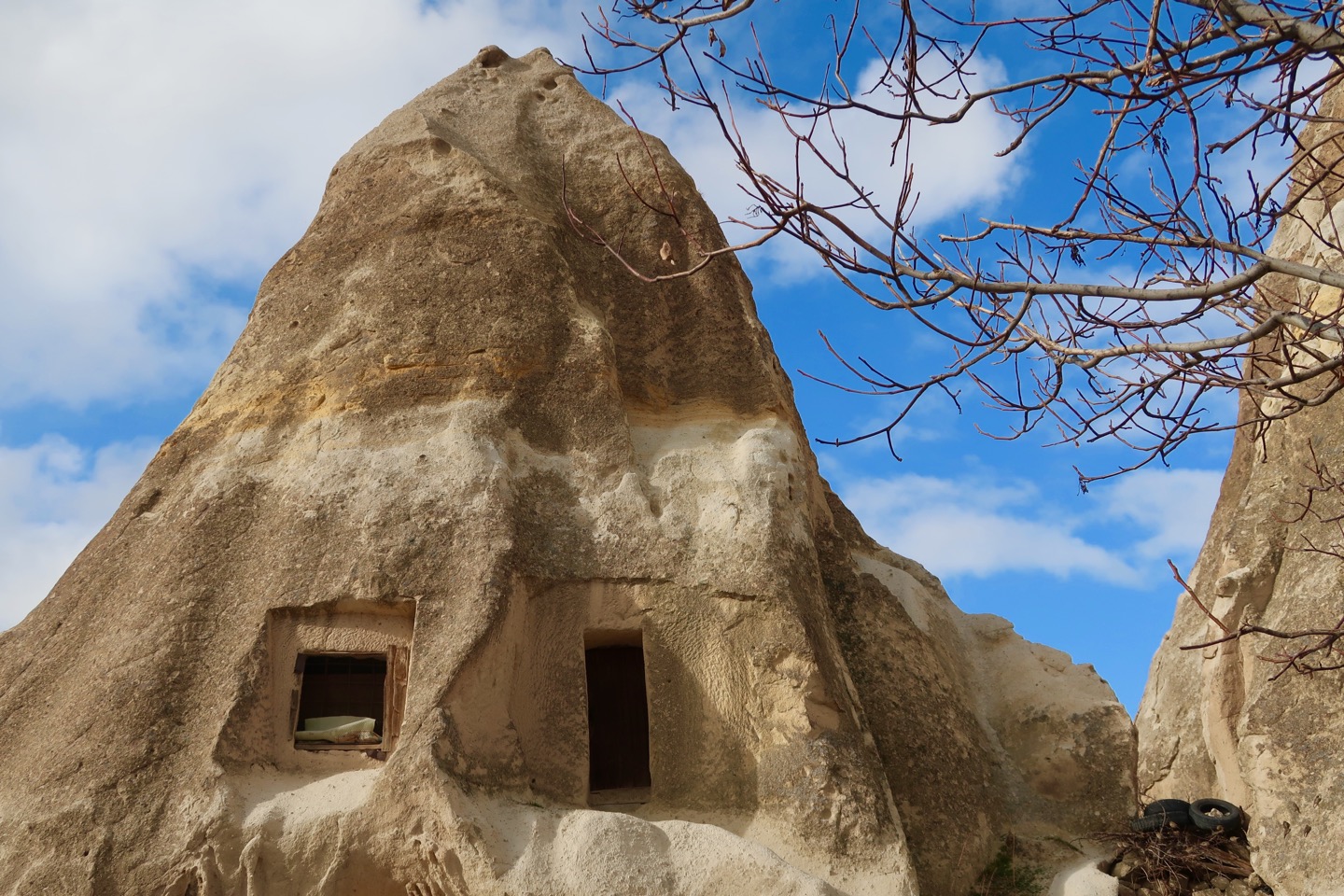
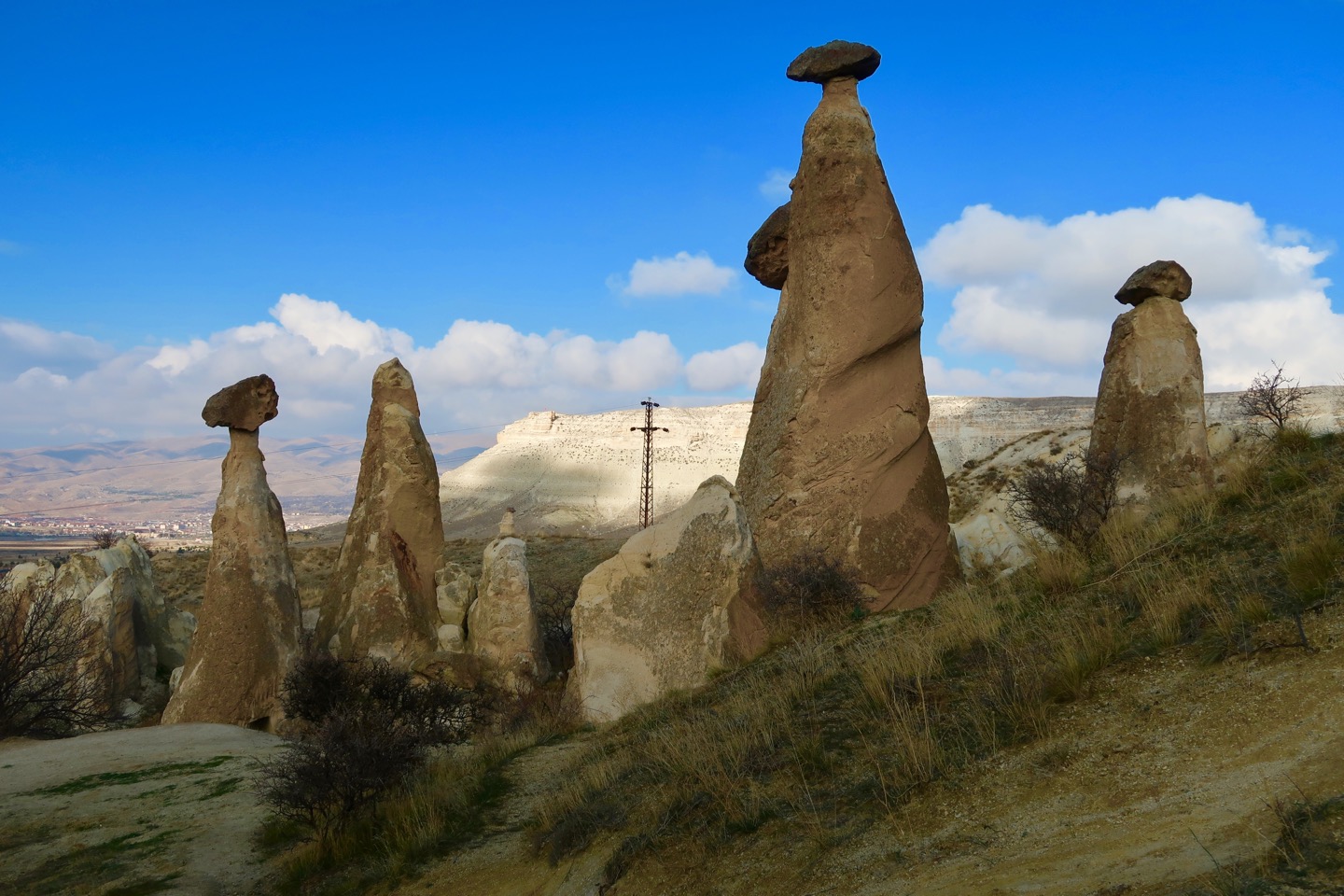
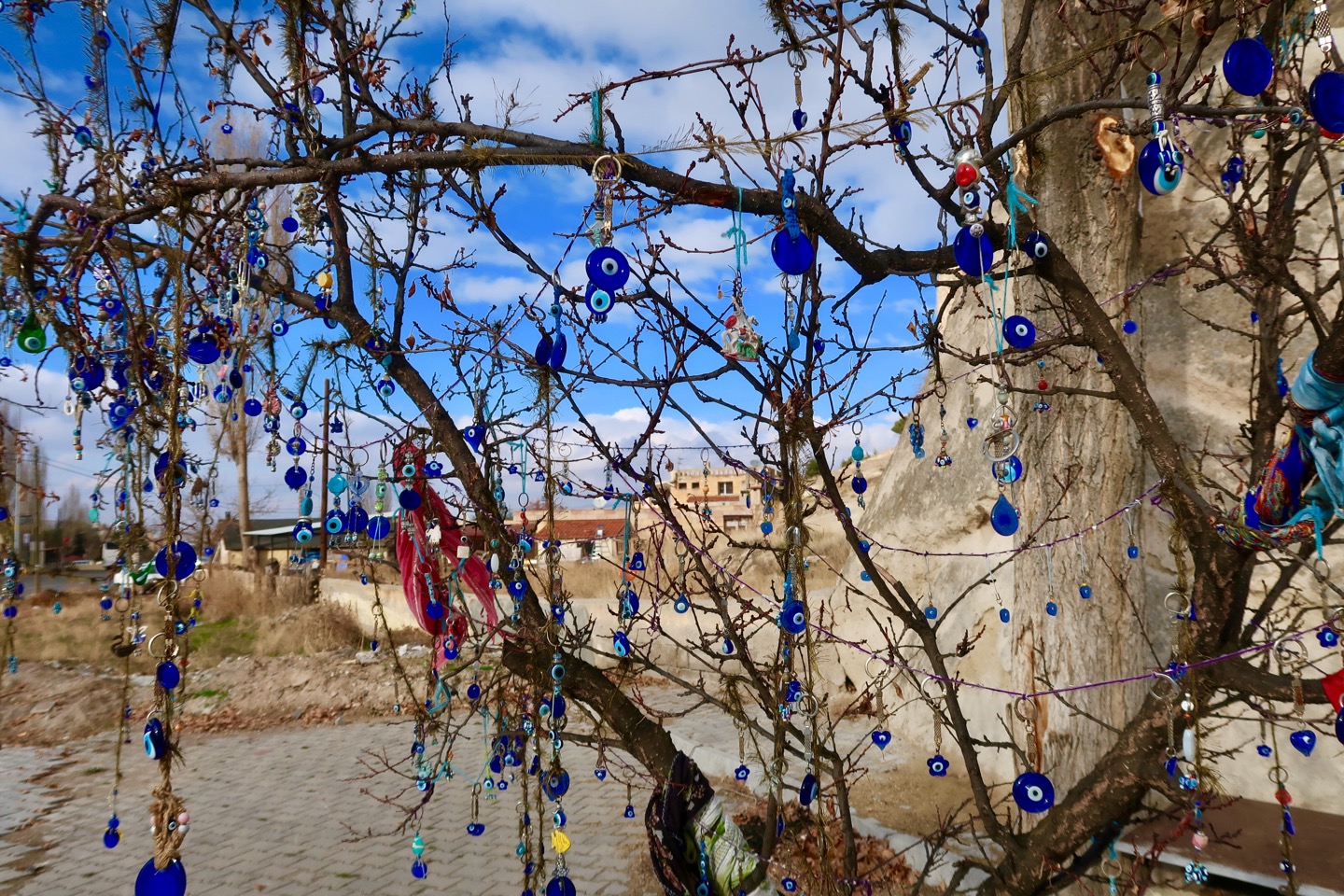
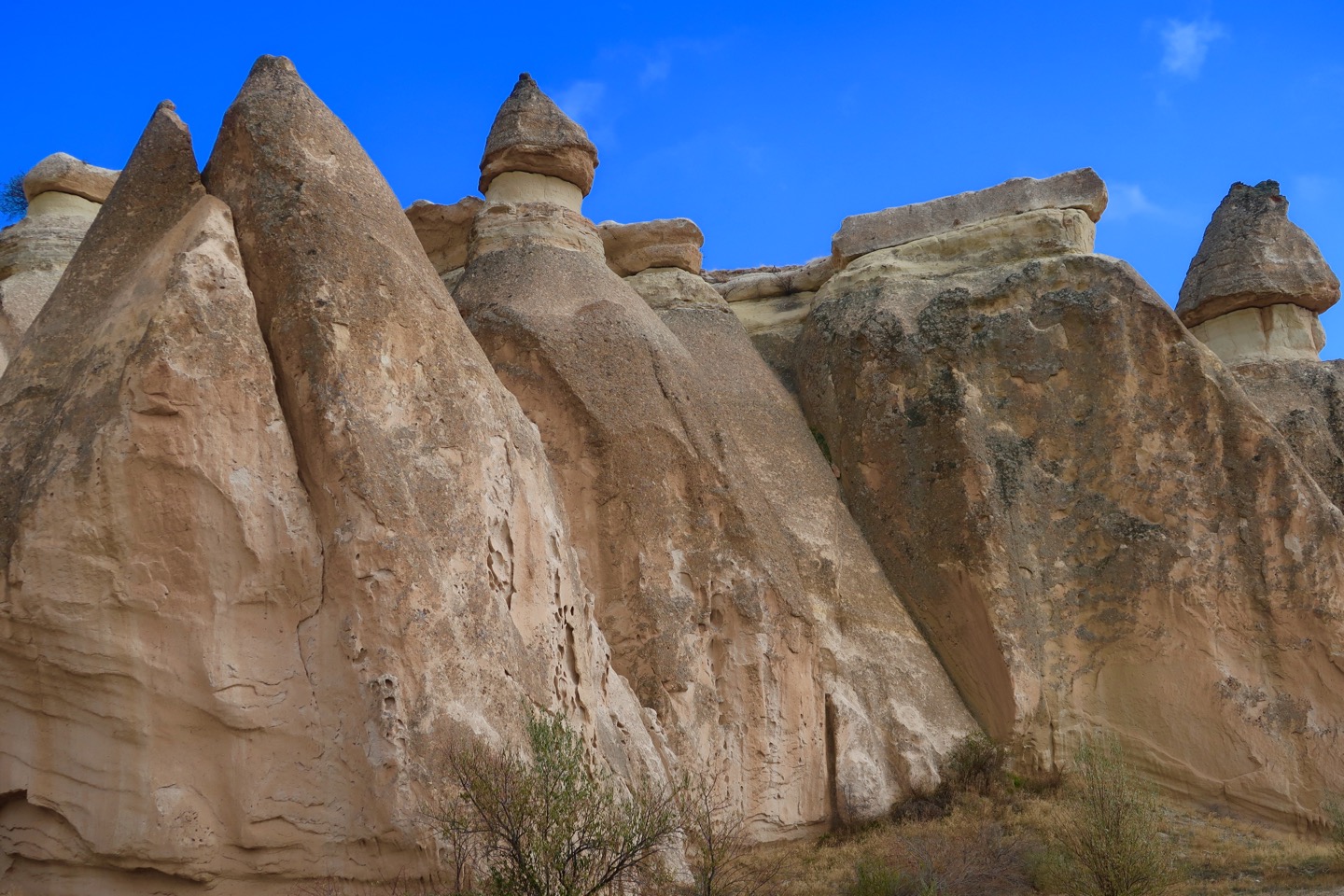
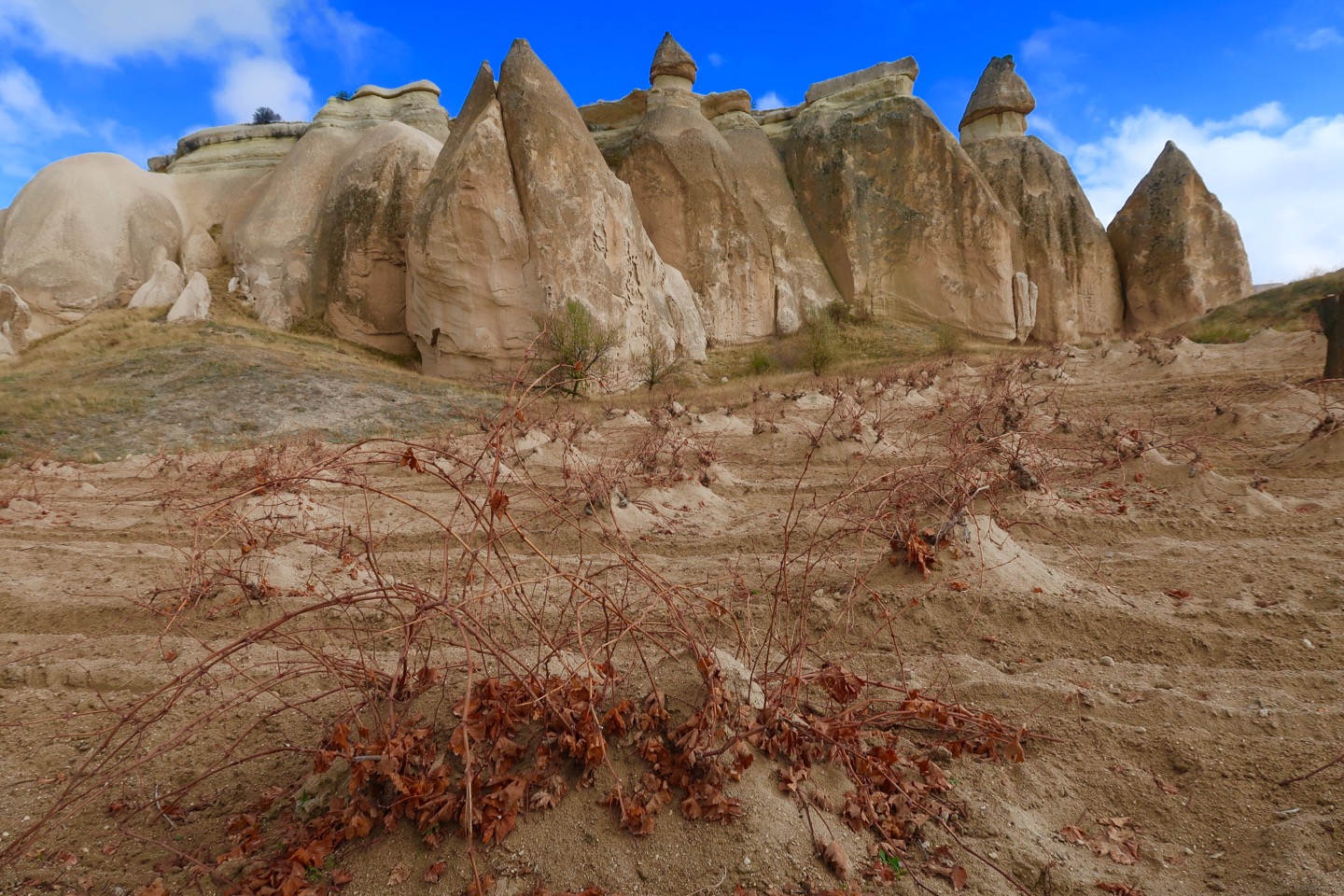
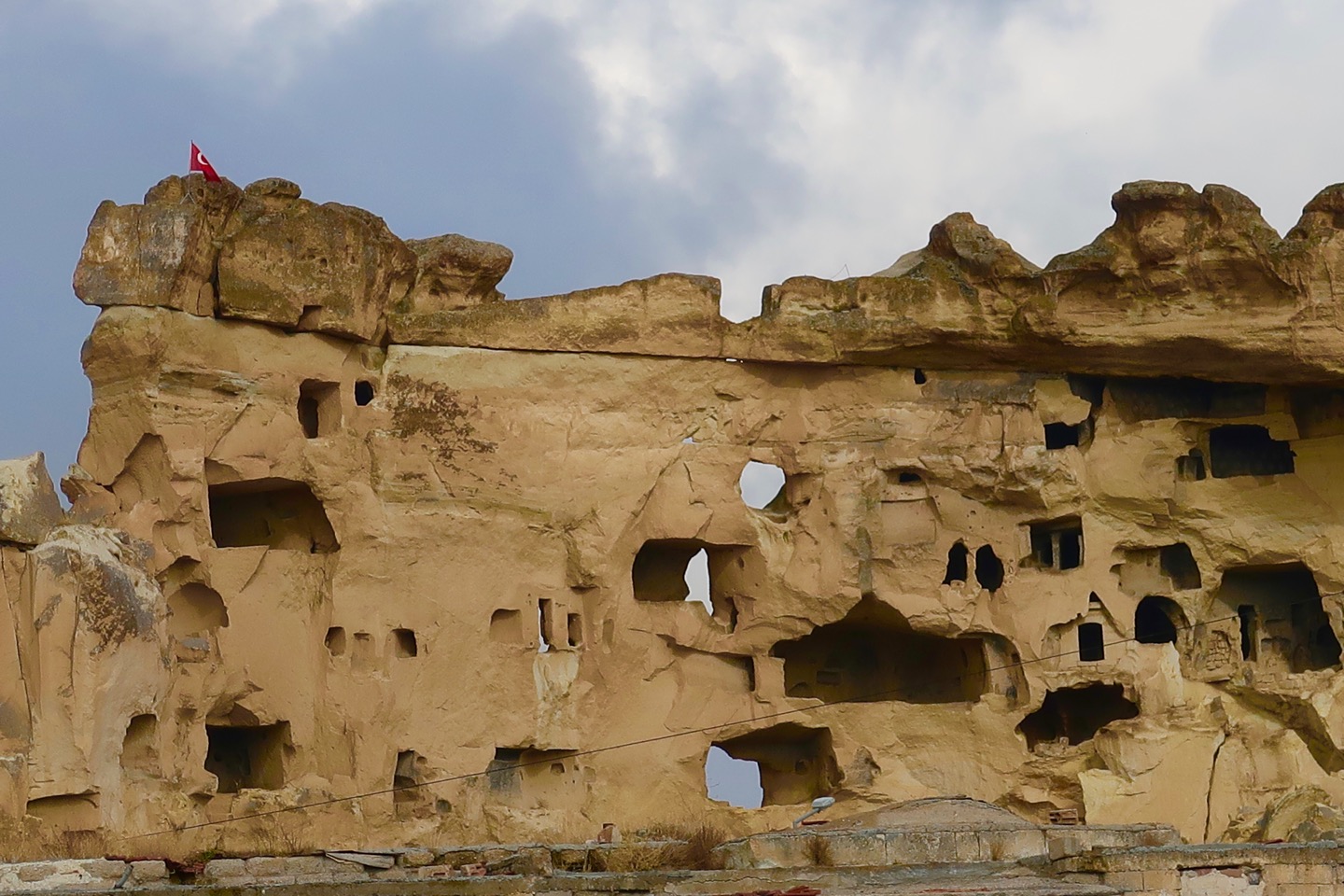

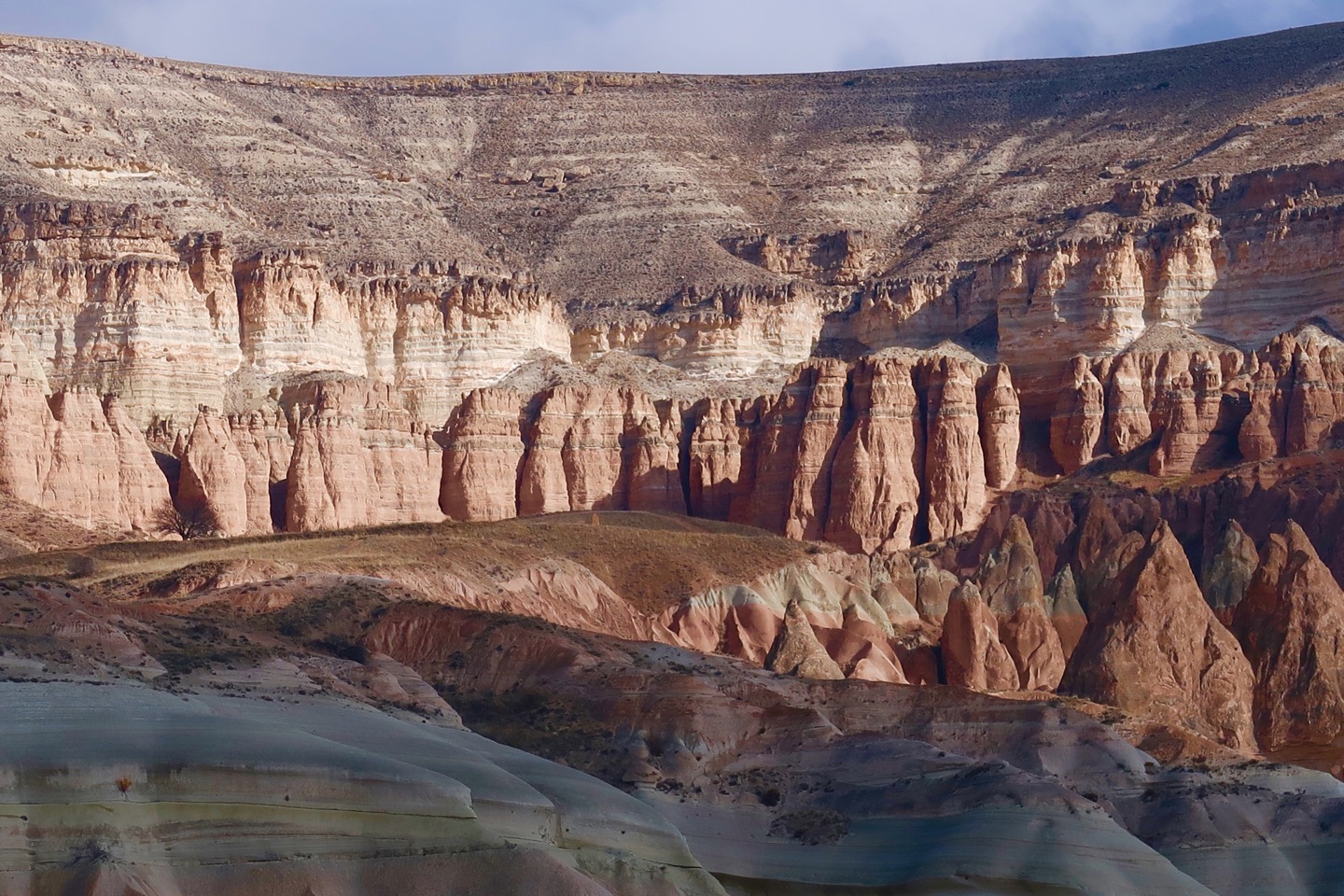
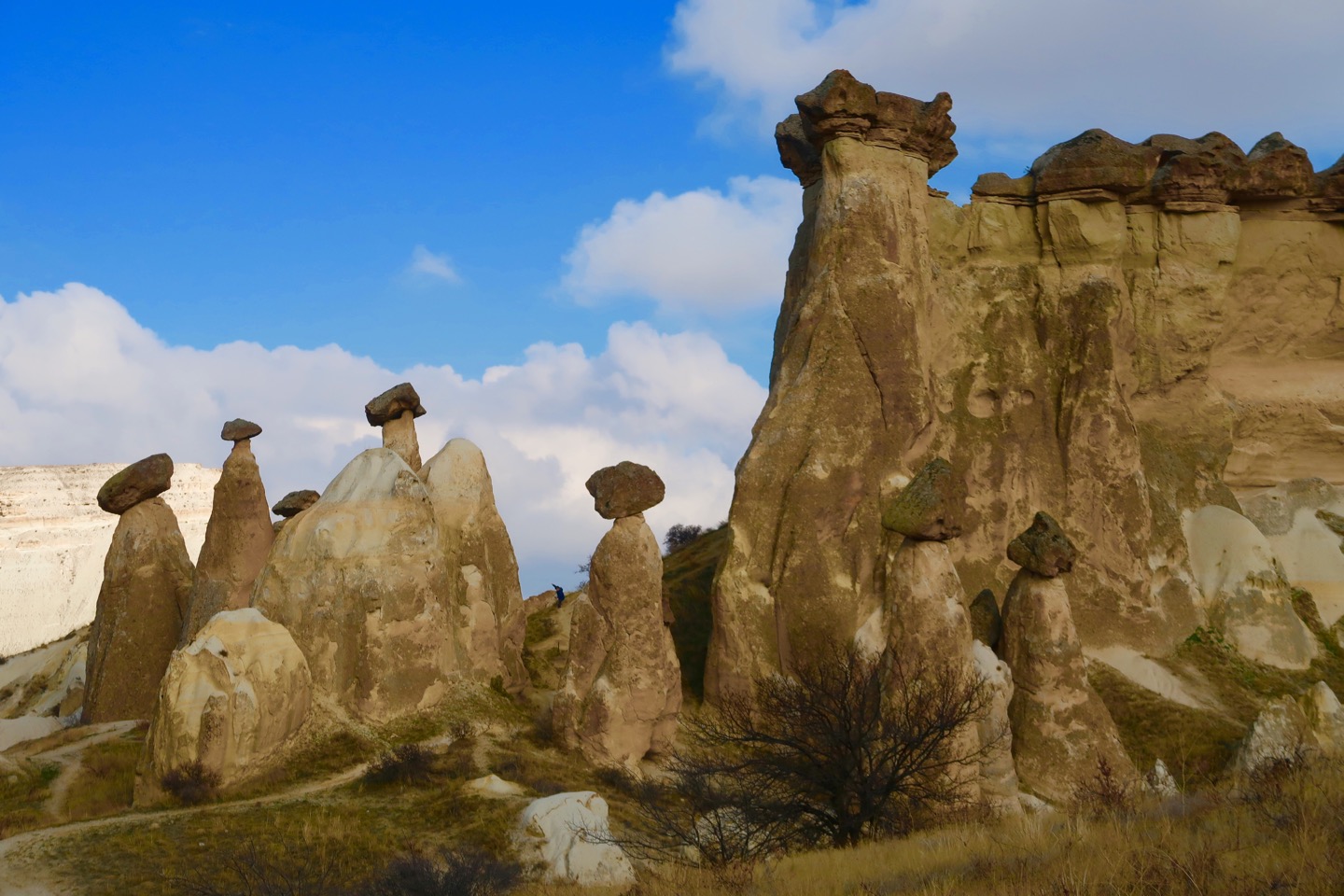
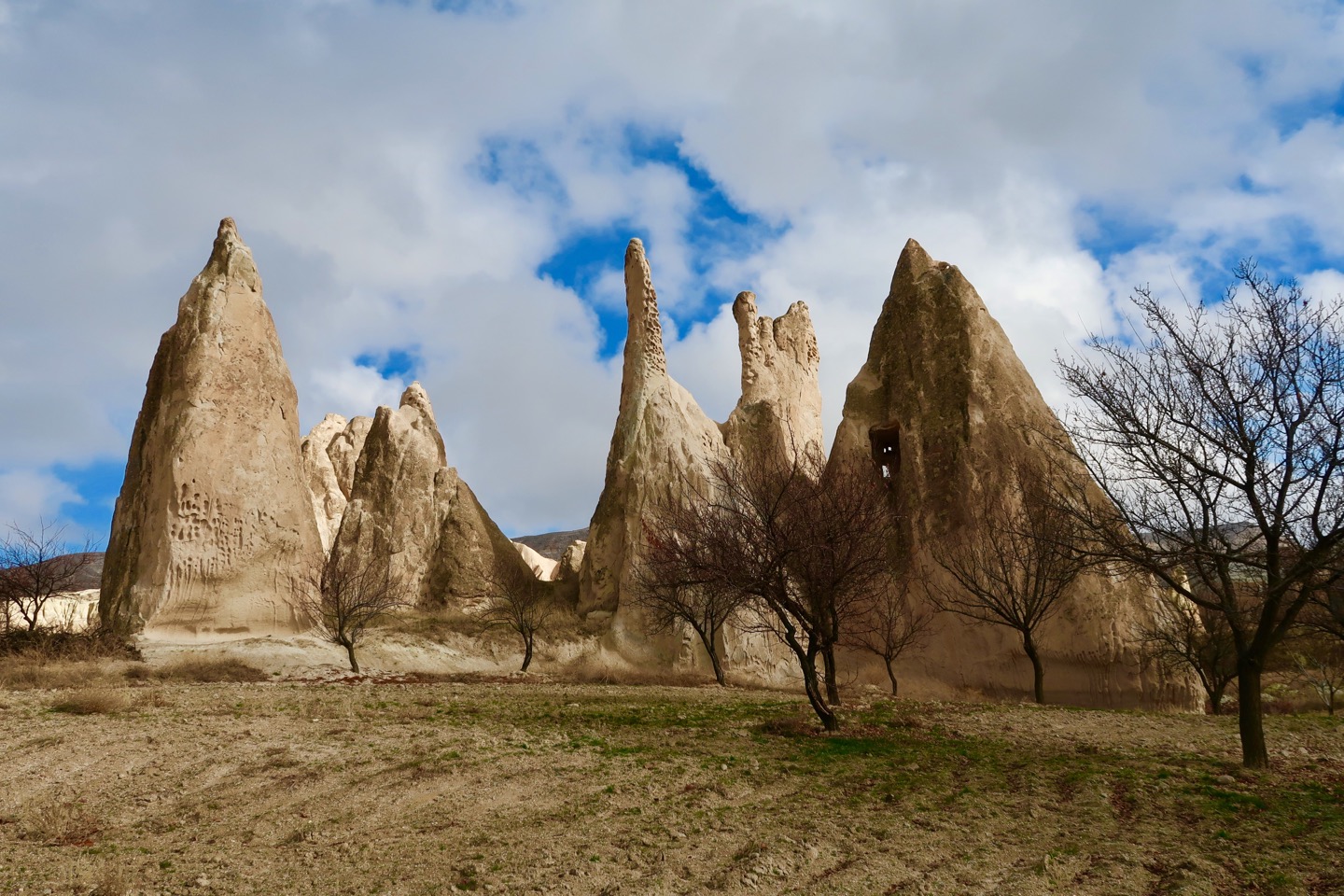
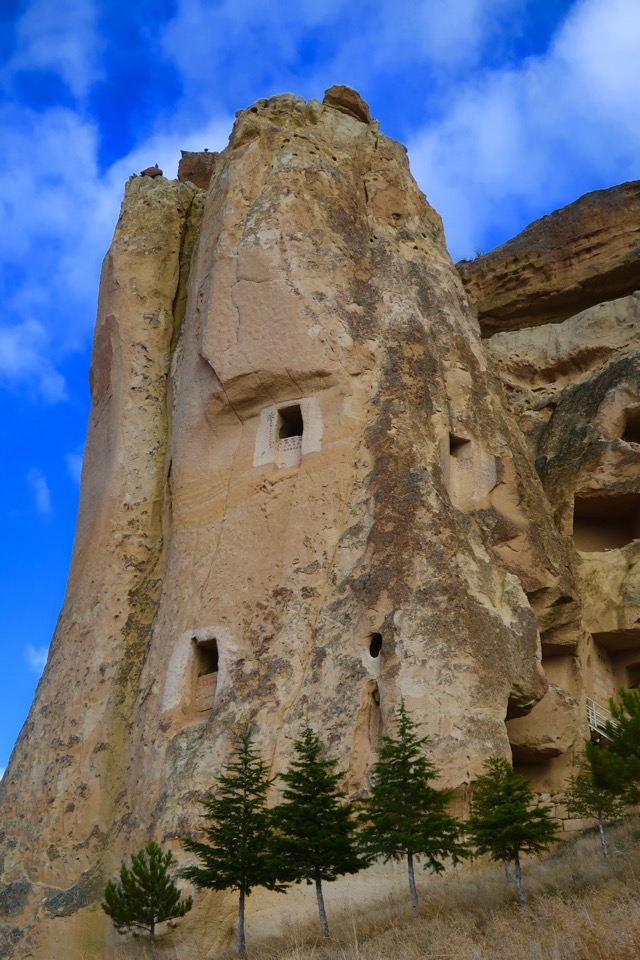
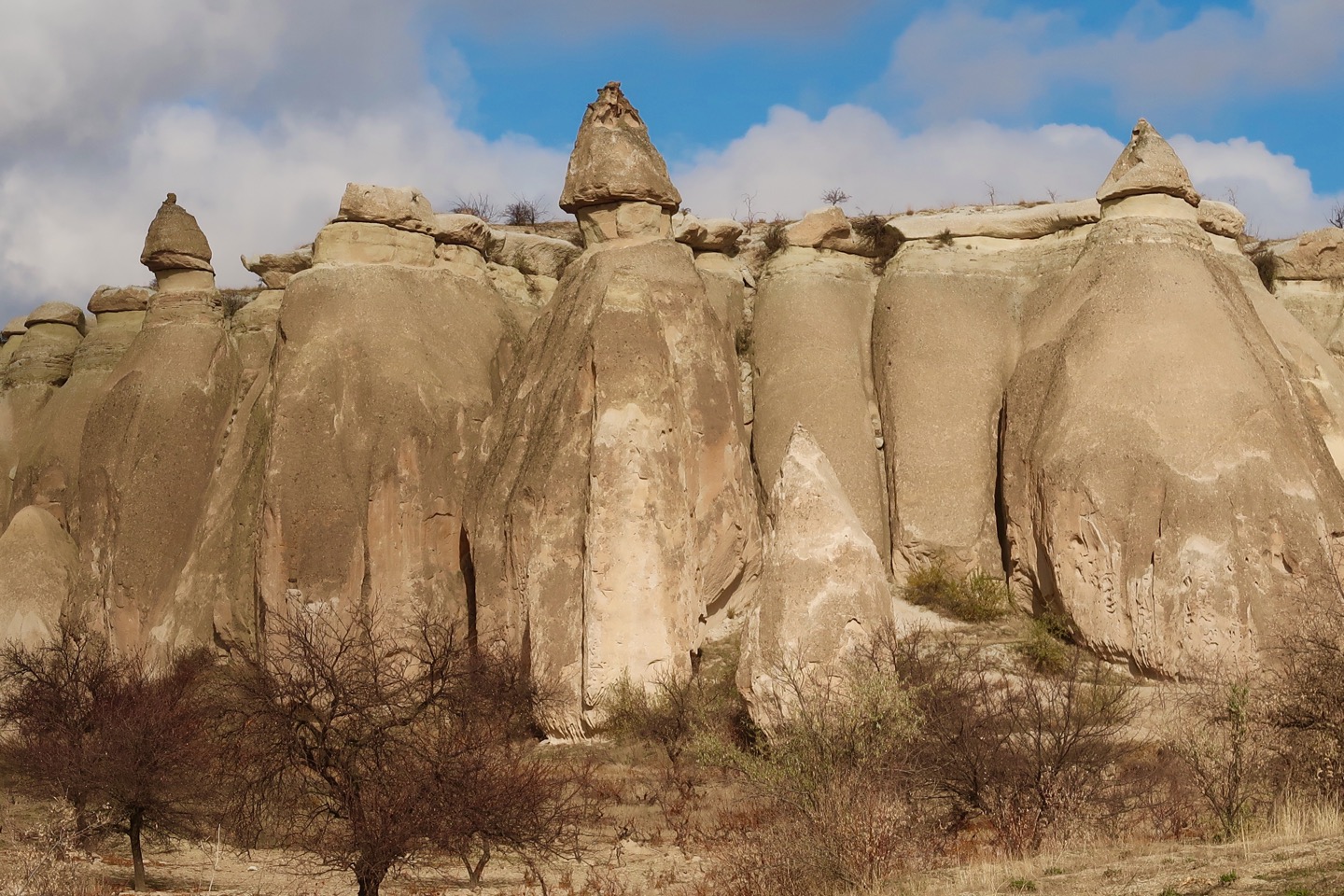
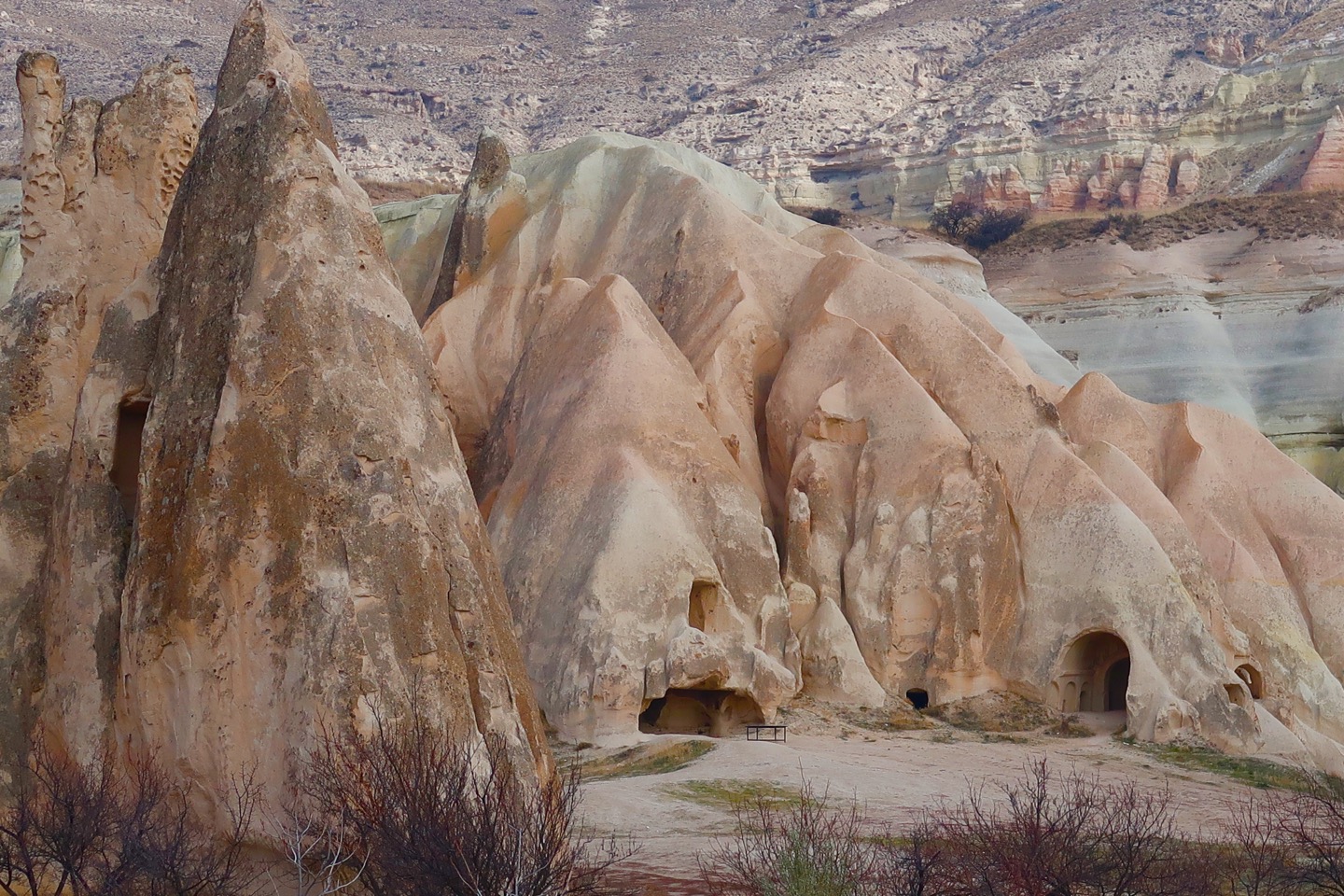
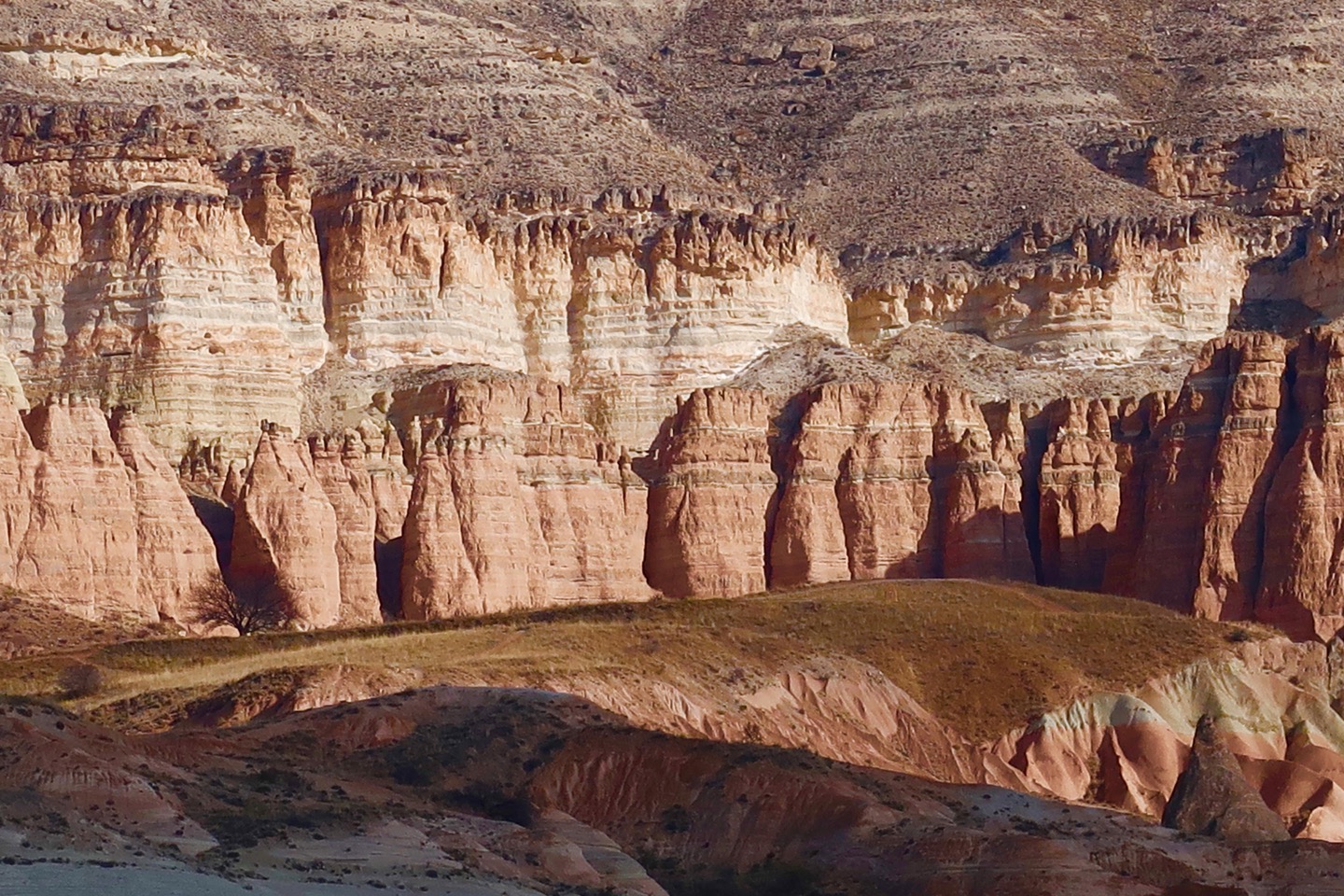

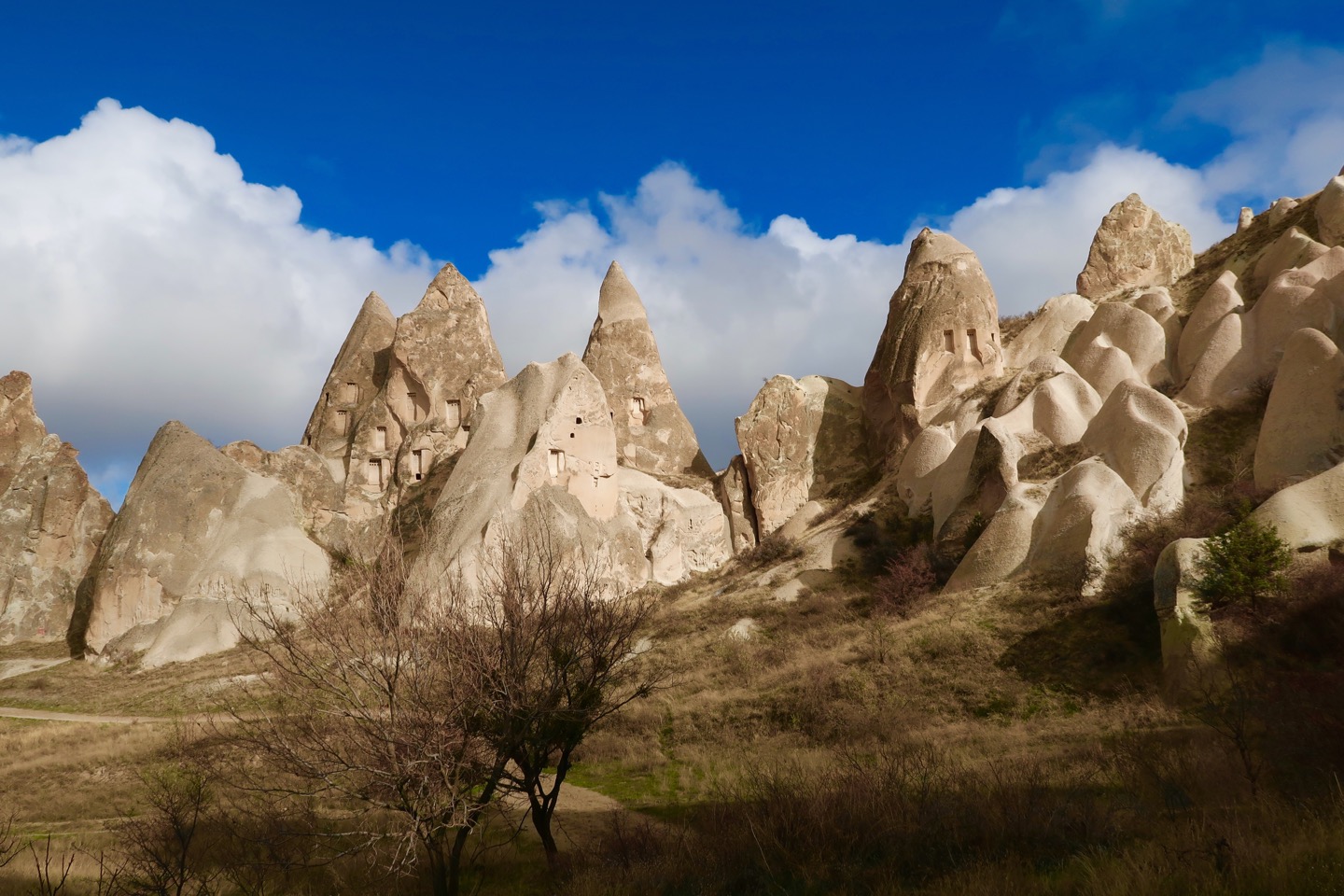
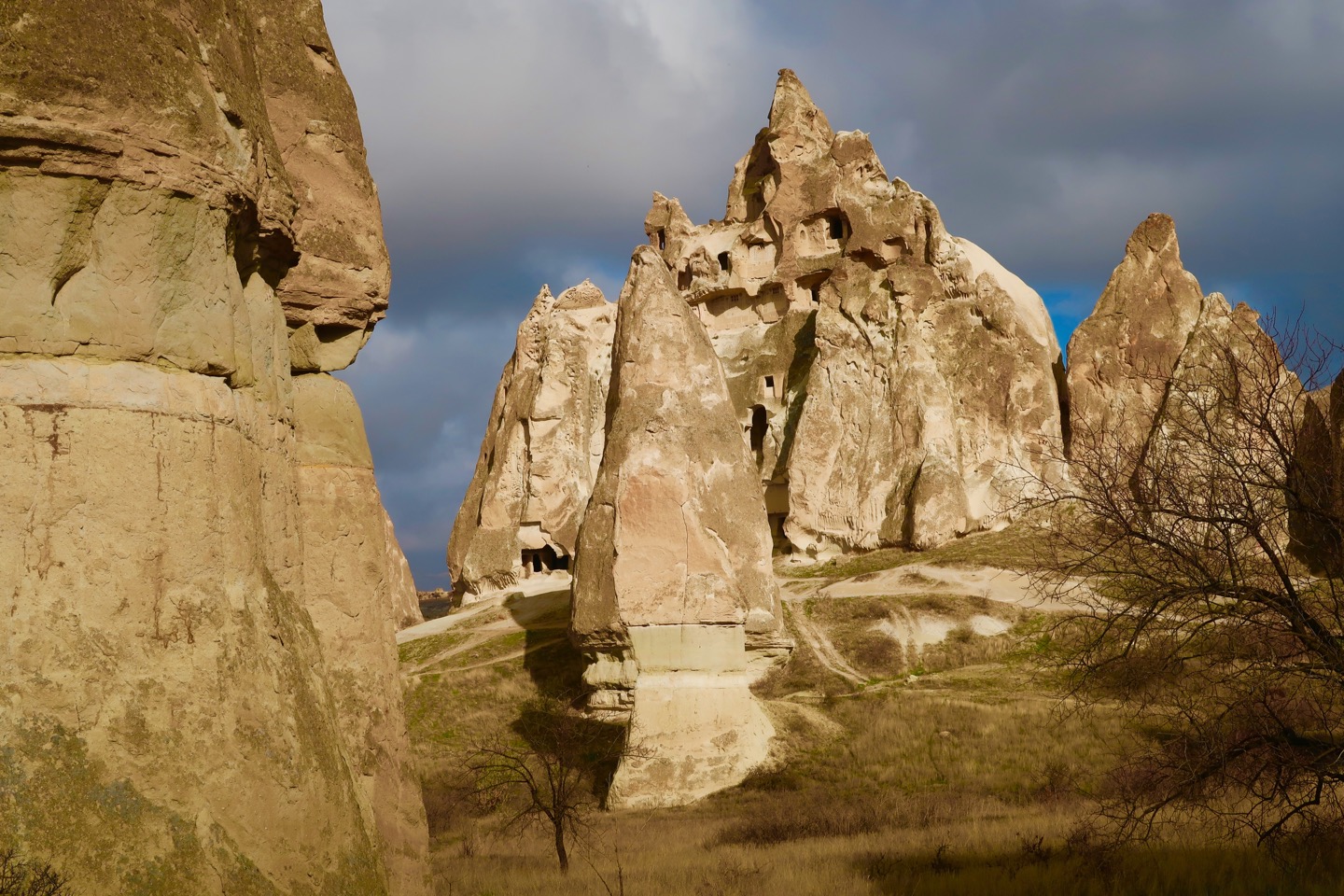
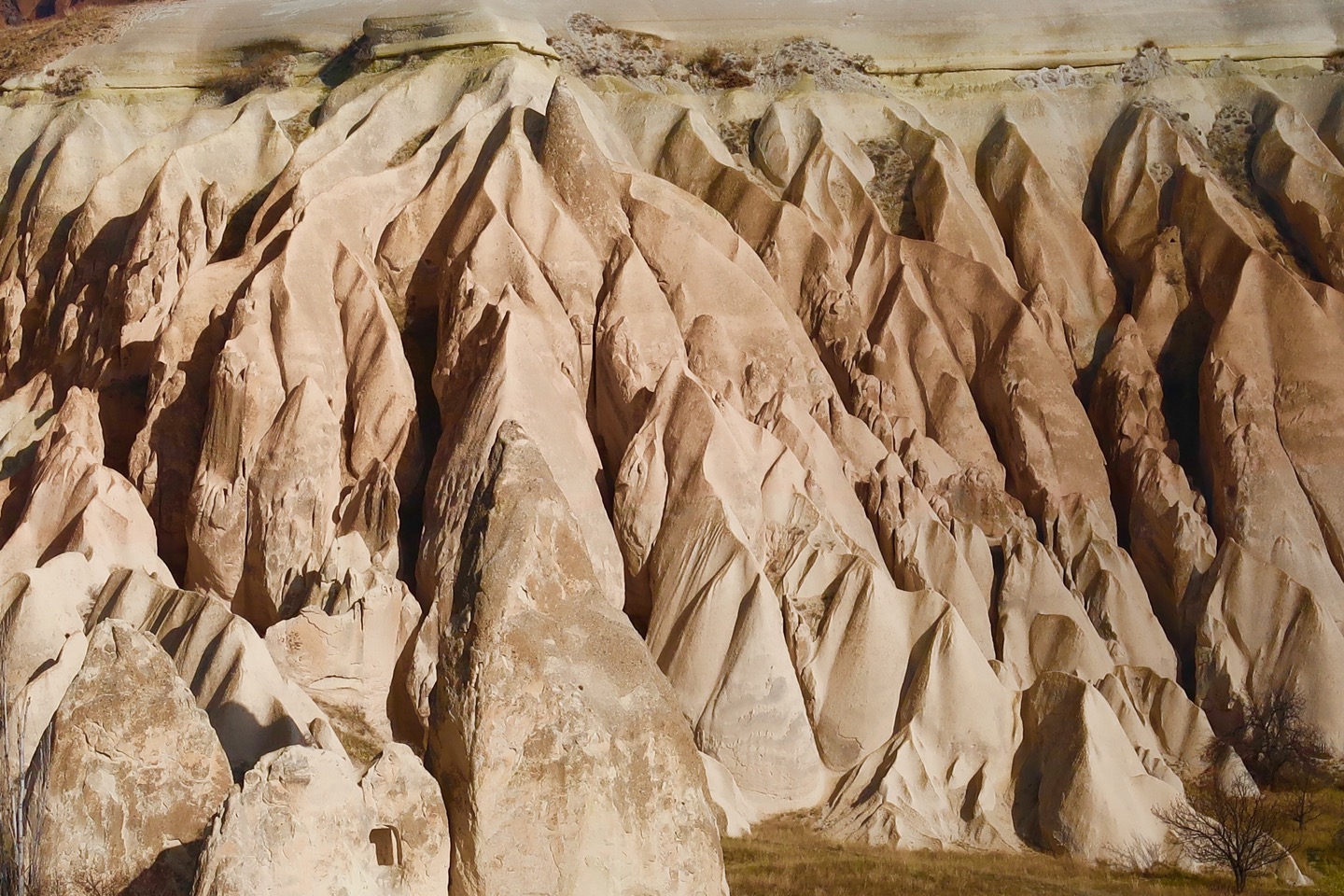

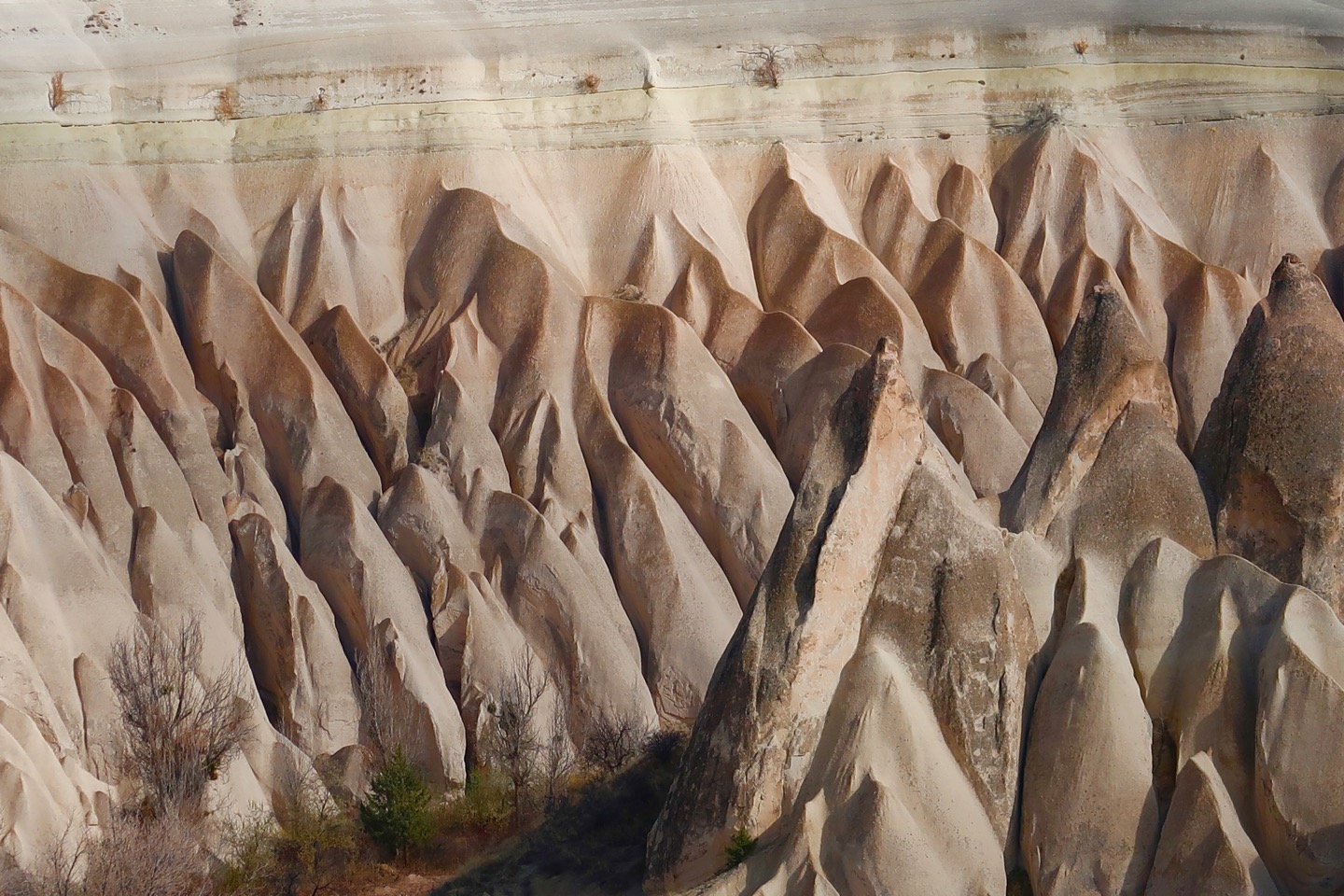
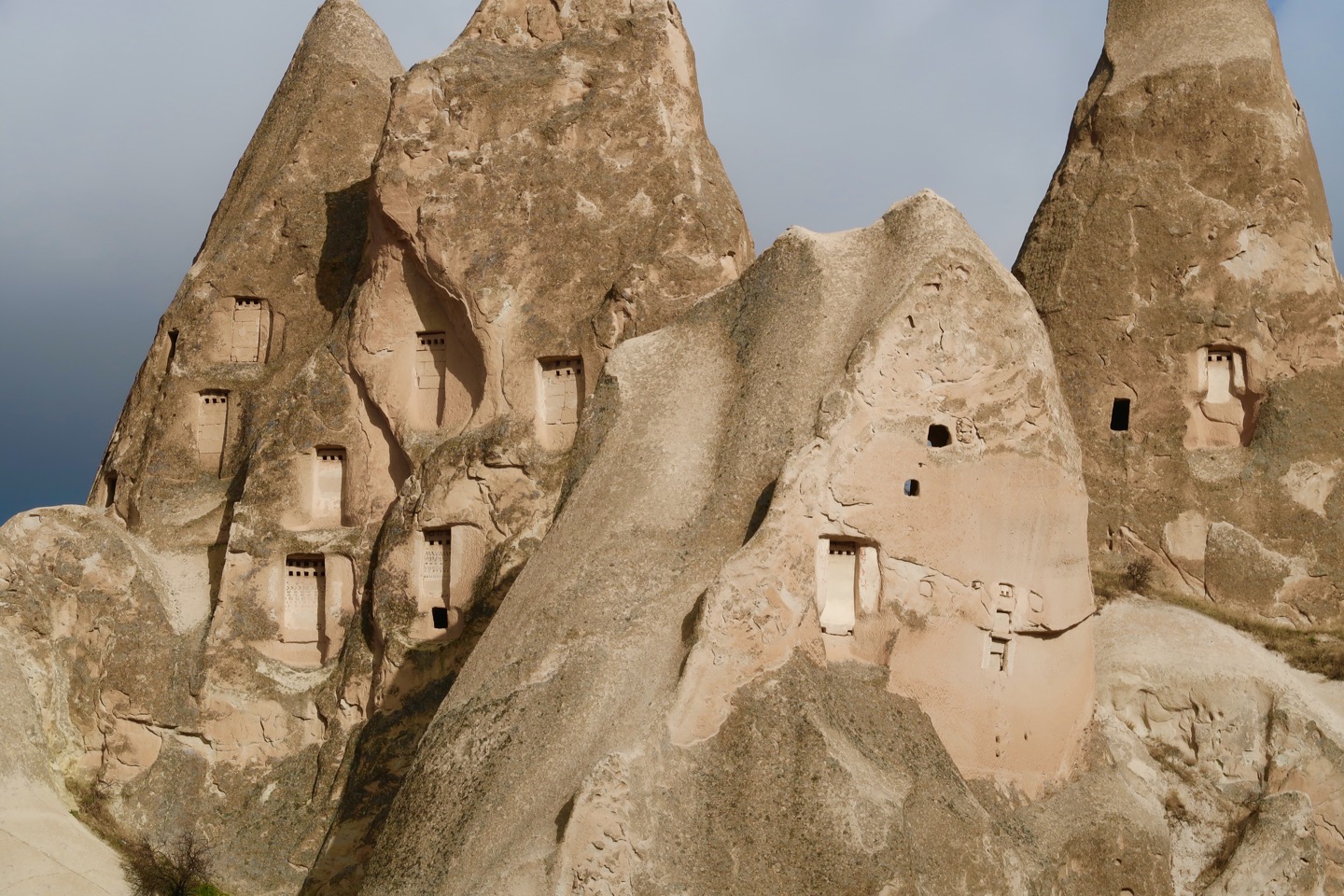

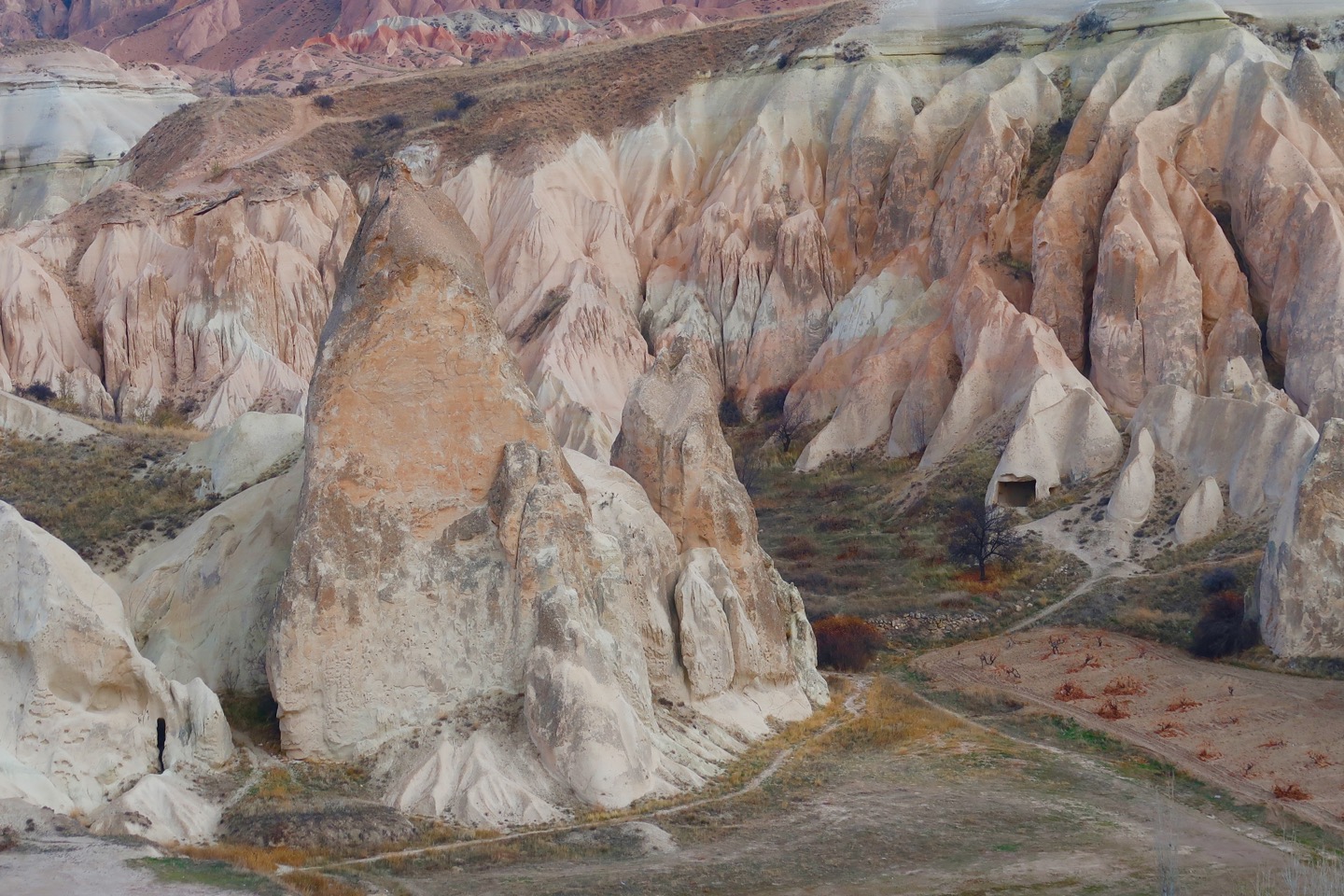
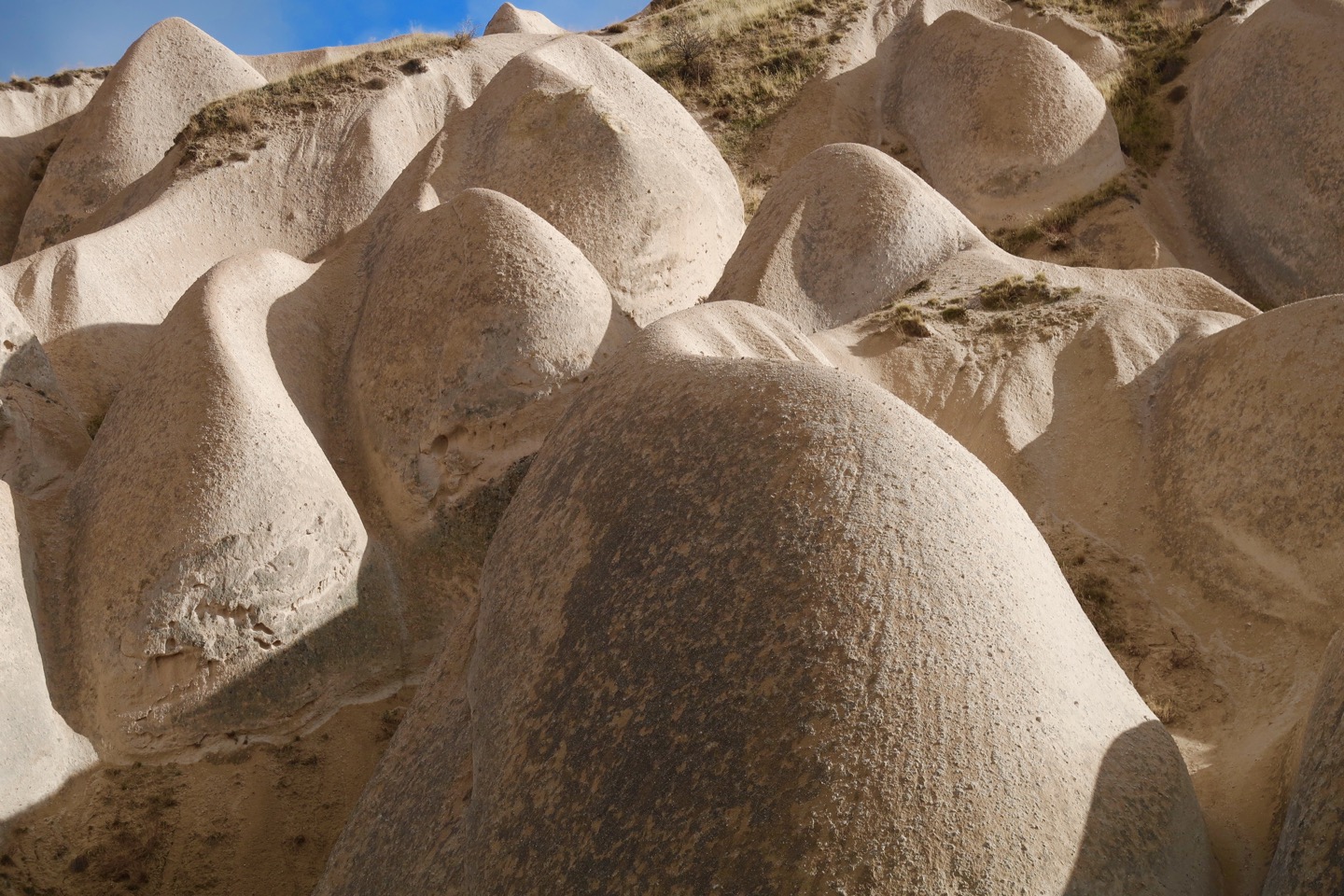
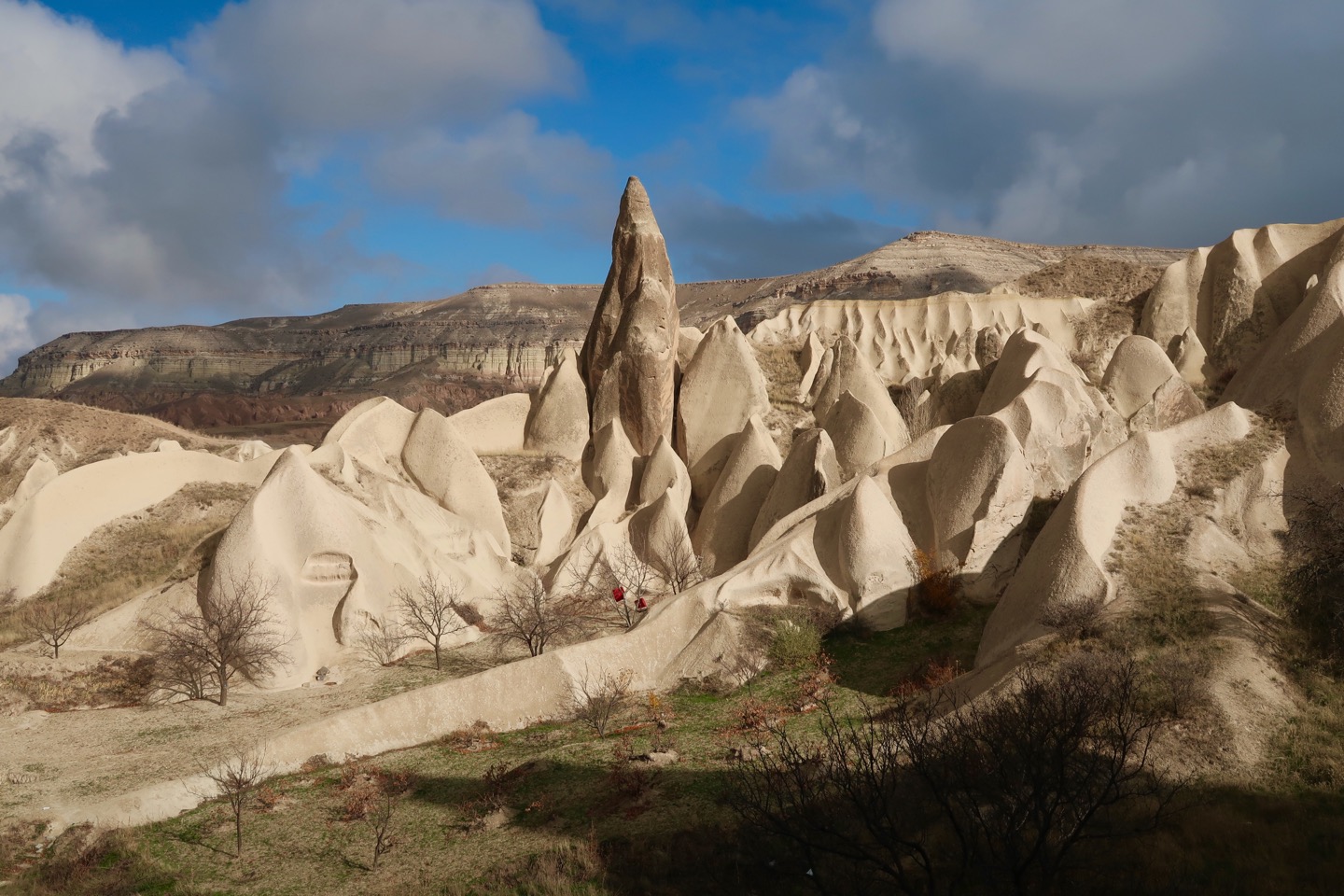
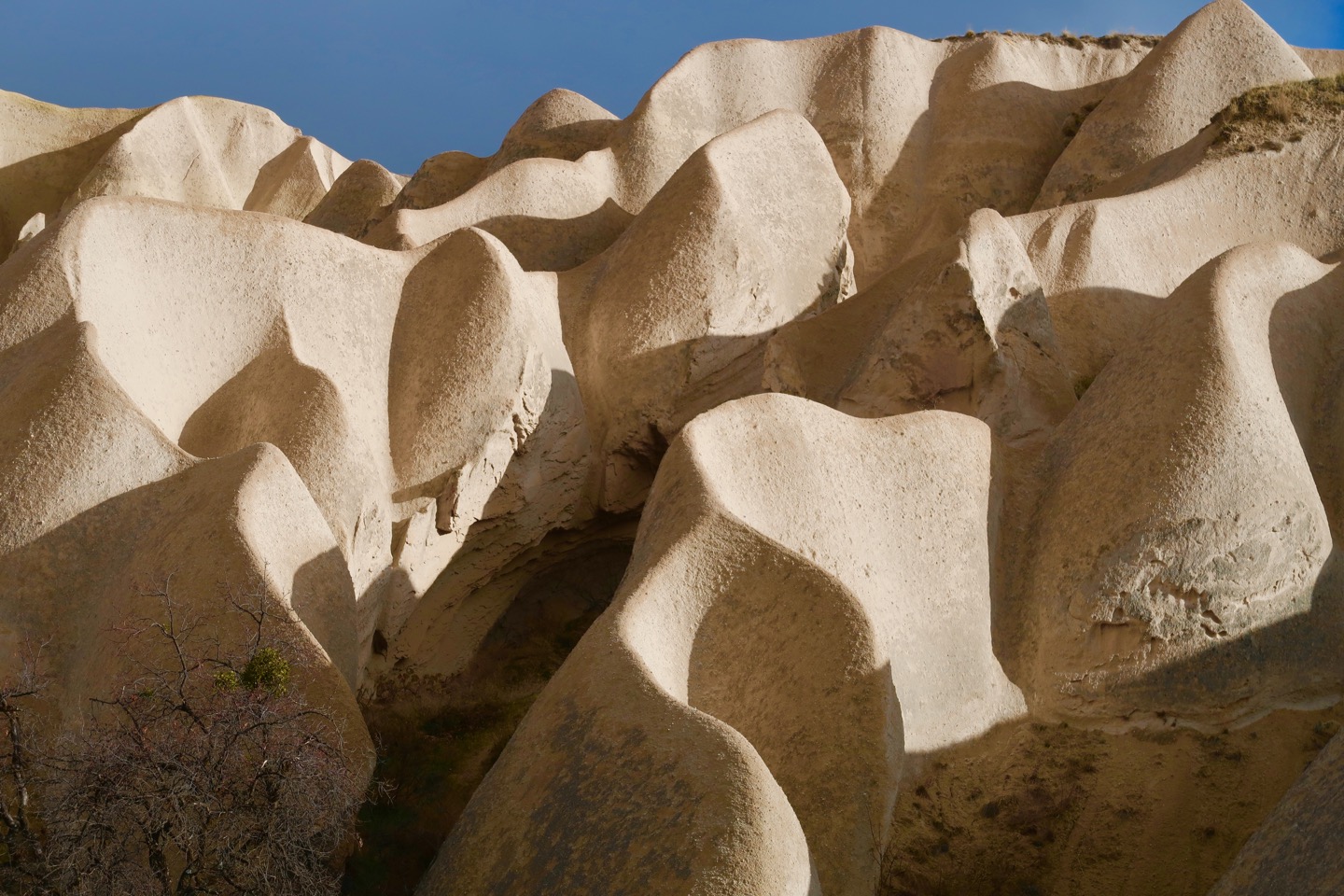
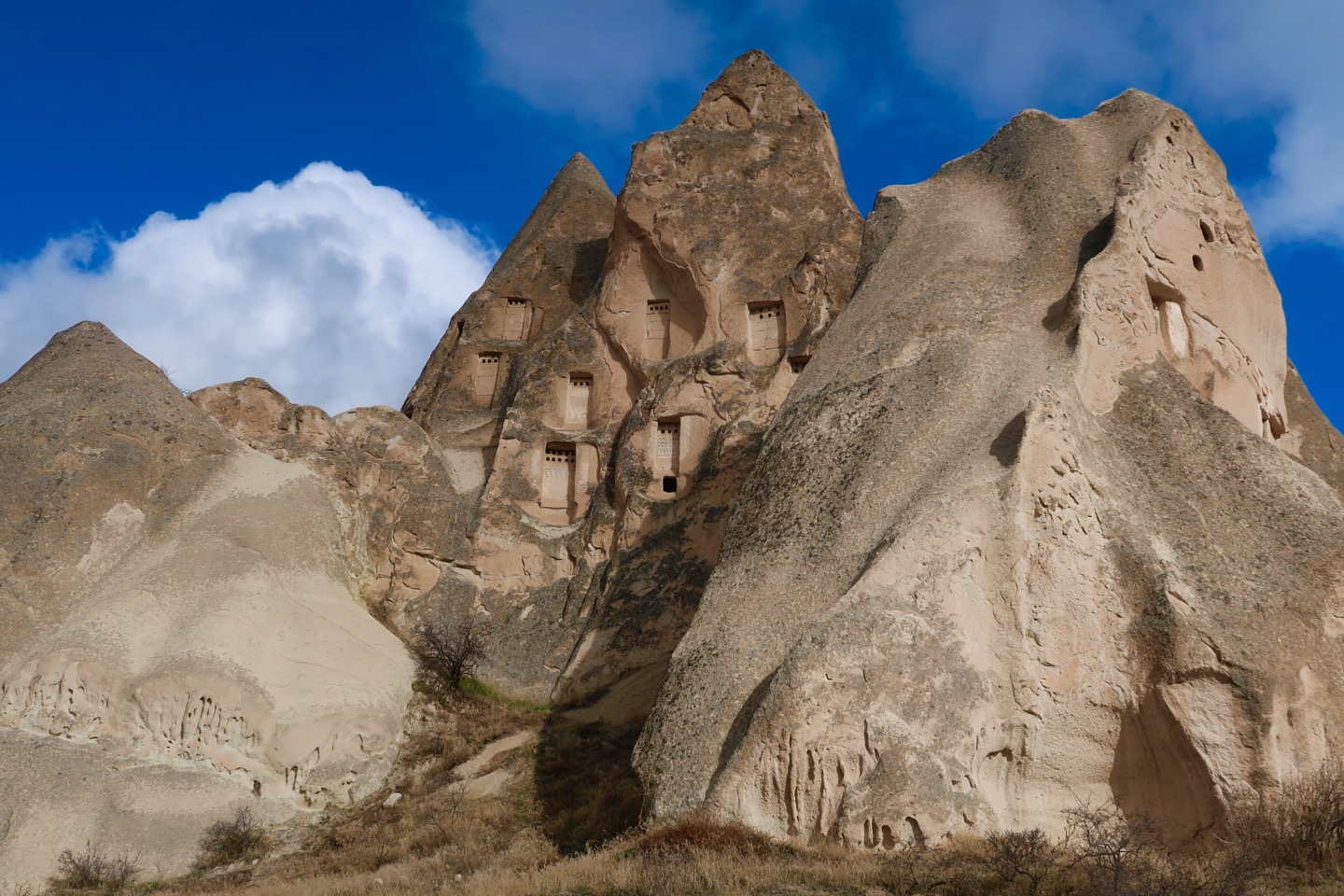

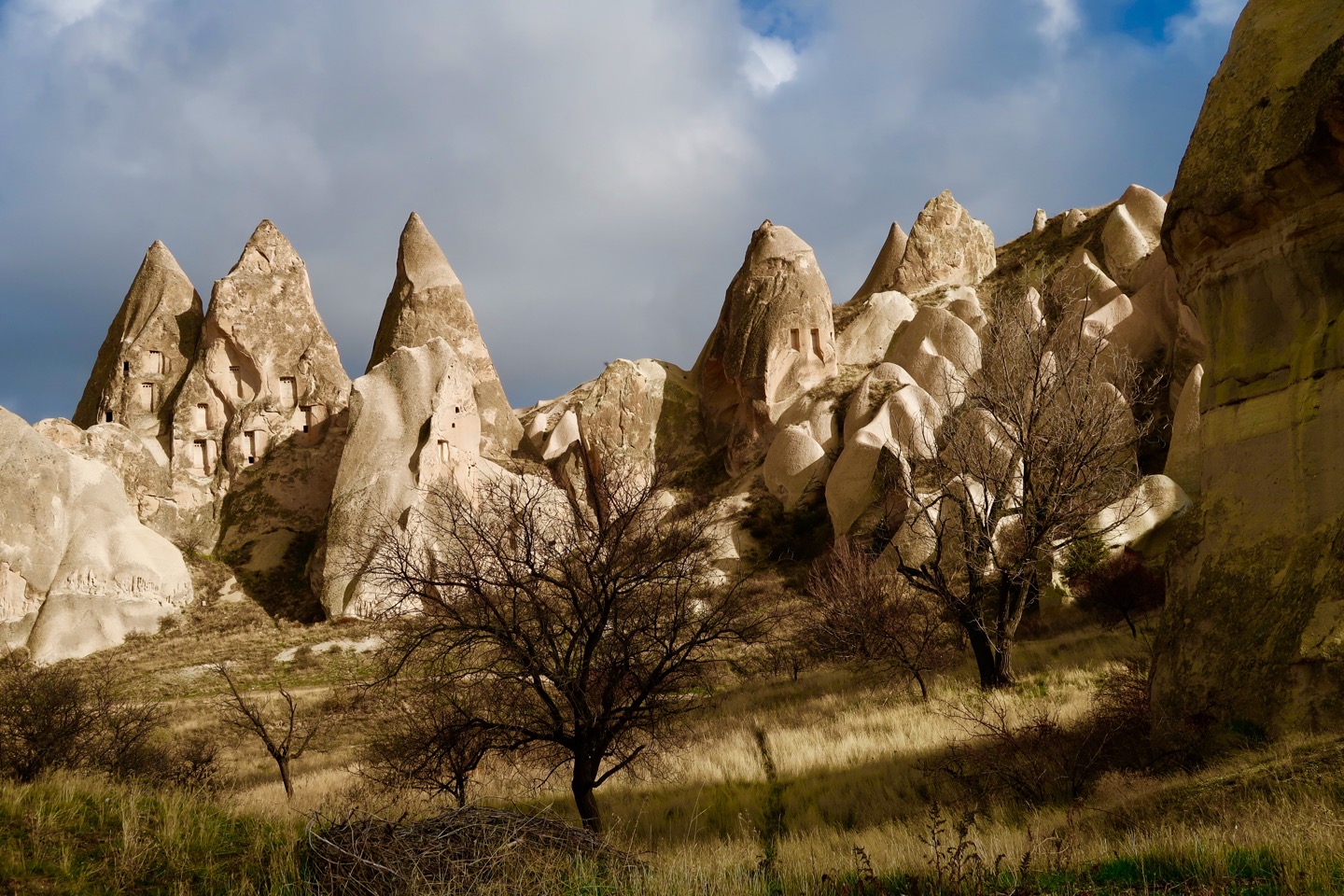



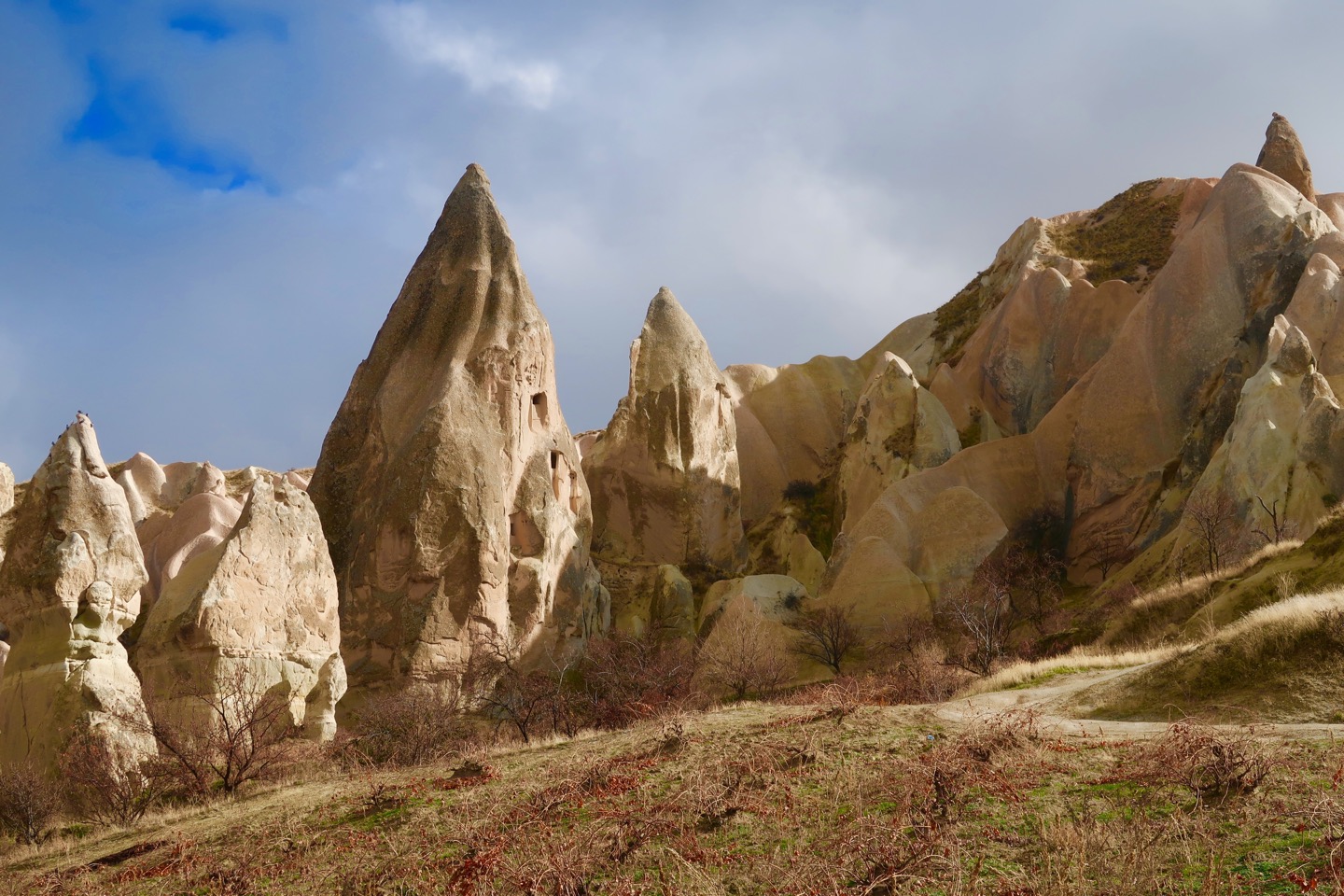
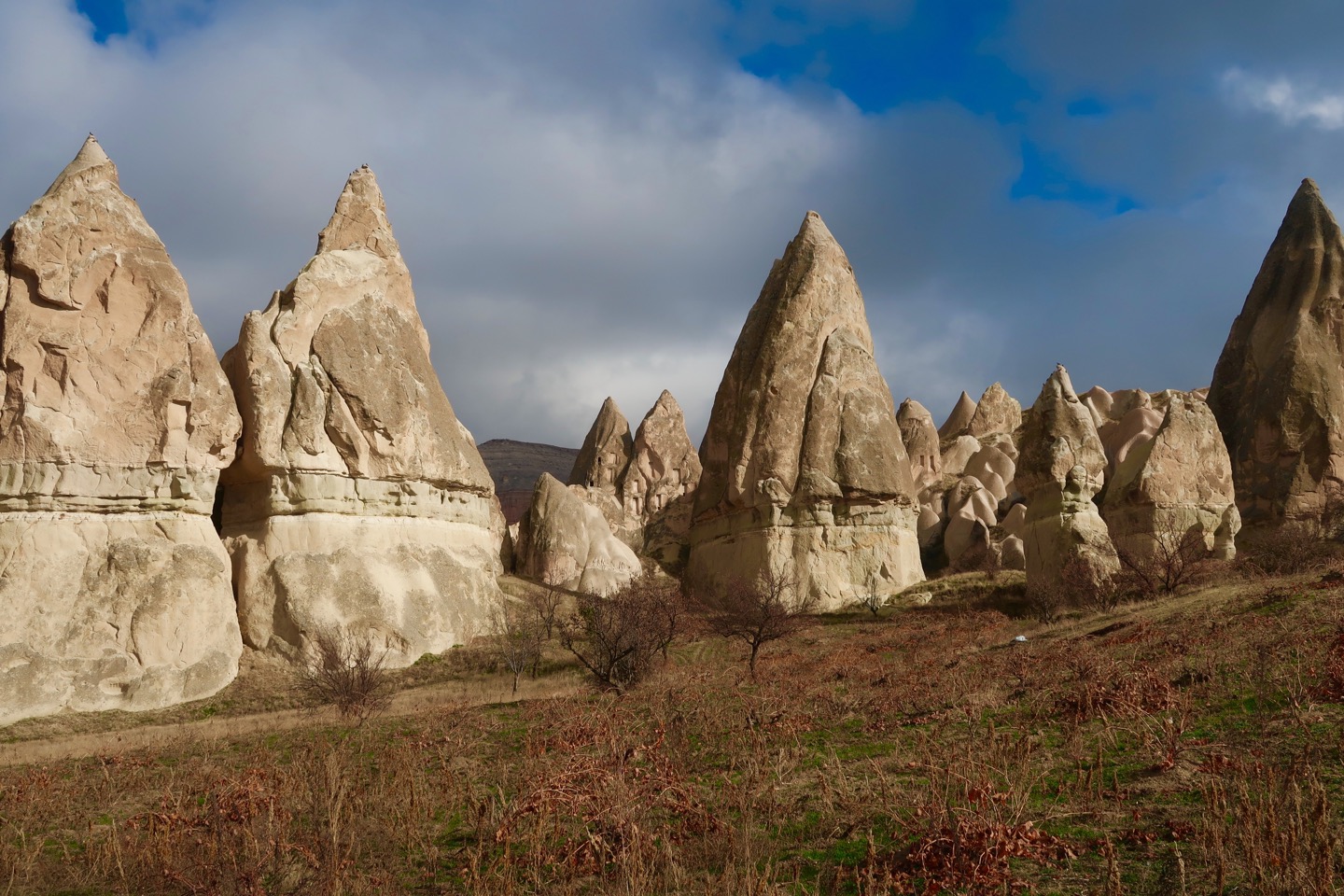
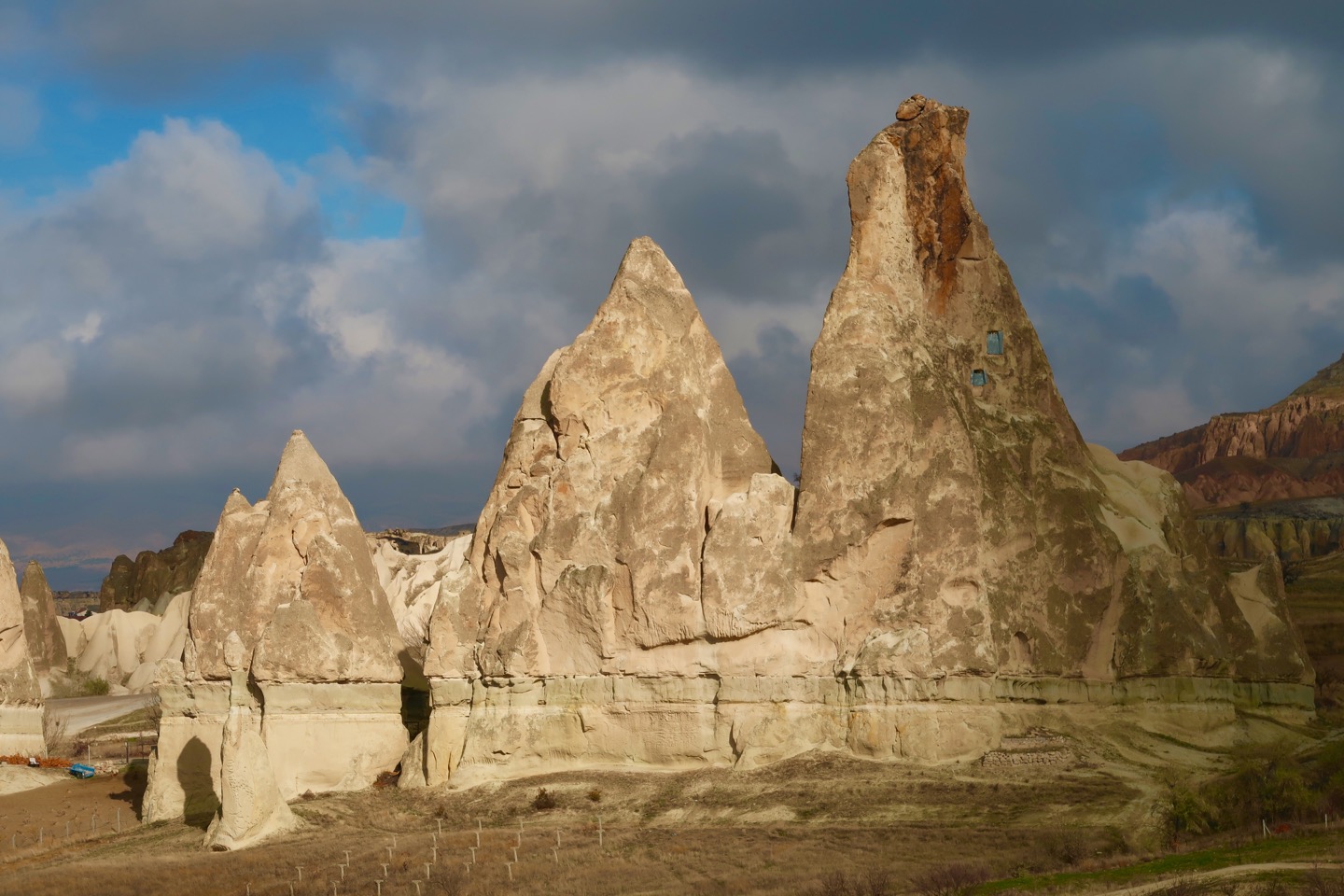
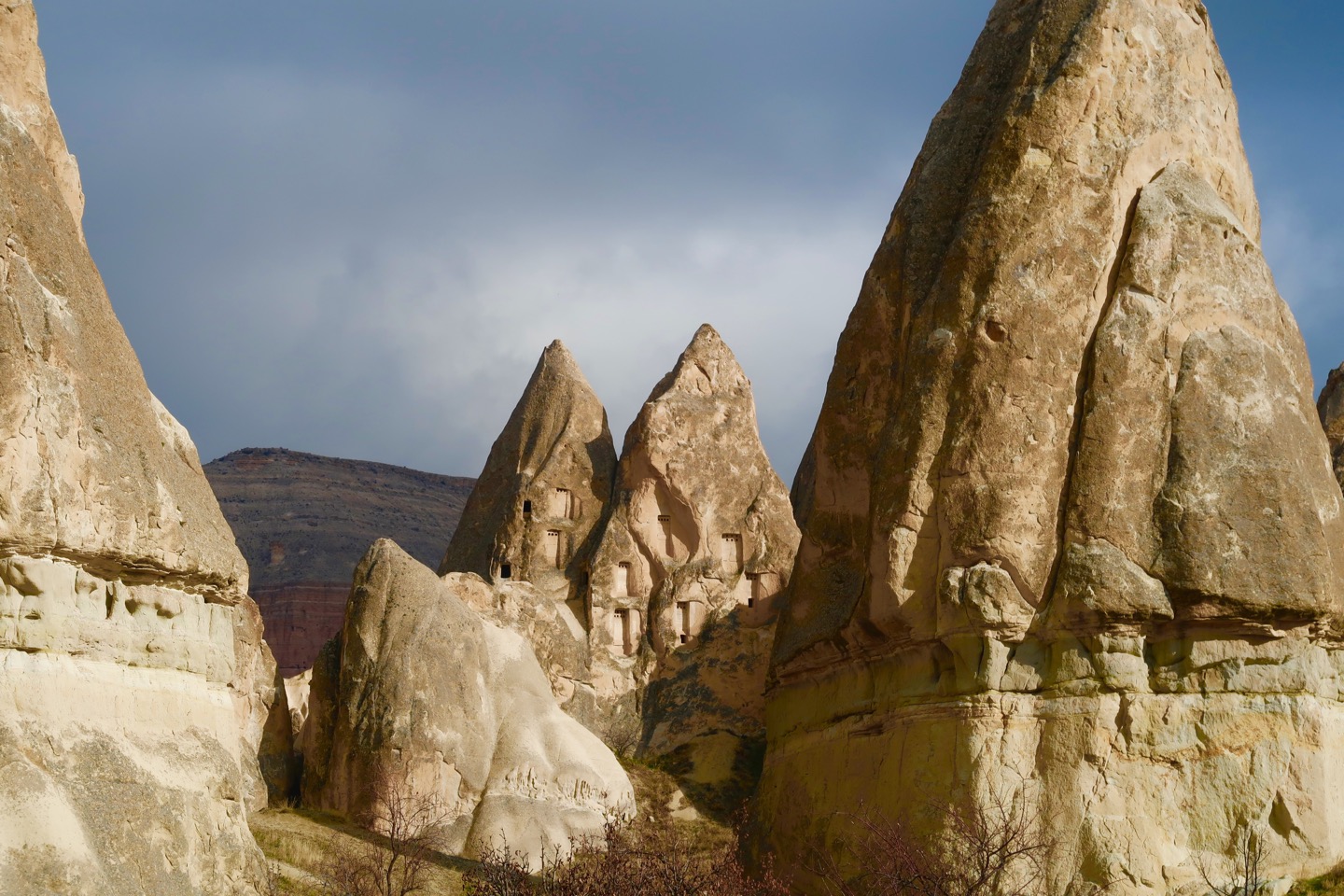
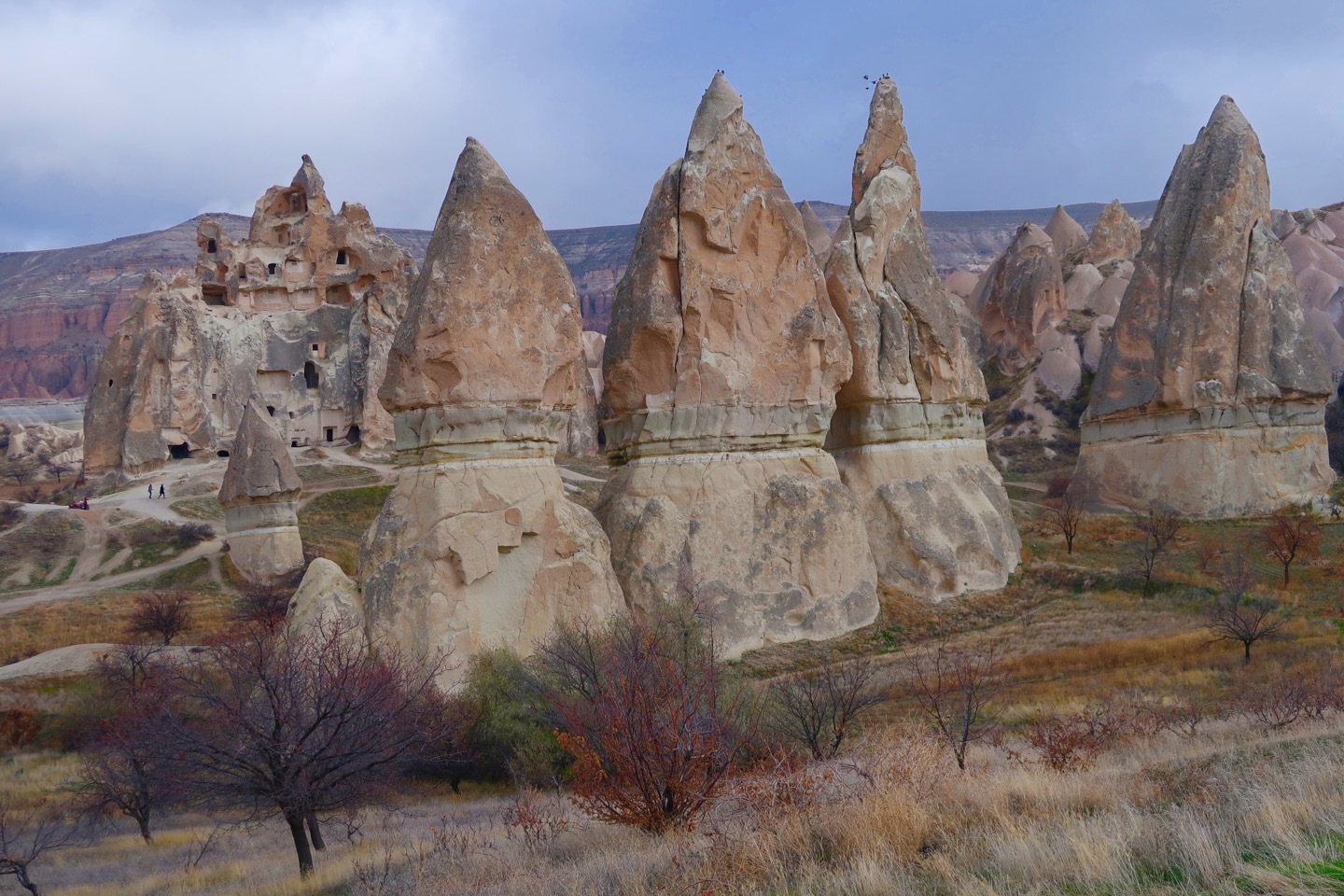
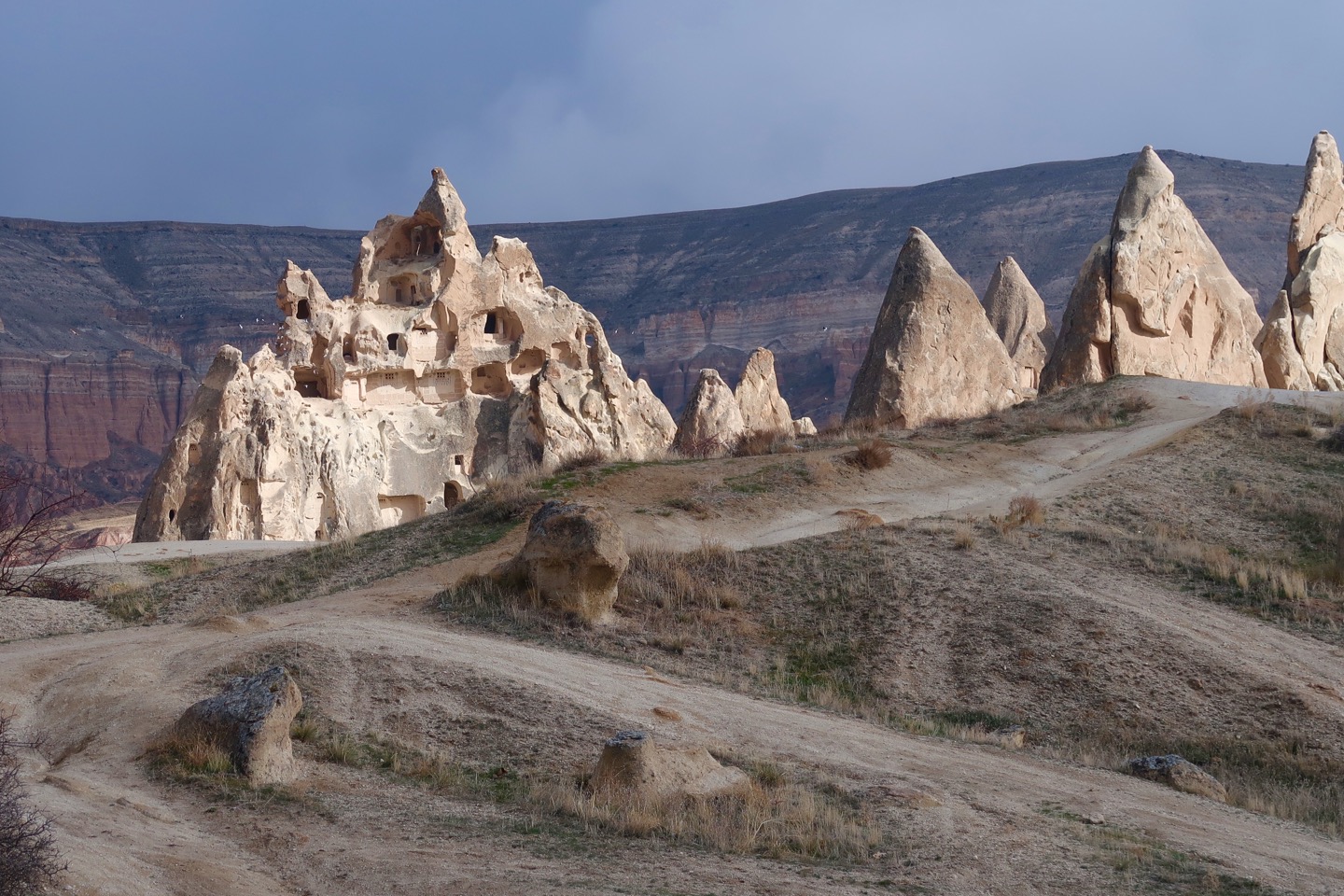
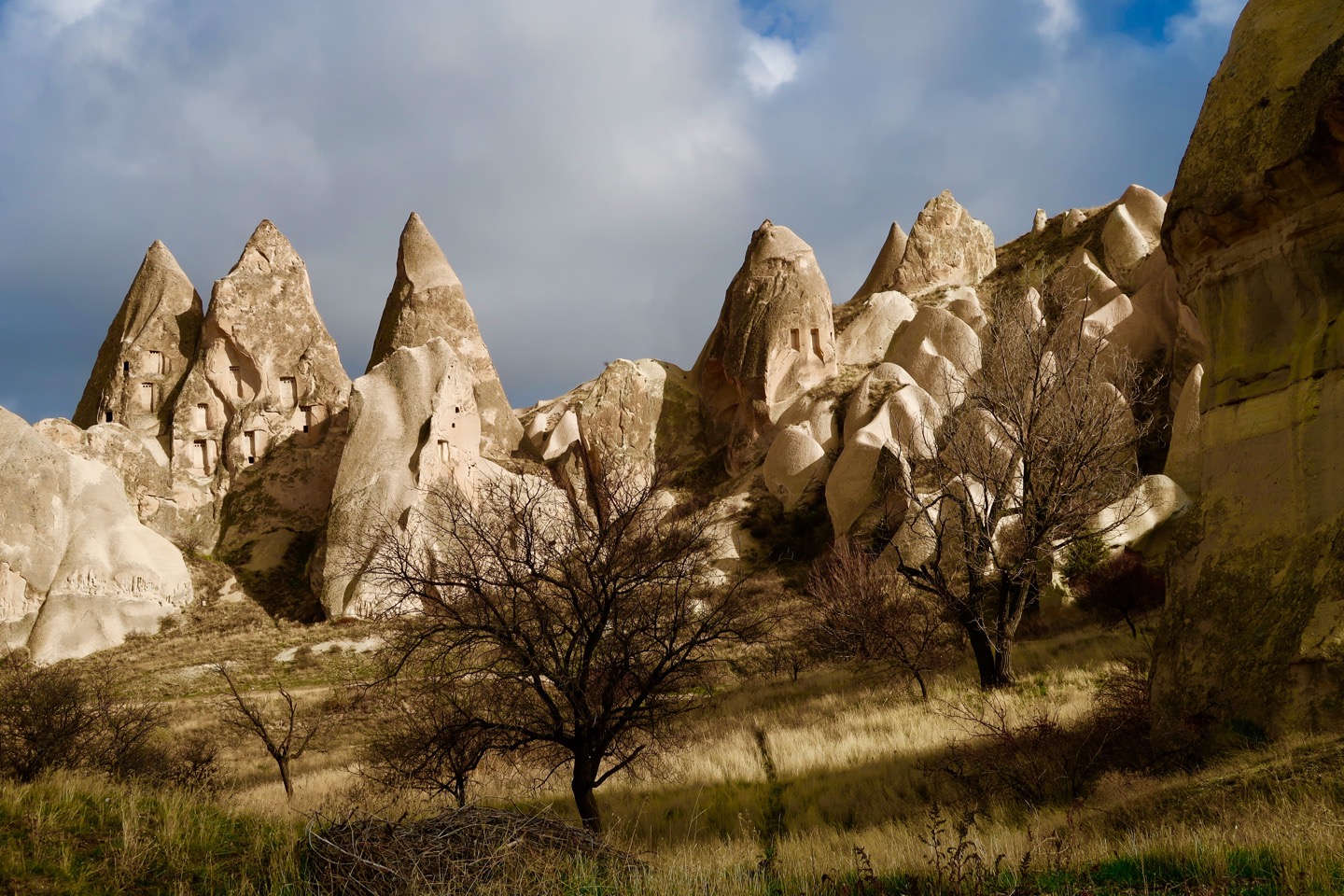
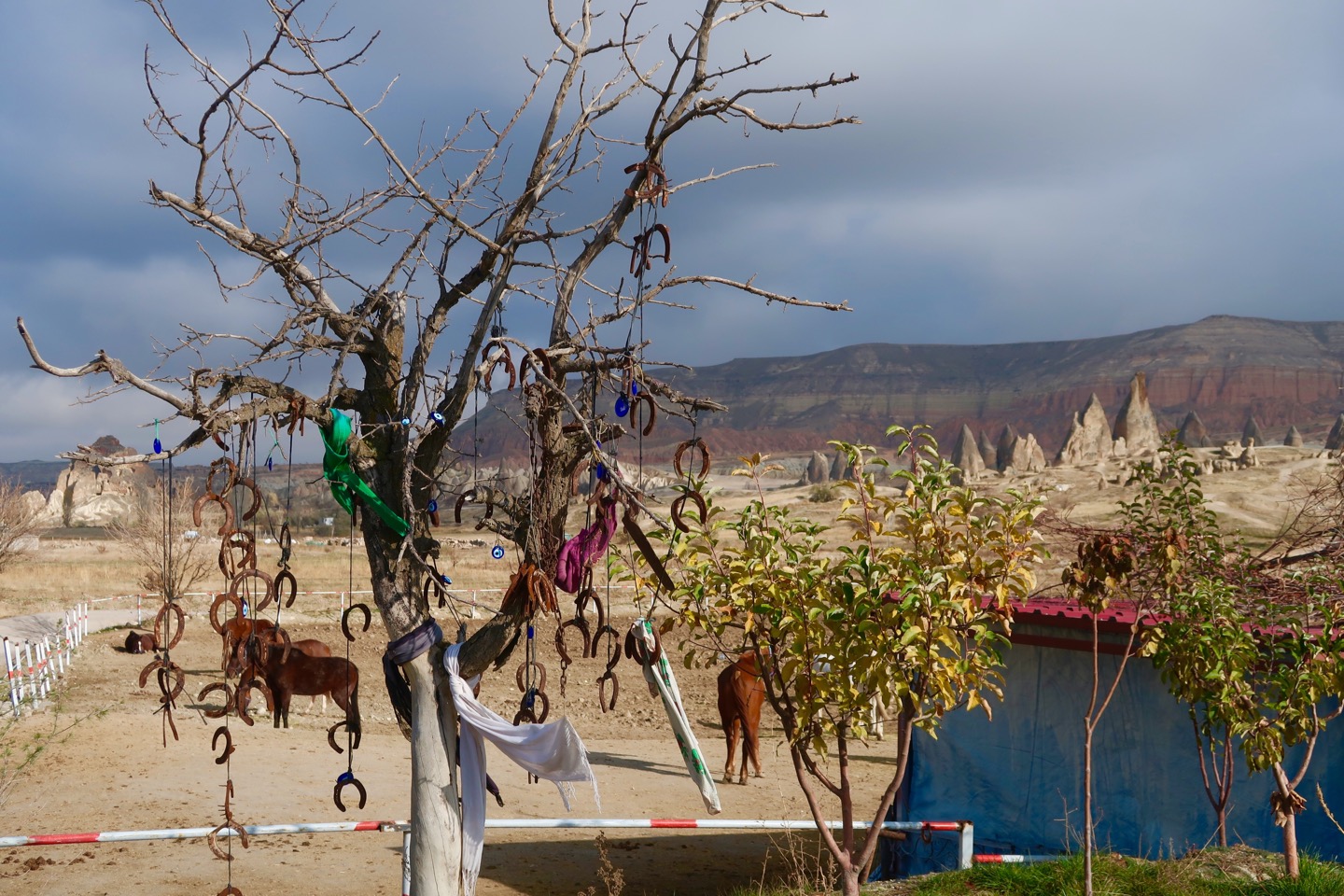
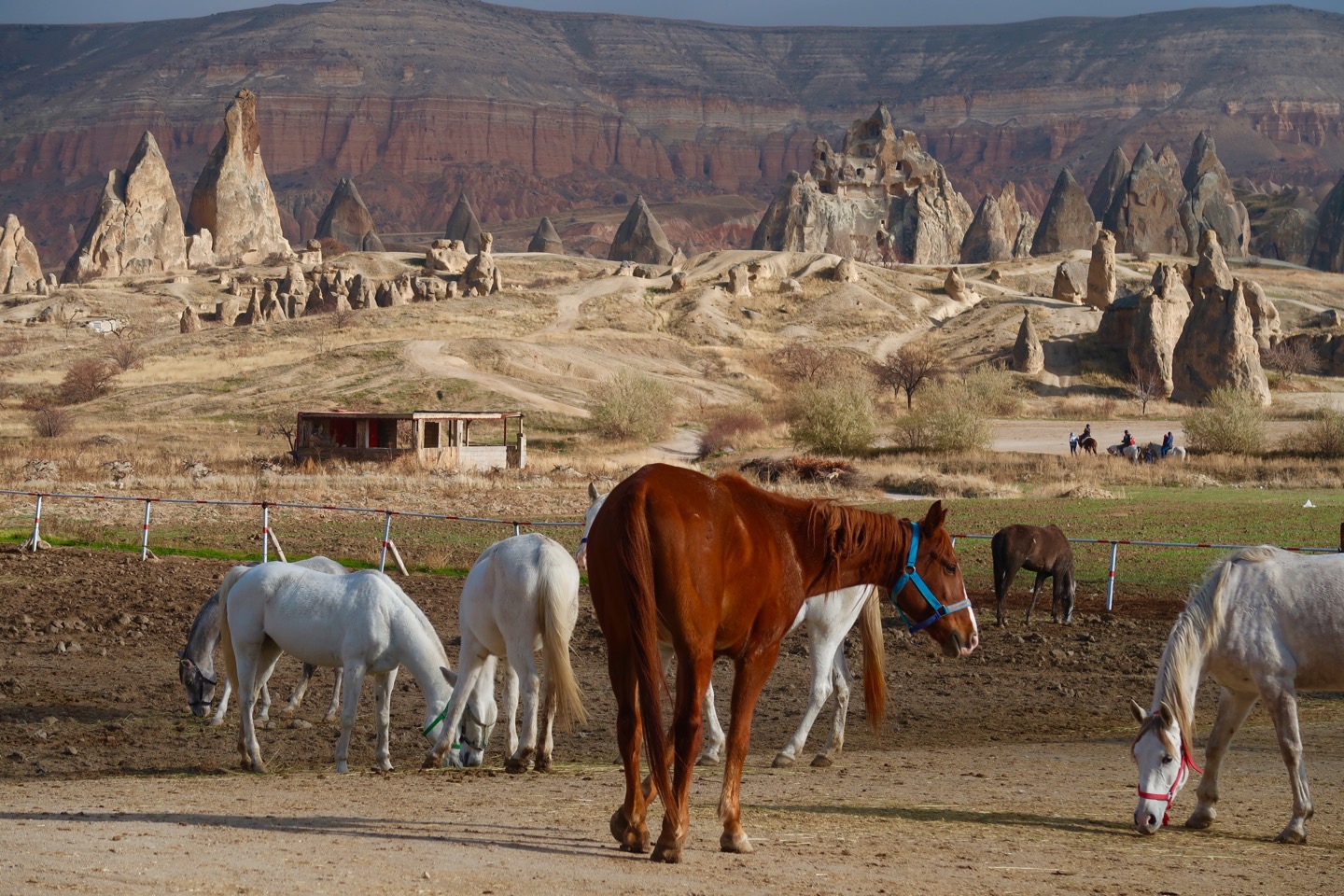
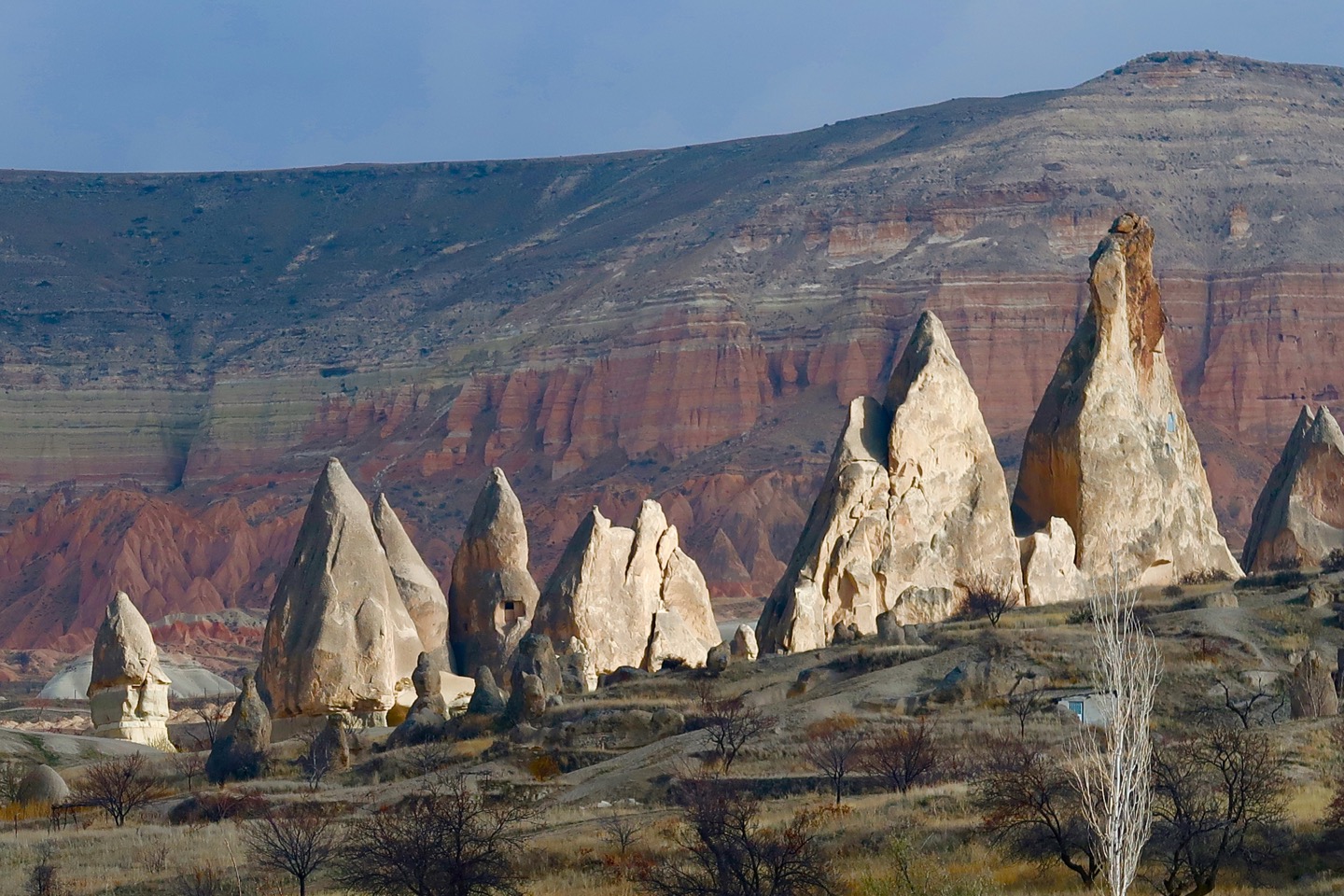
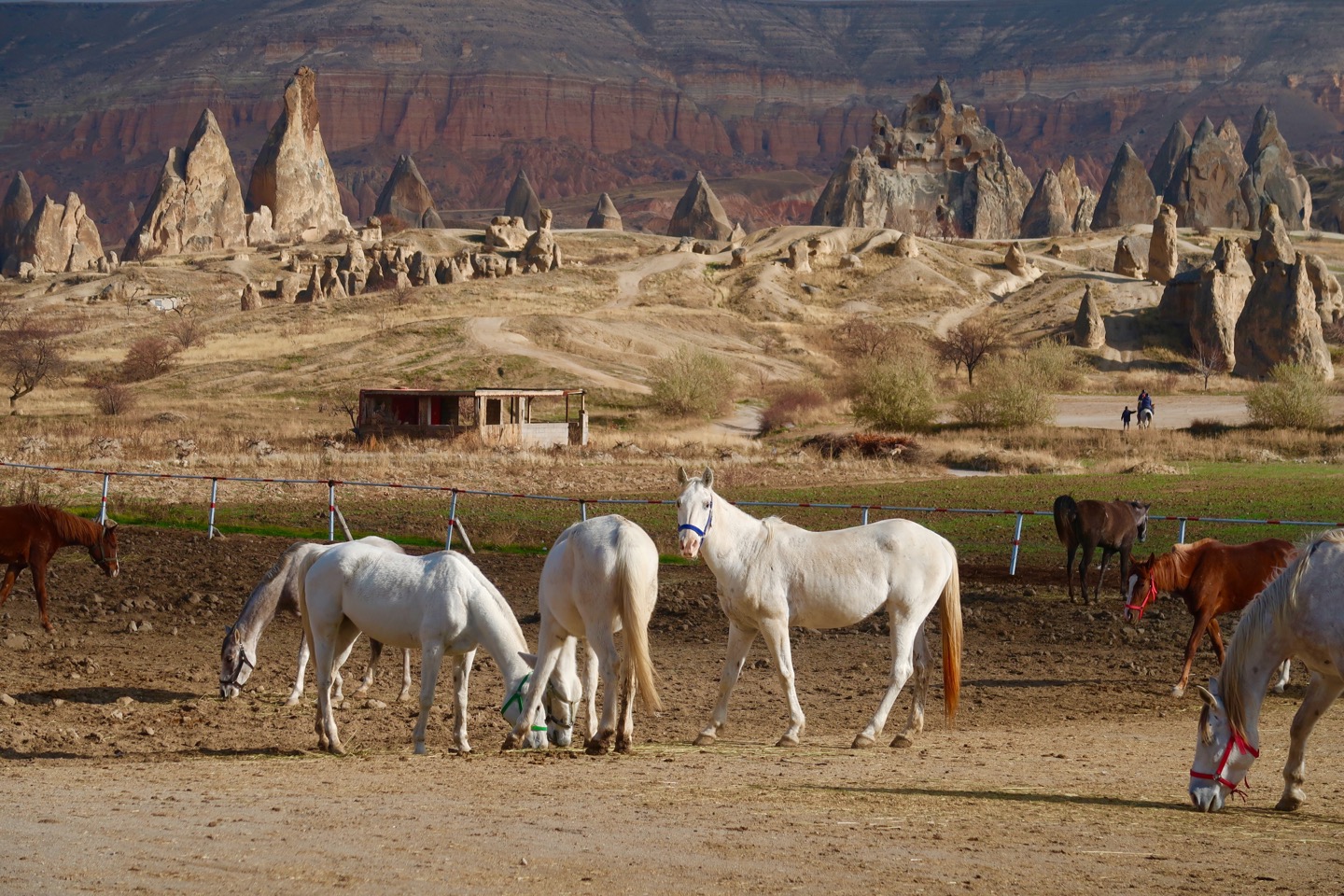
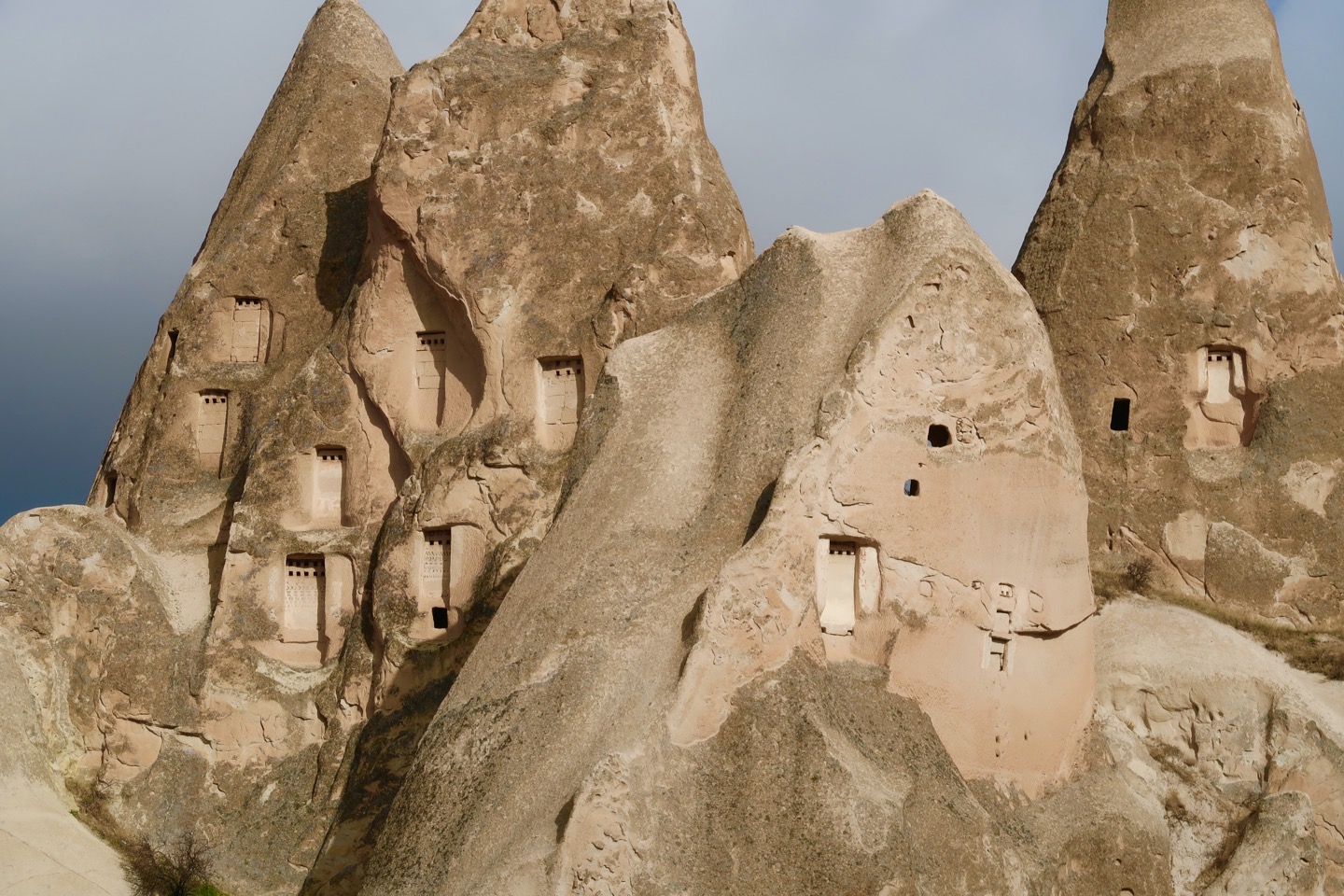
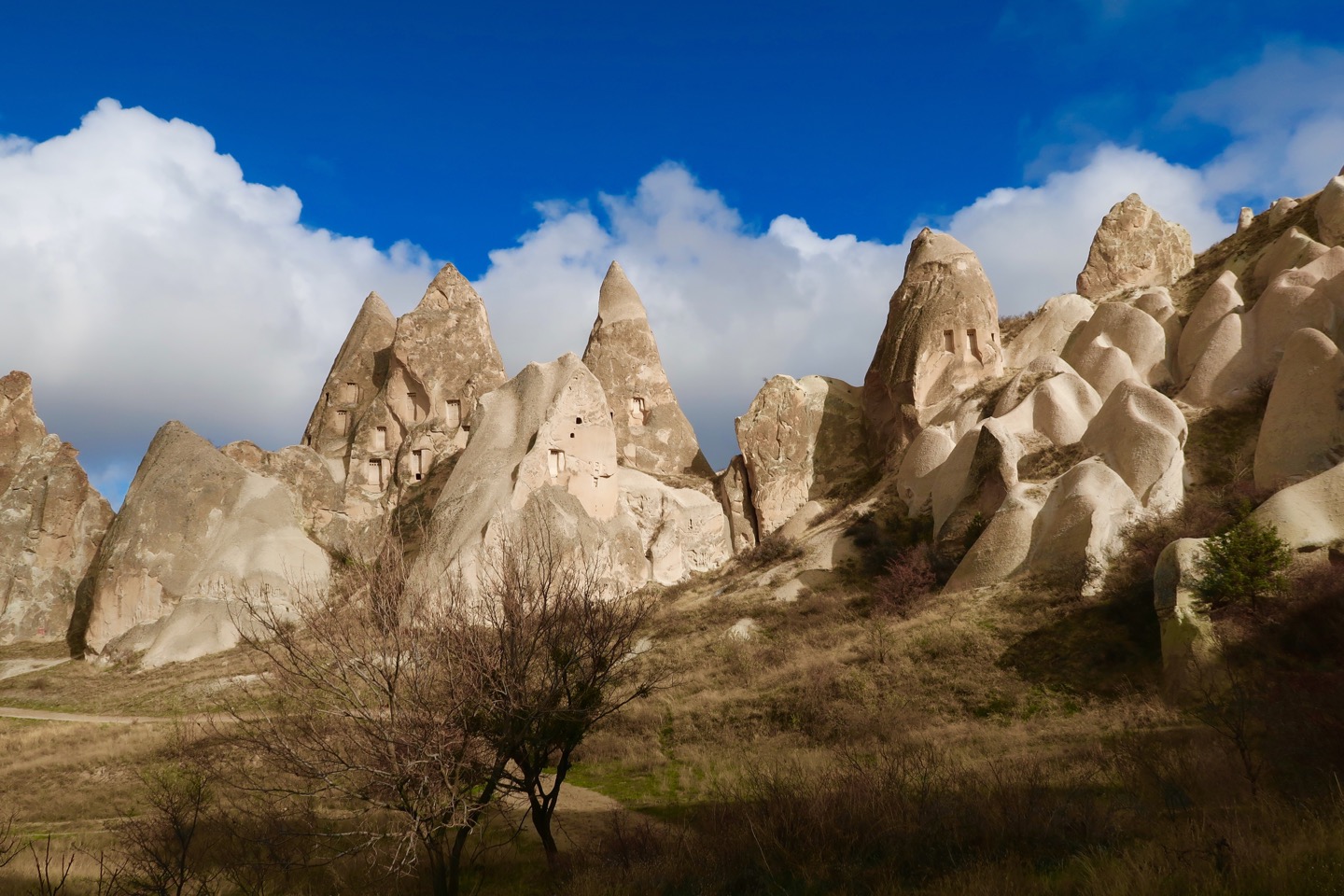
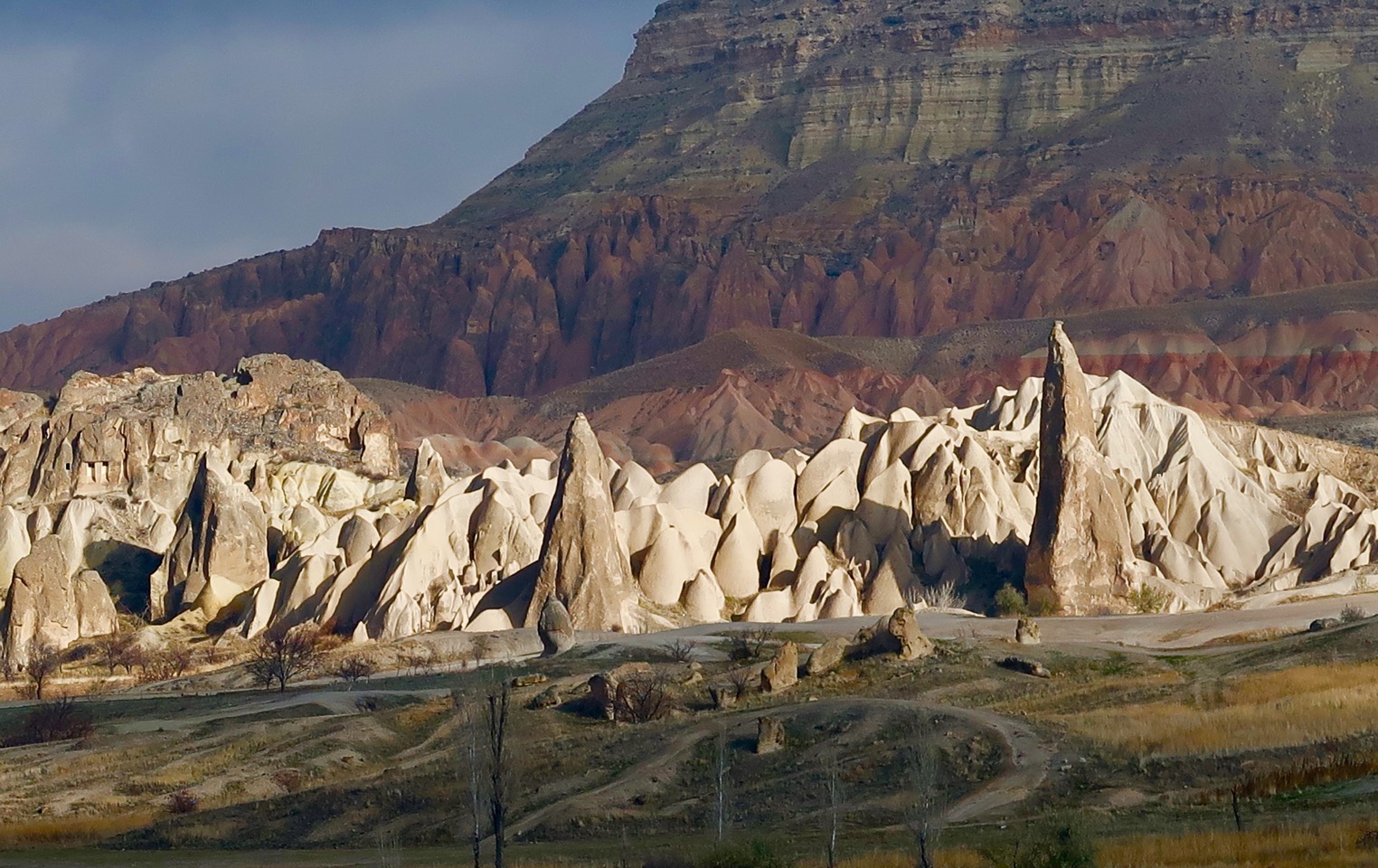
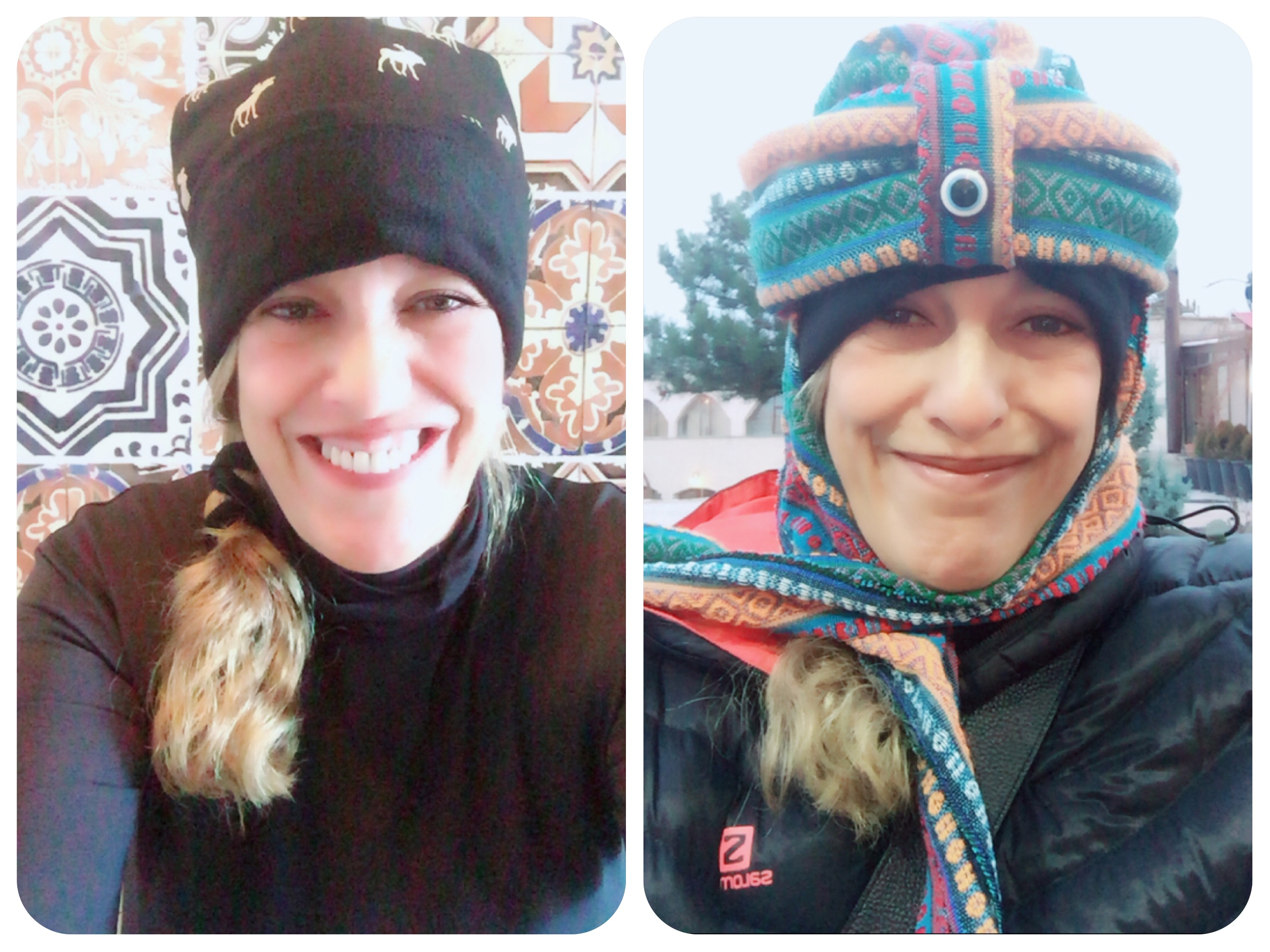
Visiting the Stunning Landscape of Cappadocia, Turkey
I have been fascinated by the beauty of the landscape of Cappadocia ever since I saw the stunning images of its interconnected caves, rock churches and tubular rock formations in a magazine, many years ago.
It has taken me years to get here, but I am finally here, mouth wide open in awe at Mother Nature’s masterpieces.
This area formed naturally, millions of years ago.
It has had human habitation since prehistoric times.
The early Christians, starting in the first century AD, fled to this place in order to escape persecution.
I can see them in my mind’s eye, standing like me in this stunning landscape, not sure if they could believe how lucky they were.
Their houses were already built by Nature, so all they had to do was to start carving out of the soft rock formations, rooms, halls, kitchens and churches.
They did a fabulous job of creating interconnecting cities in the rocks.
With few exceptions, due to damage caused by earthquakes over the centuries, most of what they’ve built is still standing.
Even some of the paintings with which they adorned the churches are still intact.
They planted almond trees, grapes, prunes, apples, pears, quinces, pomegranates, and apricots, as well as pumpkins, potatoes, onions, cabbages, and wheat.
Right now it is winter, and the grape vines are buried in sand, to protect them from the cold and from breaking in the strong storms that will be coming.
Only bits of five stalks and some branches protrude out of the sand.
The area of Cappadocia is VAST.
There are stunning valleys where the sun’s rays play on the undulating curves of the landscape, coloring it with hues of red and pink, yellow and gold.
There are huge cone shaped rocks, some with a large stone balanced on the top, that look like fairytale towers, or like the penis of a very huge god. (Hence the local name of one of the valleys is “Love Valley.”
On days when the weather is good, tourists can go up in hot air balloons, to see the area from above.
The balloons look big and colorful against the blue sky.
There are over two hundred underground cities in this region.
200 have been found, but the estimate of the actual number of underground villages and cities is much higher.
These underground cities connected the villages above them to a complex of subterranean tunnels, with rooms, halls, cross shaped churches, wineries, grain storage, stalls for horses, underground graves, kitchens with air shafts and water wells.
The underground cities were expanded in the Byzantine era, when early Christians had to hide from persecution.
They also went to the hills, building whole cities in the rock caves, some of them beautiful beyond description.
A much earlier subterranean settlement, about 5,000 years old, was discovered in the area.
This underground city is thought to be the largest in the world.
There is a famous canyon called the Ihlara Valley, with sheer cliff walls on both sides.
On the bottom of the canyon is a footpath for hiking by the river.
But this is not just a lovely nature hike by a river full of fish and sweet water.
On both sides of the river there are beautiful churches carved into the rocks, some with original unrestored wall fresco paintings.
You have to climb steep sets of stairs to enter the churches, but it is so worth it.
There are tea gardens where you can have fresh pomegranate juice (called Nar juice in Turkish), have some Chay (tea) and eat Gosleme (pronounced Gozlemé with an emphasis on the last syllable).
Gozlemé is a famous food eaten all over Turkey.
It is like a crepe, or a pancake, cooked on a griddle and folded in half, with either cheese, spinach or potato filling.
The area is charming, with a few cities and smaller villages where you can stay, dine, explore, organize transport or book a tour.
Some of the hotels are in renovated old caves, with comfortable rooms, modern showers with hot water, air conditioning and heat, comfortable beds, flat screen TVs and good breakfasts, offering local cheeses, breads, and produce.
We did lots of hiking every day, preferring to enjoy the majesty of the landscape on foot and alone, instead of visiting only the famous places where all the tourists go.
We walked 15-20 kilometers daily, walking very leisurely, stopping frequently to admire the beauty of the area.
We had days of hiking through landscapes so Divine, it felt truly holy.
One day we hired a taxi driver, named Yashar, to take us to visit the more remote sights that are not possible to reach by foot.
We did not intend to hire a private driver at first. We had booked one of the very affordable tours that are offered all around Göreme, the main town where most tourists stay and where most cave hotels and restaurants are located.
There are a few tours that everyone does, including a red tour, closer to Goreme, a green tour, a yellow and a silver or blue tour.
Each tour is a day long, and some include your lunch and entry fees to the open air museums.
The morning of our group tour, the driver was half an hour late to pick us up.
He then took us to a smoky tour office in town where they collected the money.
We sat there listening to two Turkish girls arguing forcefully with the tour company.
They told us we must wait, as some of the tour group people were still on a hot air ballon ride, and they didn’t know when they would arrive.
The girls told us that their argument was about the day before.
They had booked the red tour, but the company was so late to start, that they did not visit some of the places that were listed, even though they had paid to see them.
Jules was visibly annoyed at the delay.
I walked across the street to a taxi stand, to inquire about the price of hiring a car and driver for the day, to do the green tour to the remote Ihlara valley, and visit all the sights.
The price was only slightly higher than the tour group price for two people, not counting the entrance fees.
I walked back to the smoky office, demanded our money back and we sat in Yashar’s comfortable new taxi and had a great day.
It is always nicer if you can, not to travel in larger groups.
Groups take time to get on and off the bus, and seeing nature as part of a group of people who chat and smoke, is not much fun.
Yashar turned out to be a friendly, talkative man.
He would point to the sheep in the field, and say, “Shish kebab!”
We listened to sweet Turkish music, and Yashar whistled all the tunes or imitated birdsongs.
Cappadocia has a great soul.
The painted churches are amazing, and there are village women selling hand made dolls and dried fruit like apples, mulberries, prunes, and apricots that they had dried themselves, as well as nuts, beans and home grown dried herbs.
The place has a relaxed feeling and the people really try to please their guests.
For me, being able to drink fresh pomegranate juice while hiking, was a great treat.
The food is great and there are a lot of vegetarian choices.
We ate versions of the local Turkish food that are usually made with lamb, in vegetarian versions, and they were yummy.
We had clay oven-baked vegetables, soups, home made dumplings in a hot yogurt sauce which I loved, Gozelmè, oven baked halva with pistachios, and goat milk ice cream.
There are lots of souvenir shops everywhere.
There are shops selling Turkish rugs and pottery with Byzantine patterns.
They also sell a local gemstone called Zultanite, or Sultanite, named to honor the 36 sultans of the Ottoman Empire.
The Sultanite stone changes its color when it is seen in different light.
It is truly beautiful as it changes from light rose, to yellow, to green, blue, purple and red, depending on the light of the day or in the room.
Instead of taking home as a souvenir a T-shirt that says, “I ❤️ Cappadocia,” we bought two rings with Sultanite stones in them.
We LOVED Cappadocia and its laid back atmosphere.
I adored its gorgeous landscapes, the tea gardens, the people and the food.
I feel so full of gratitude for being here... my heart expanded from the beauty of this place....
From Cappadocia, sending you love, blessings and light,
Tali